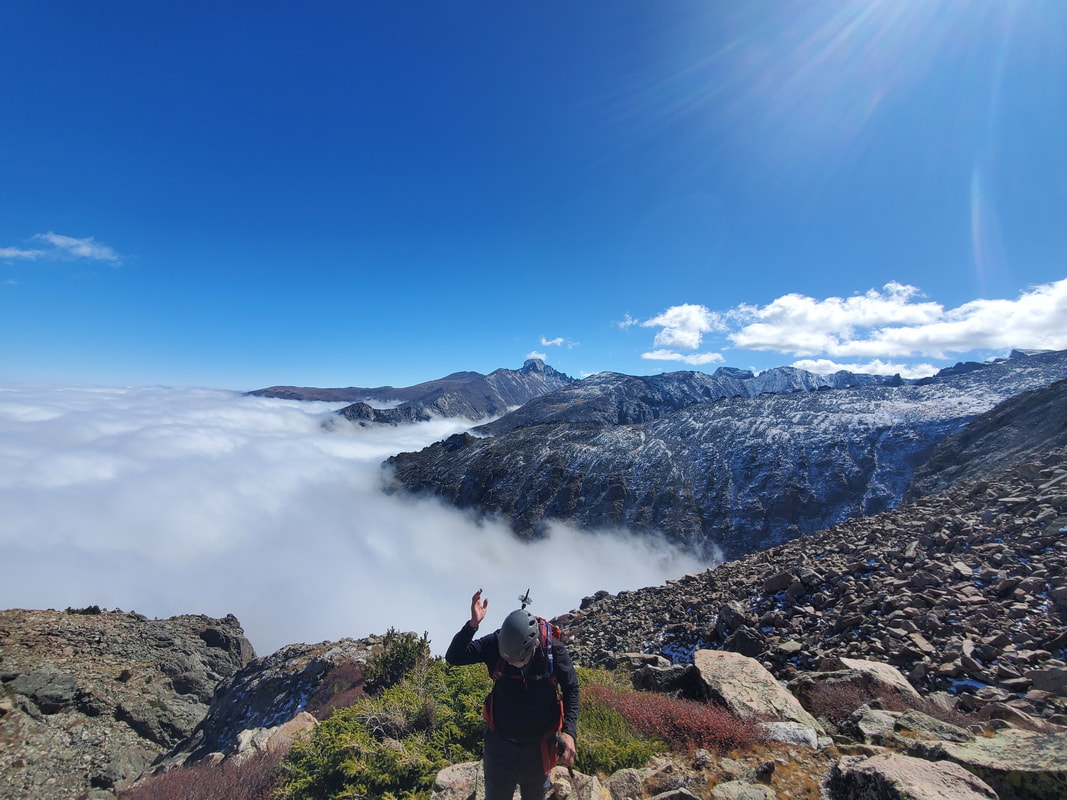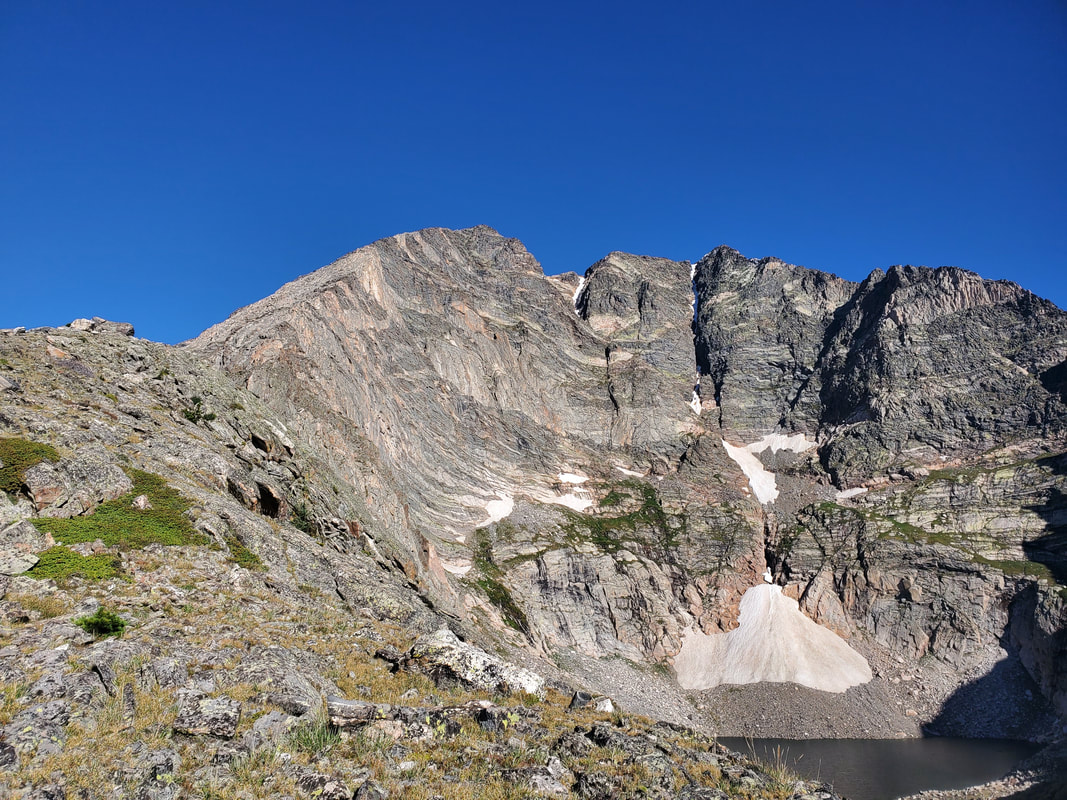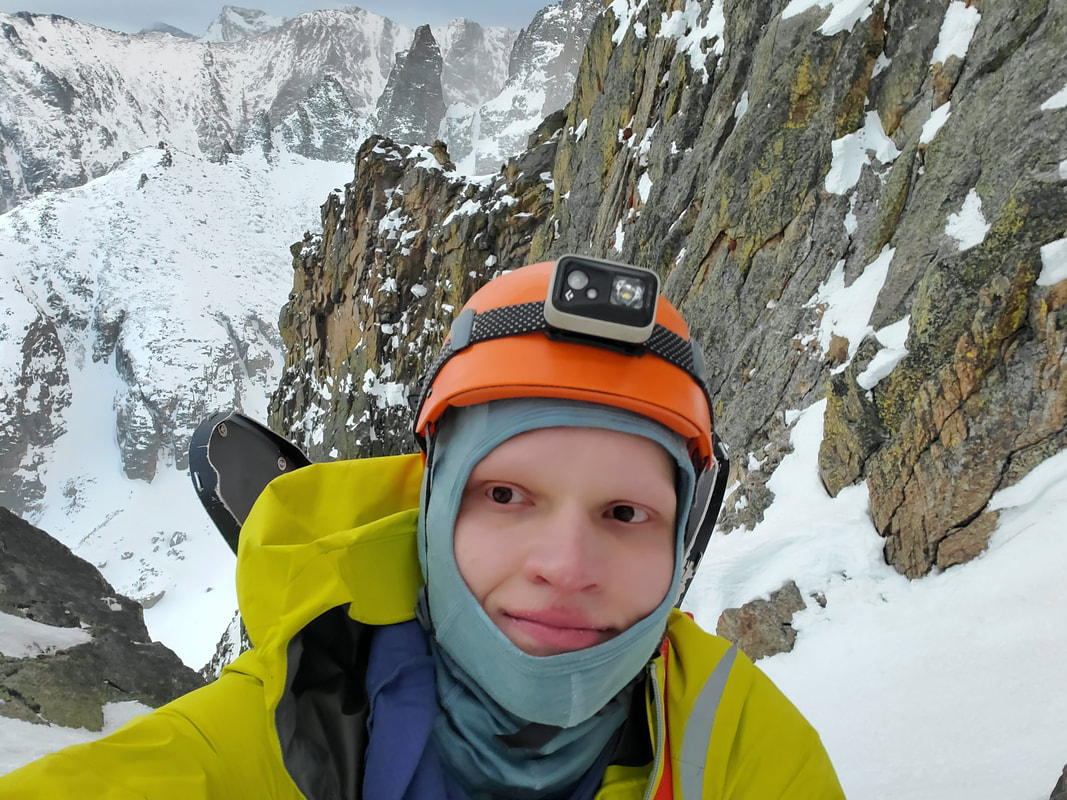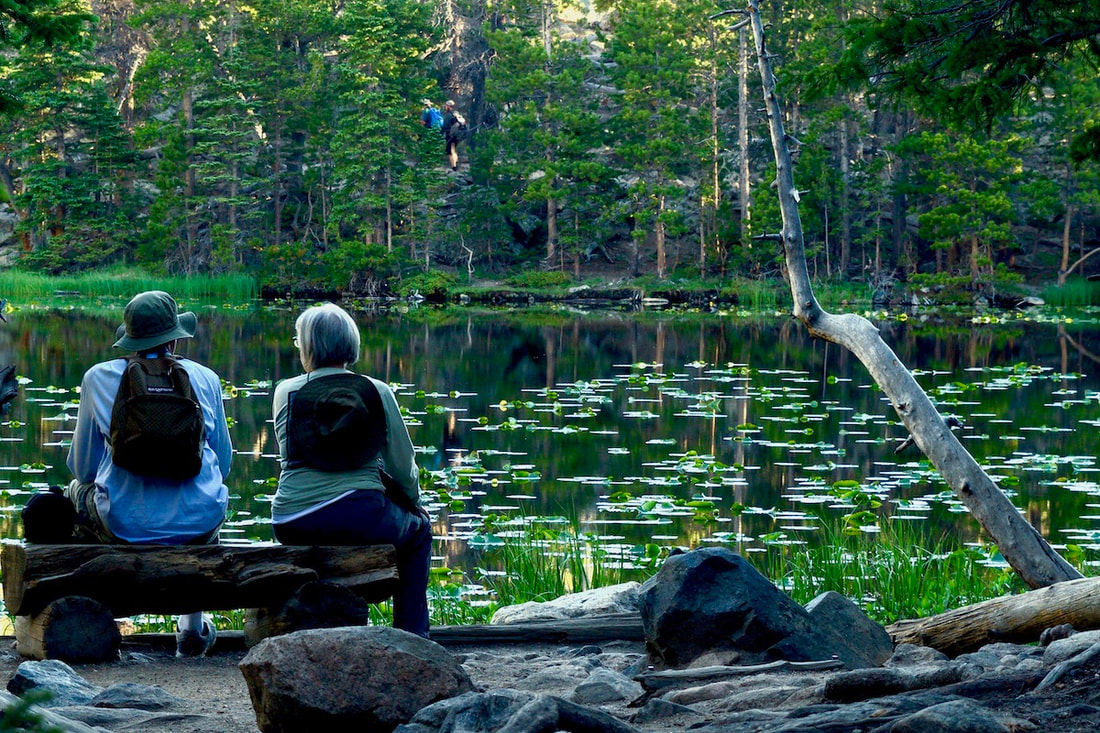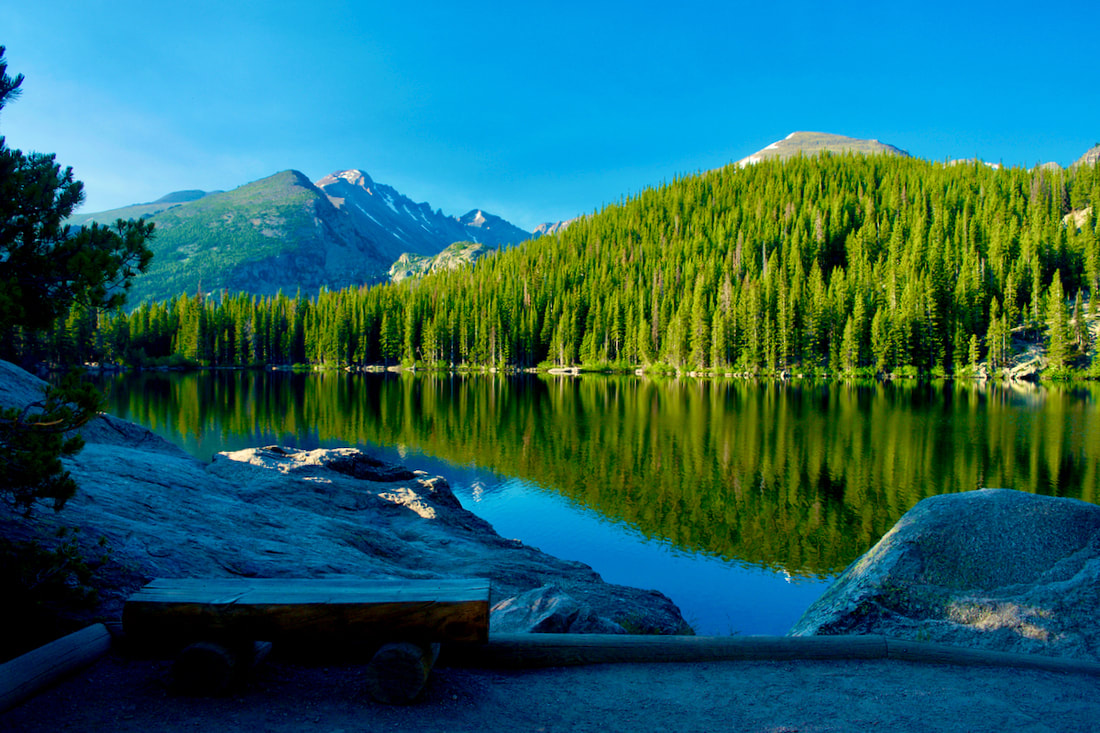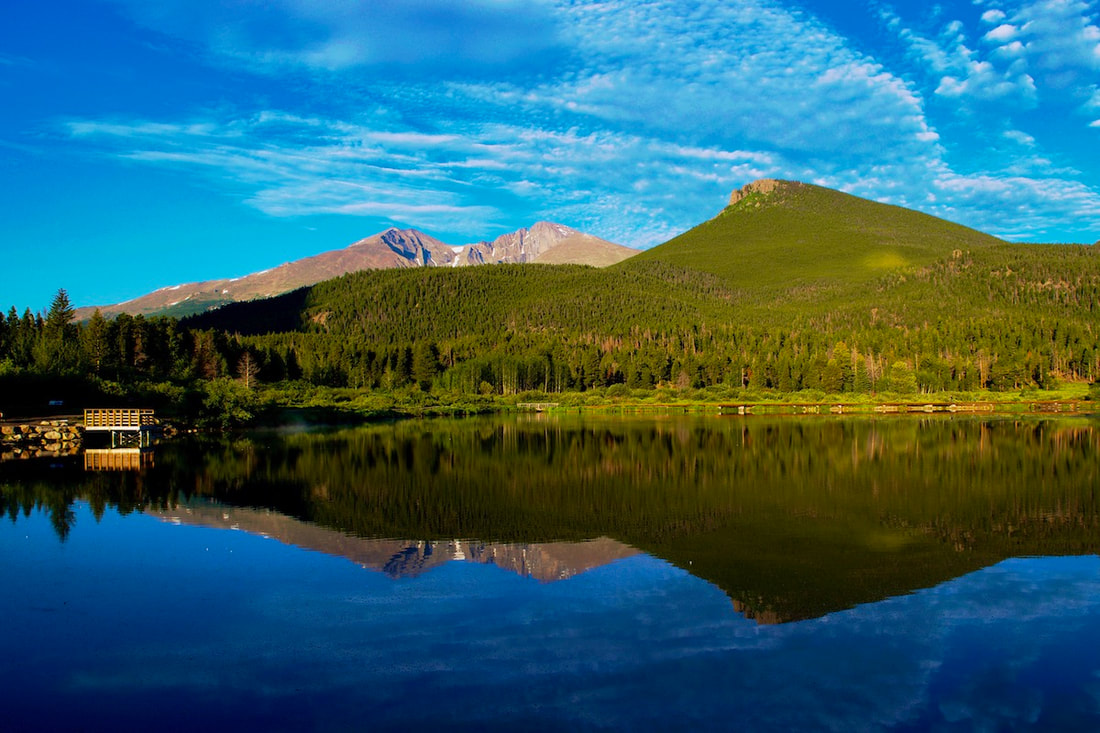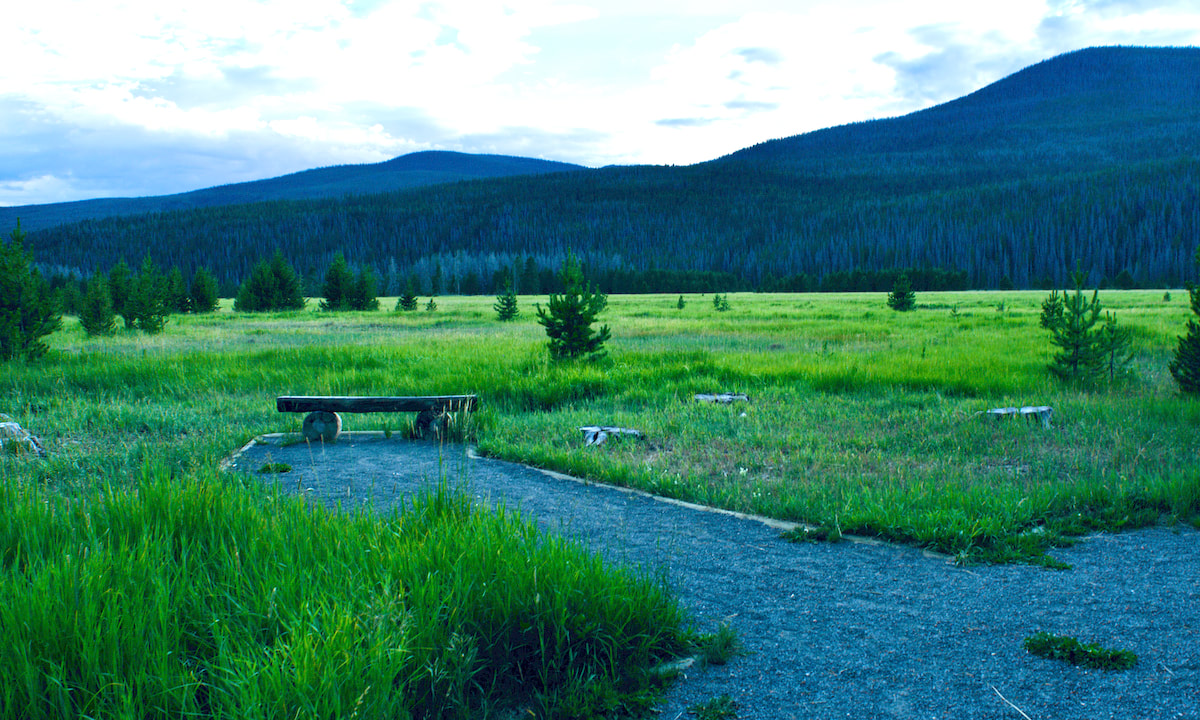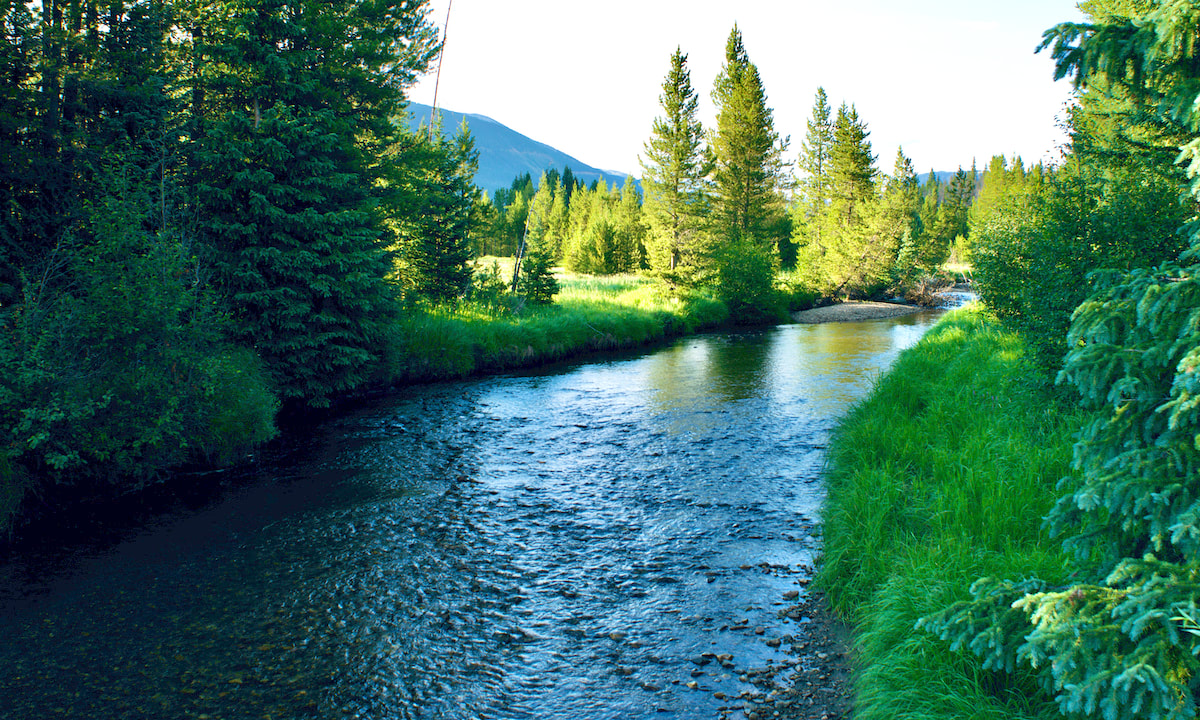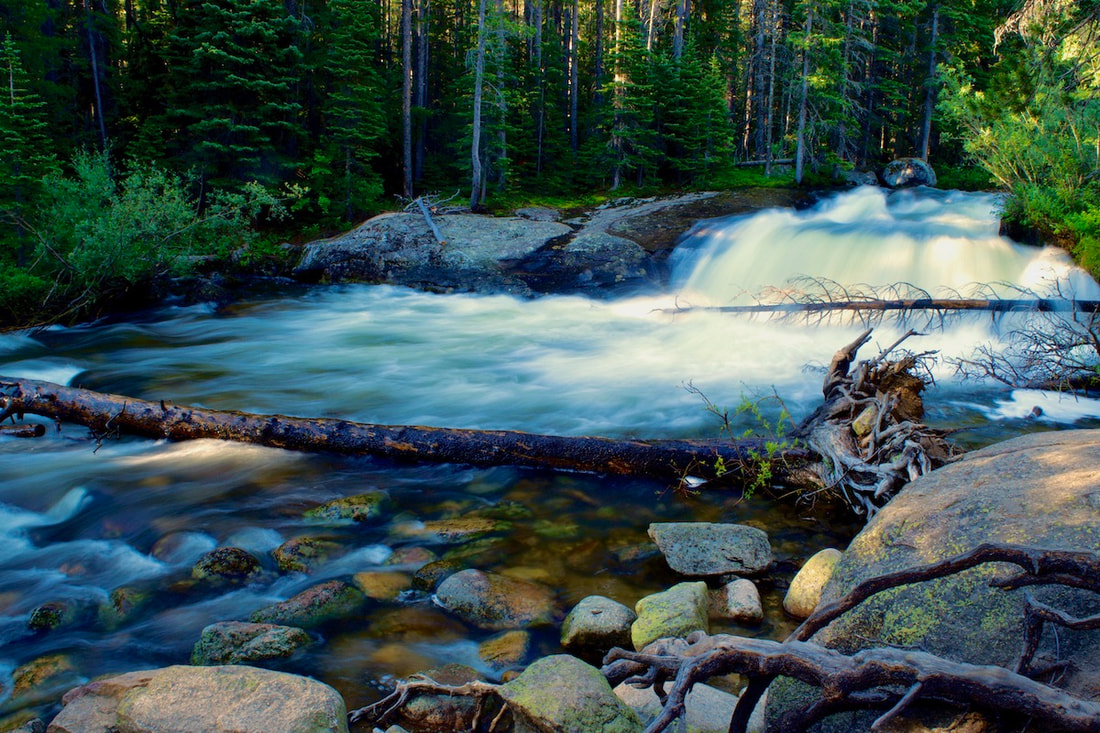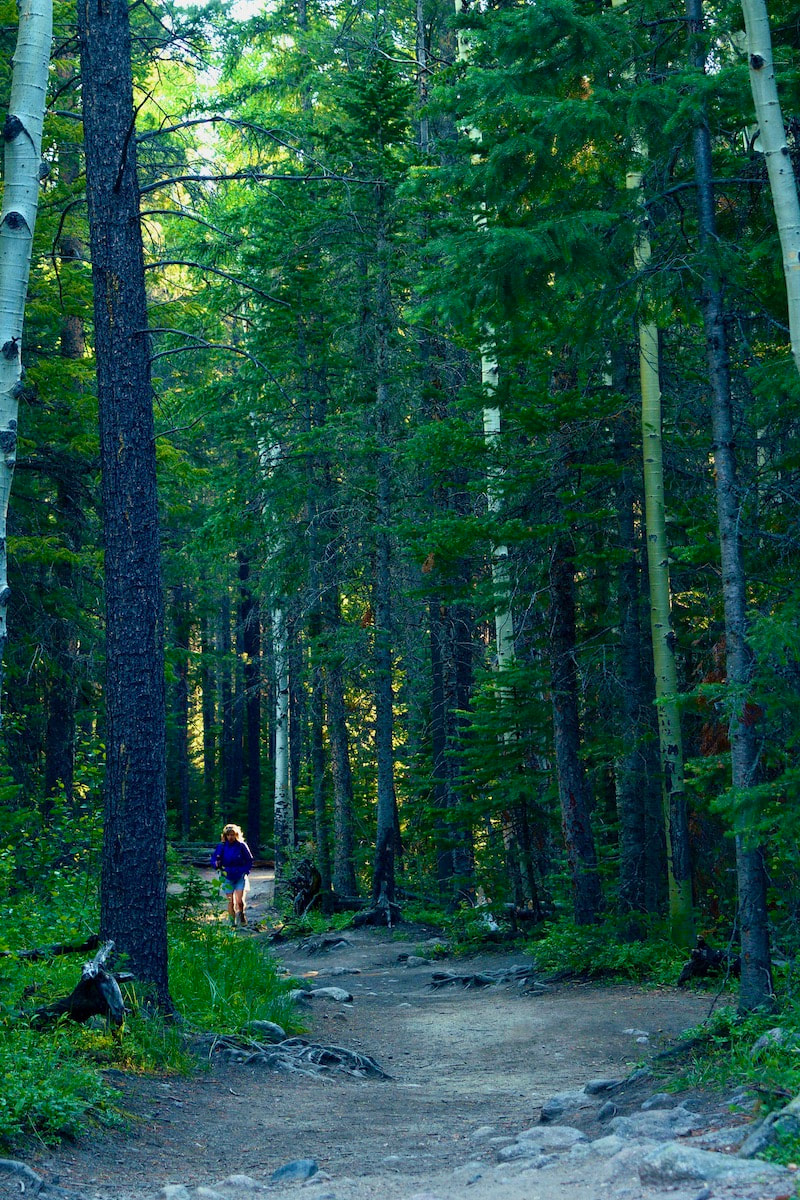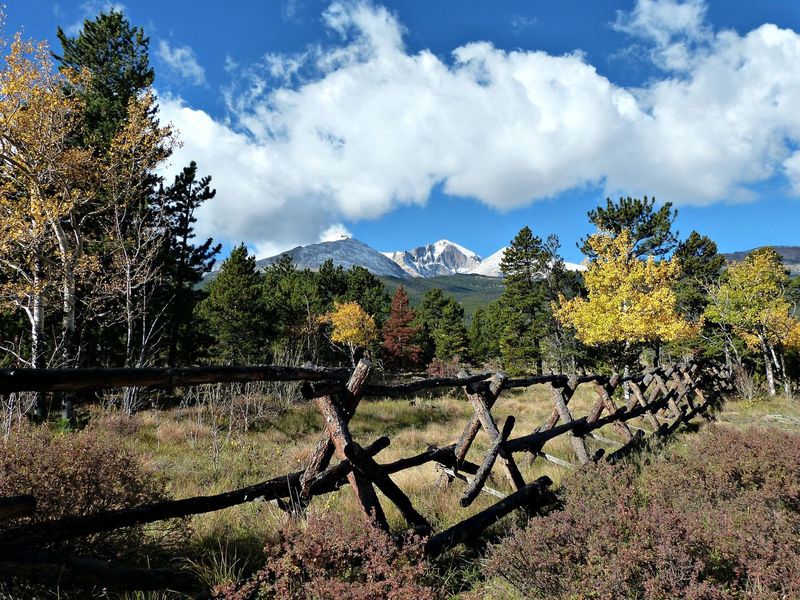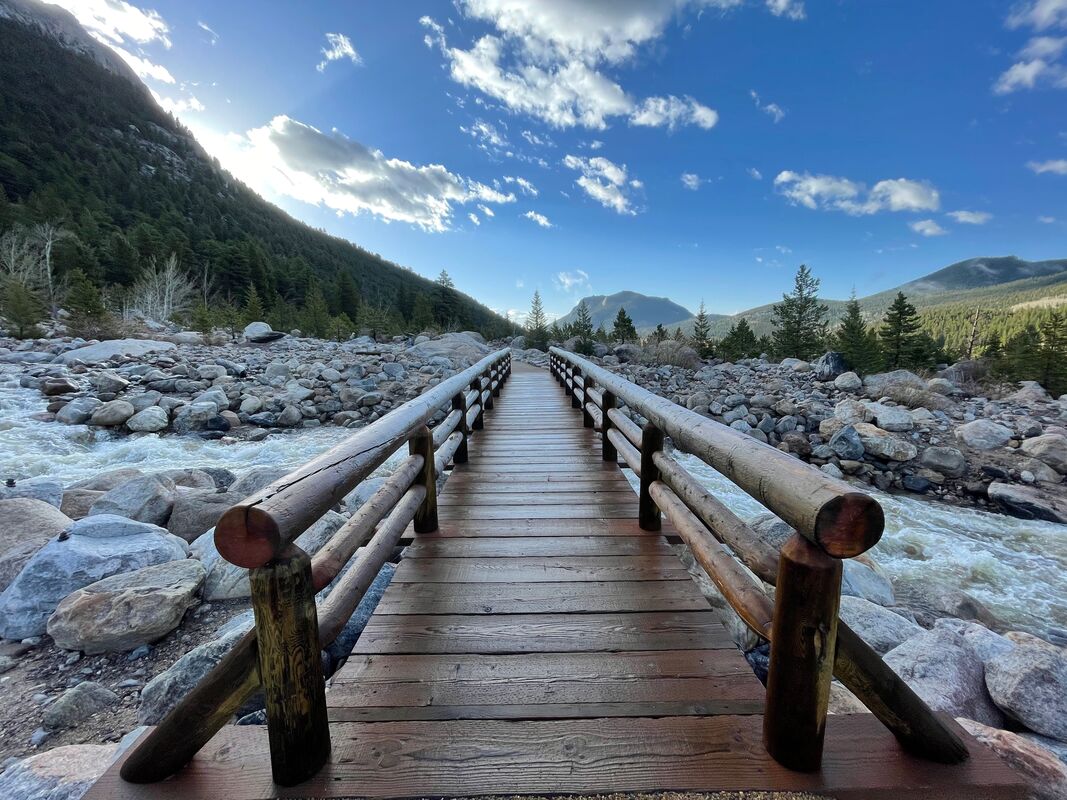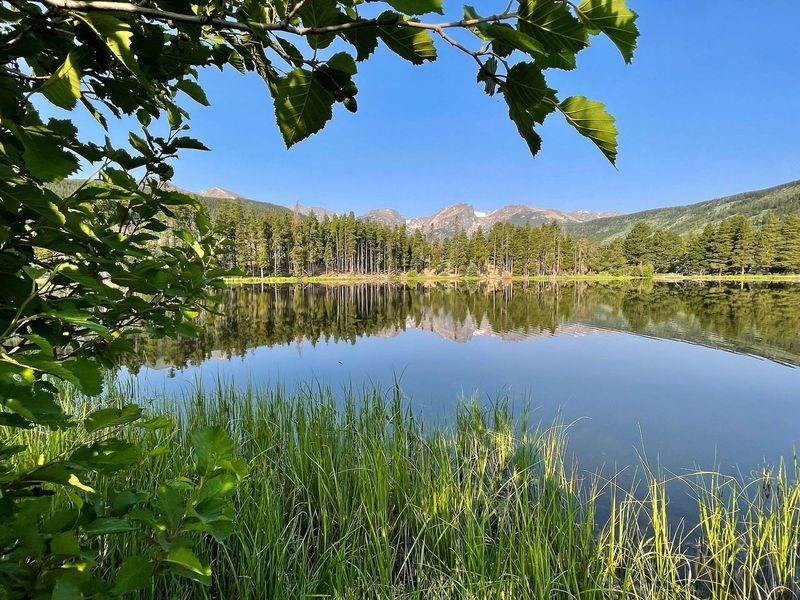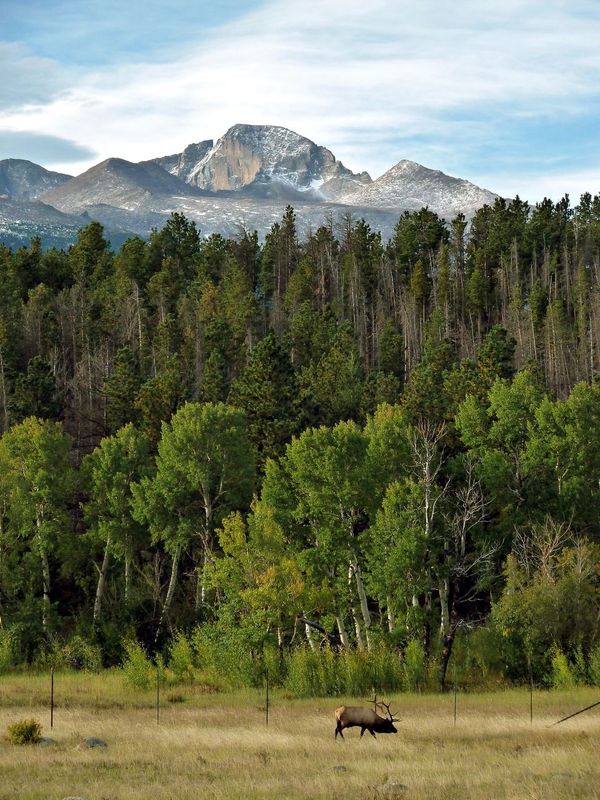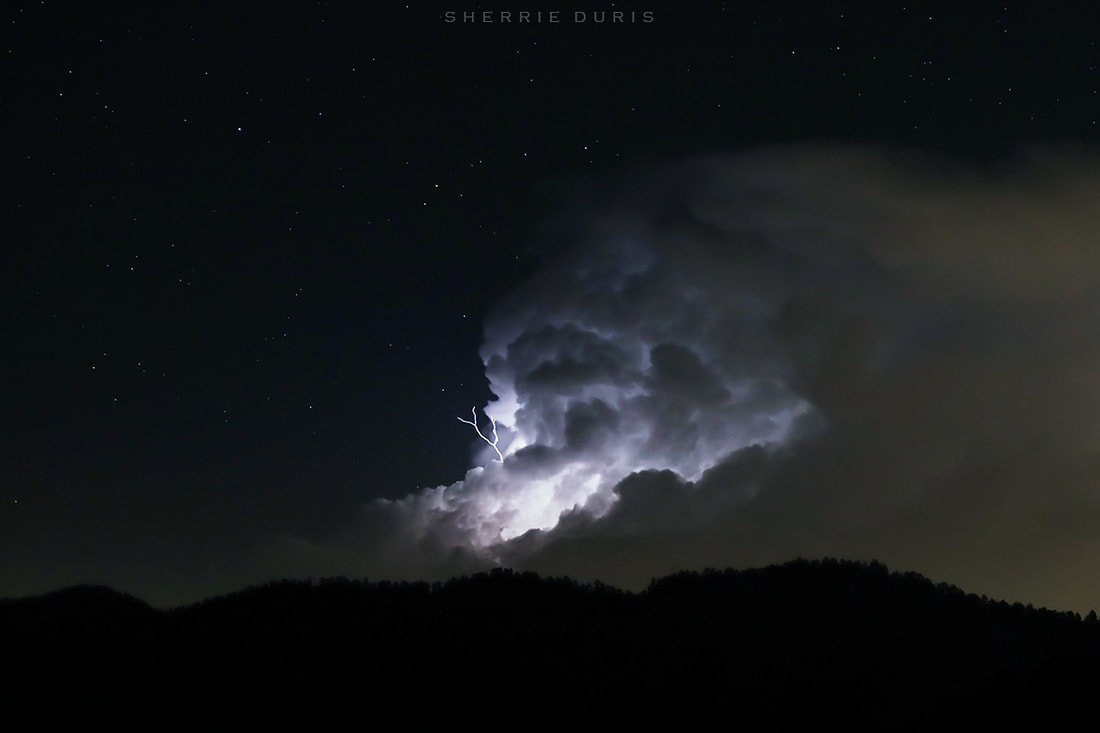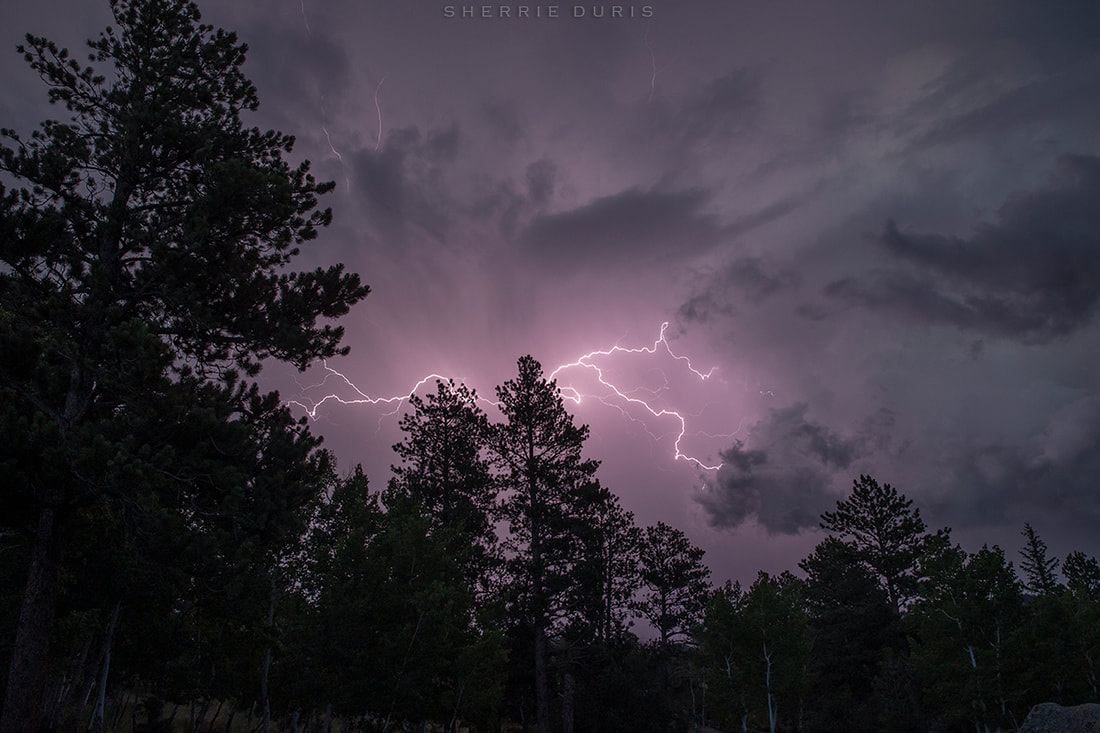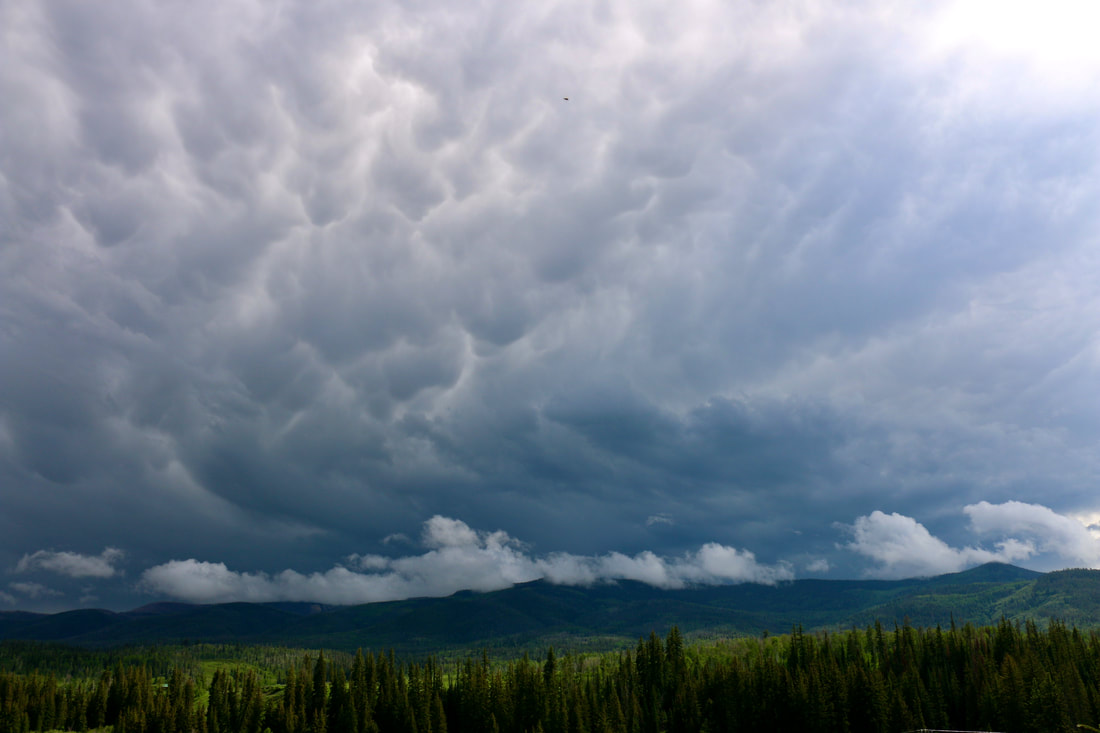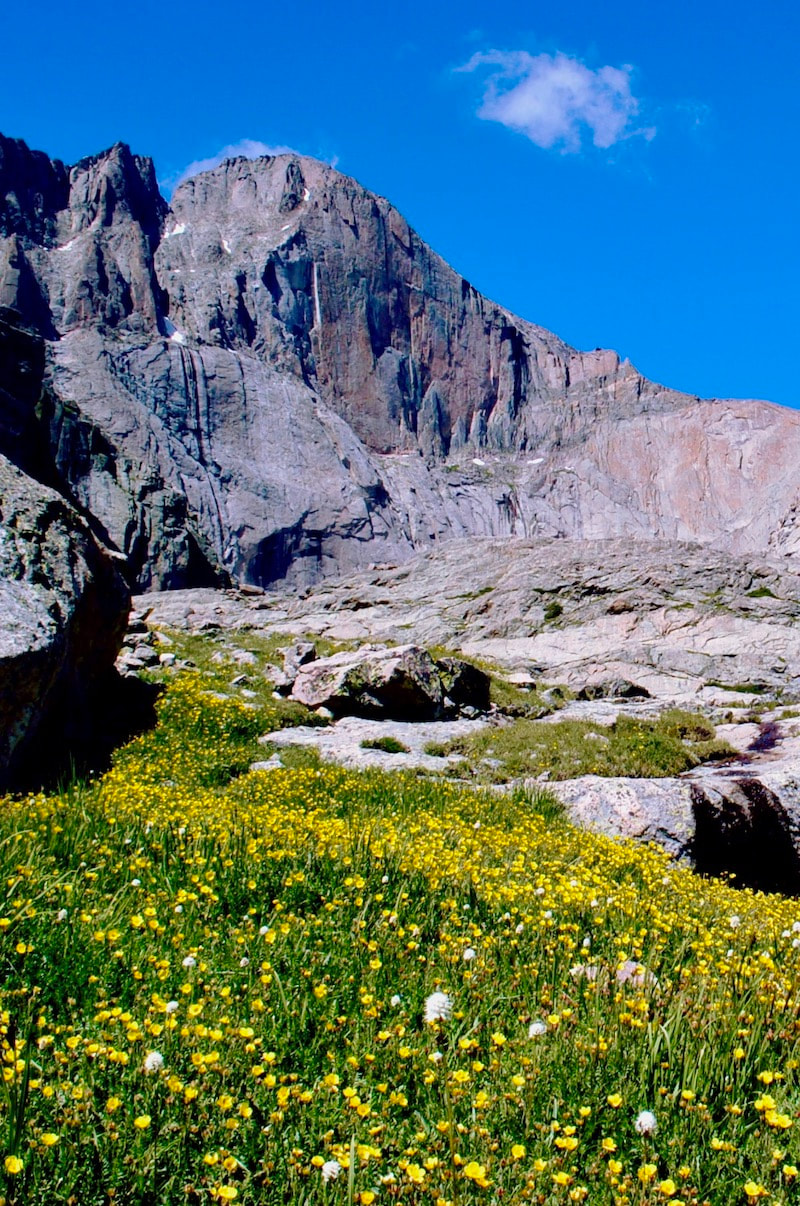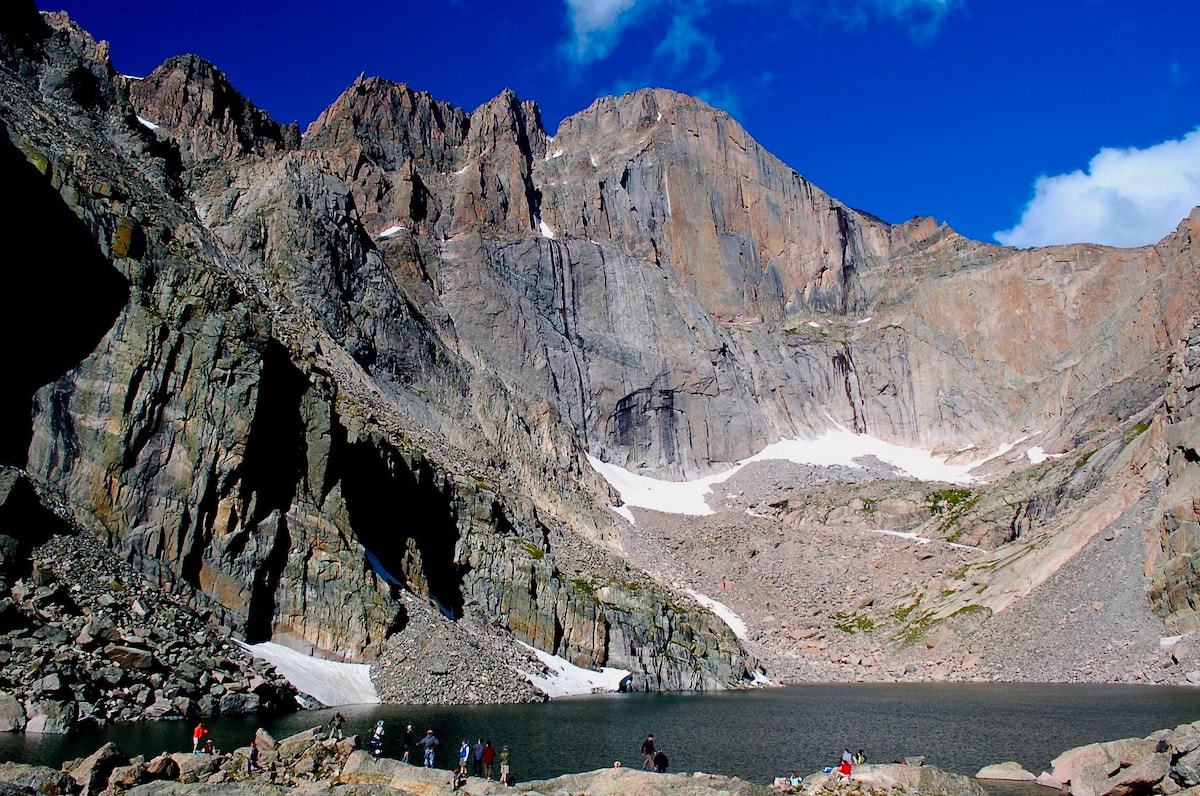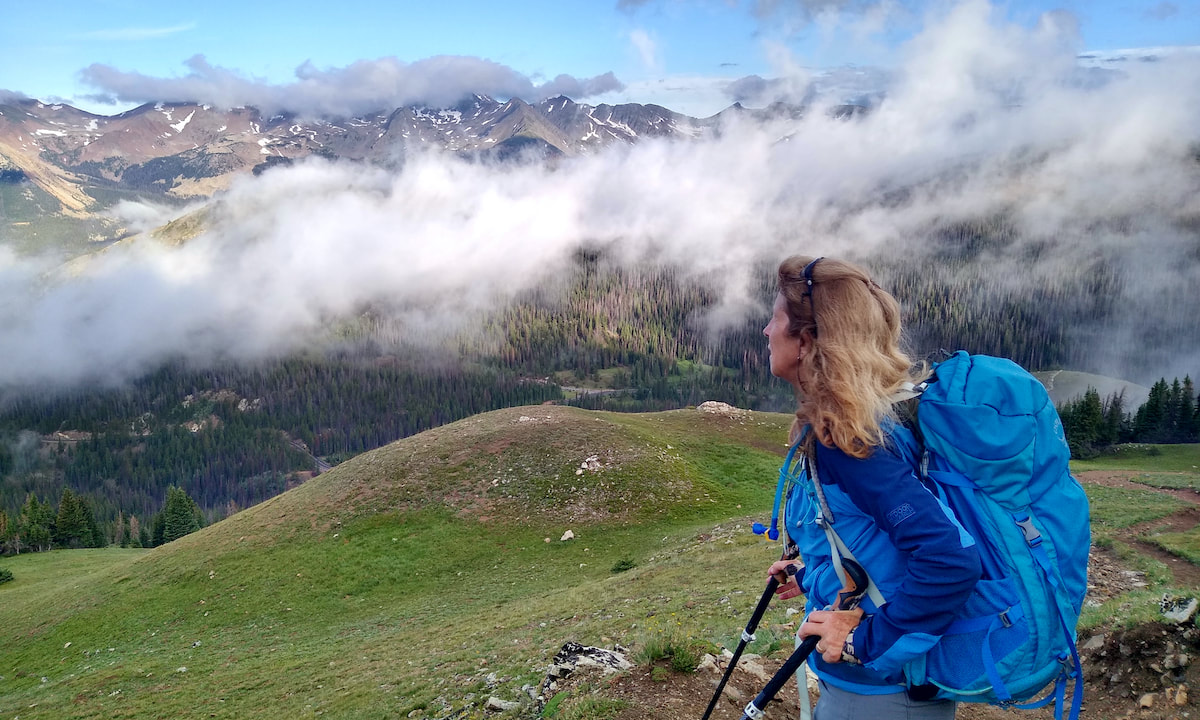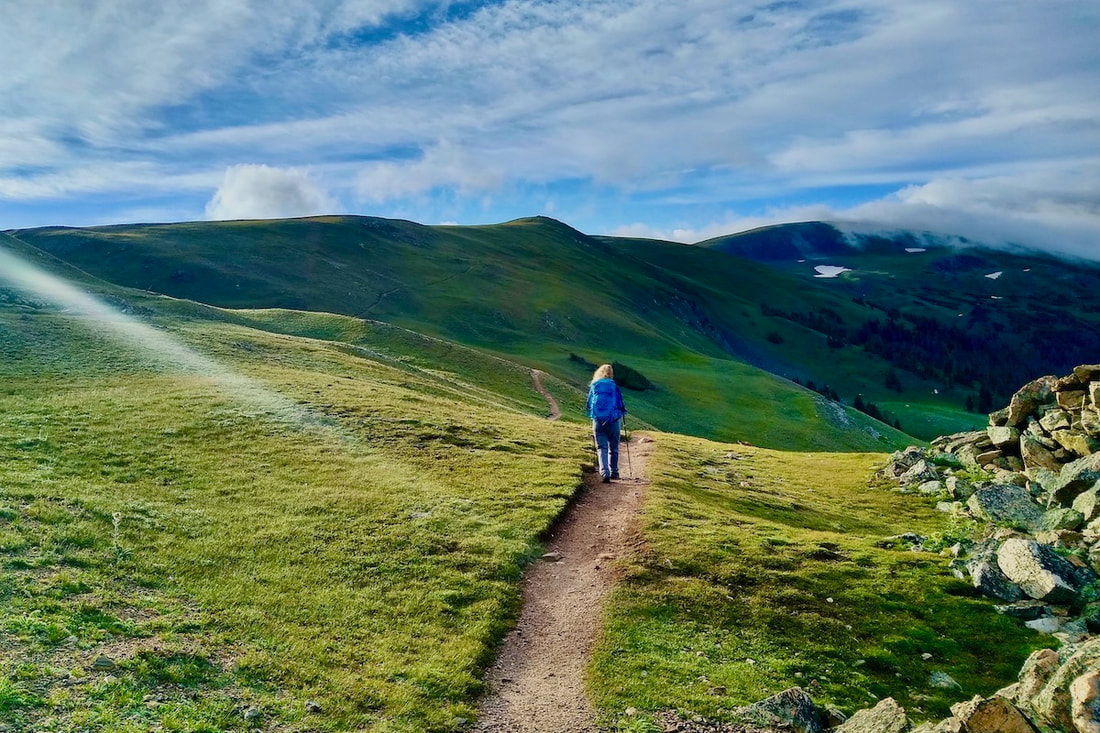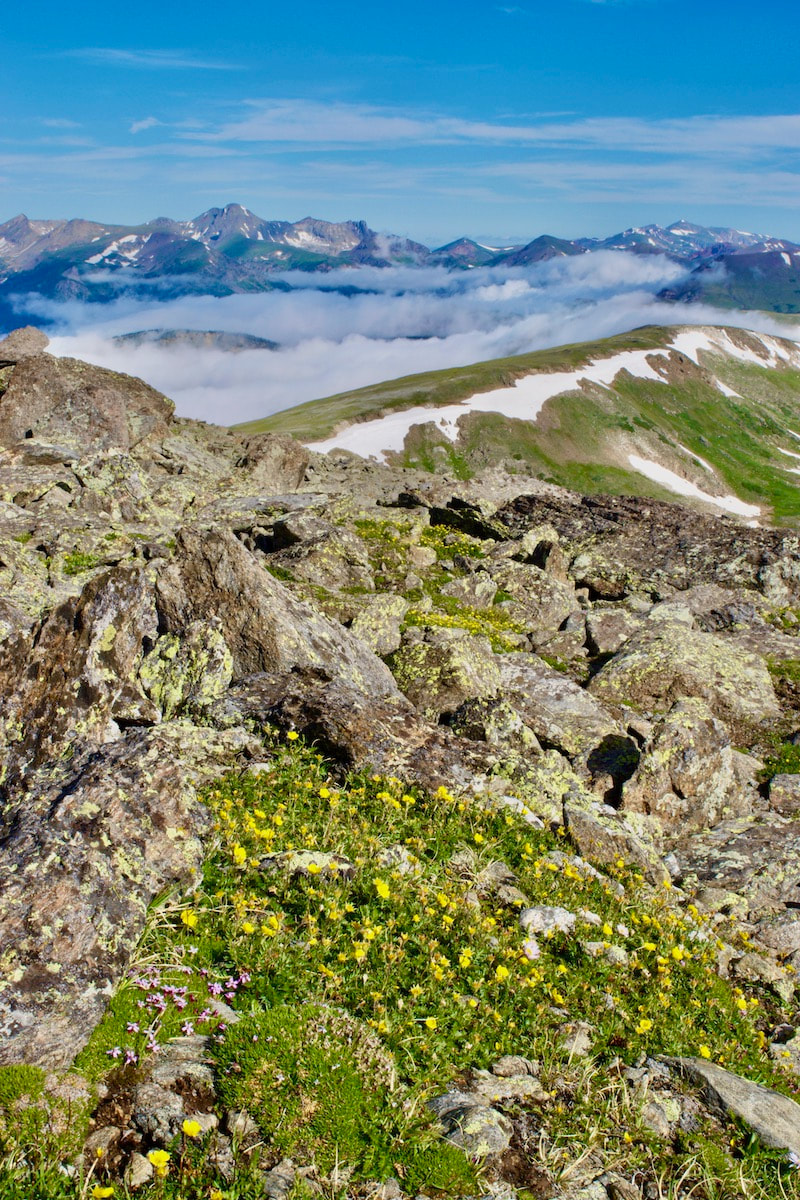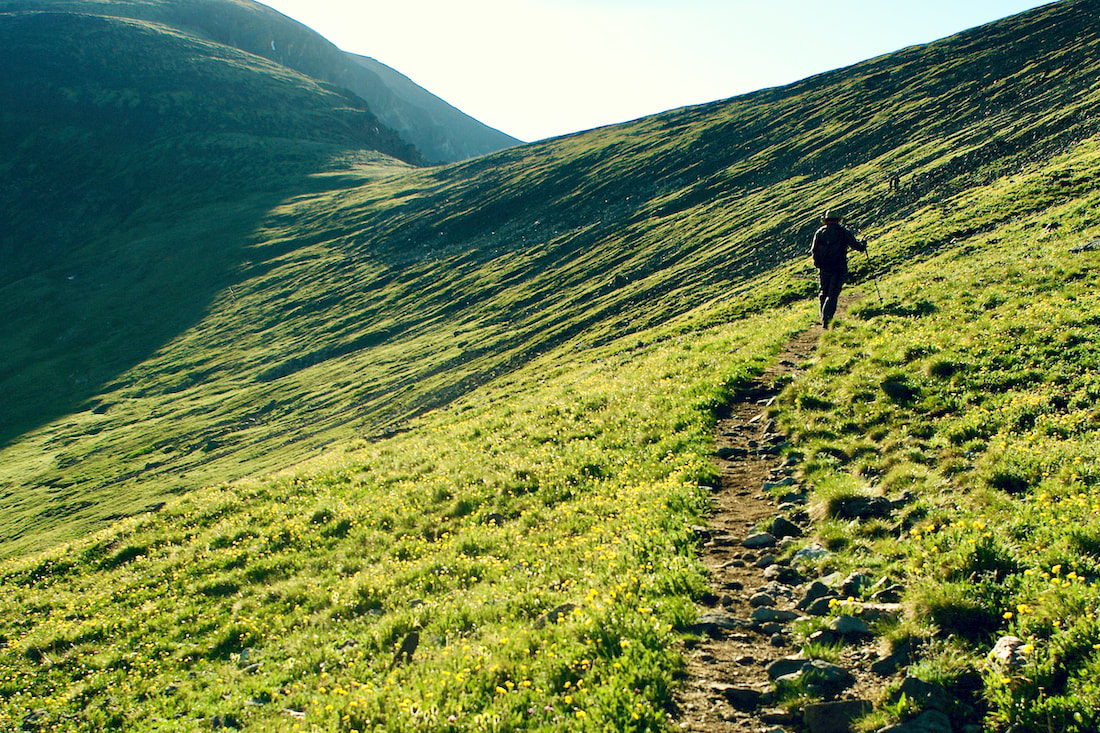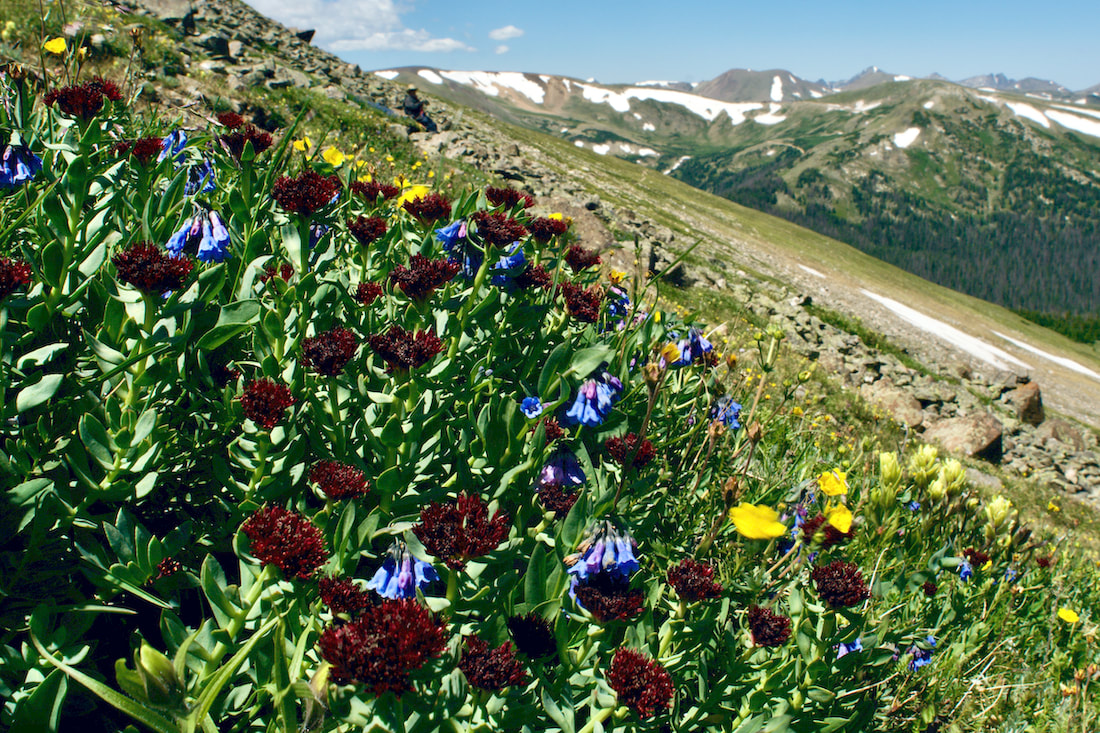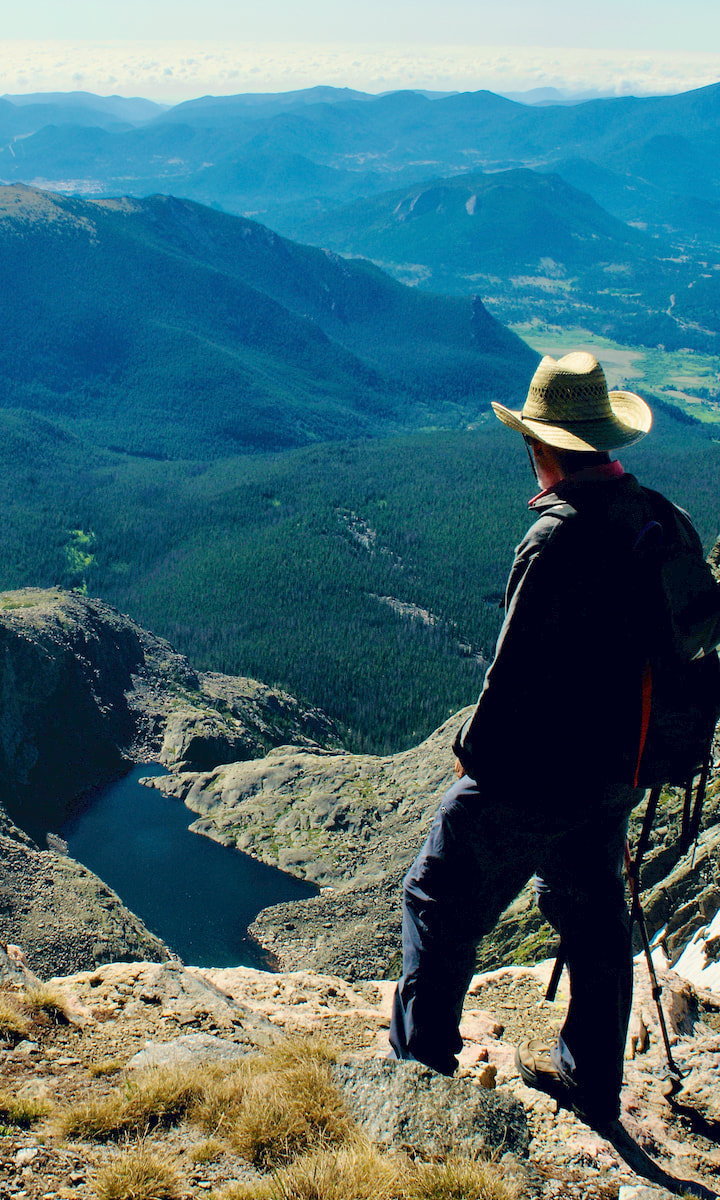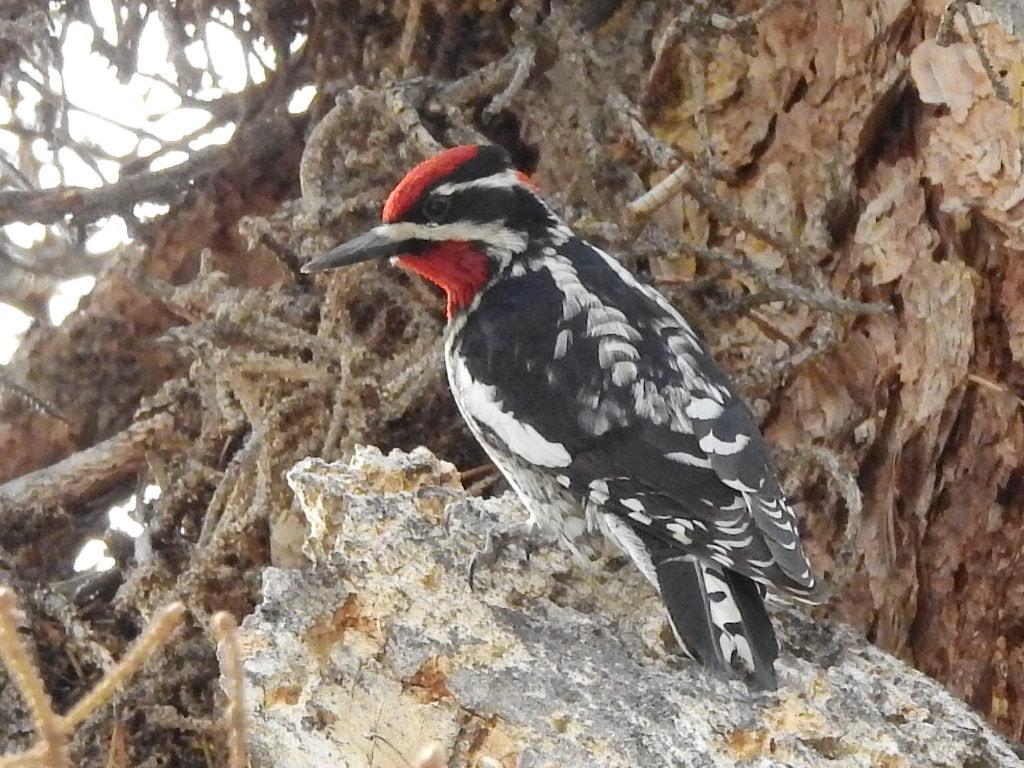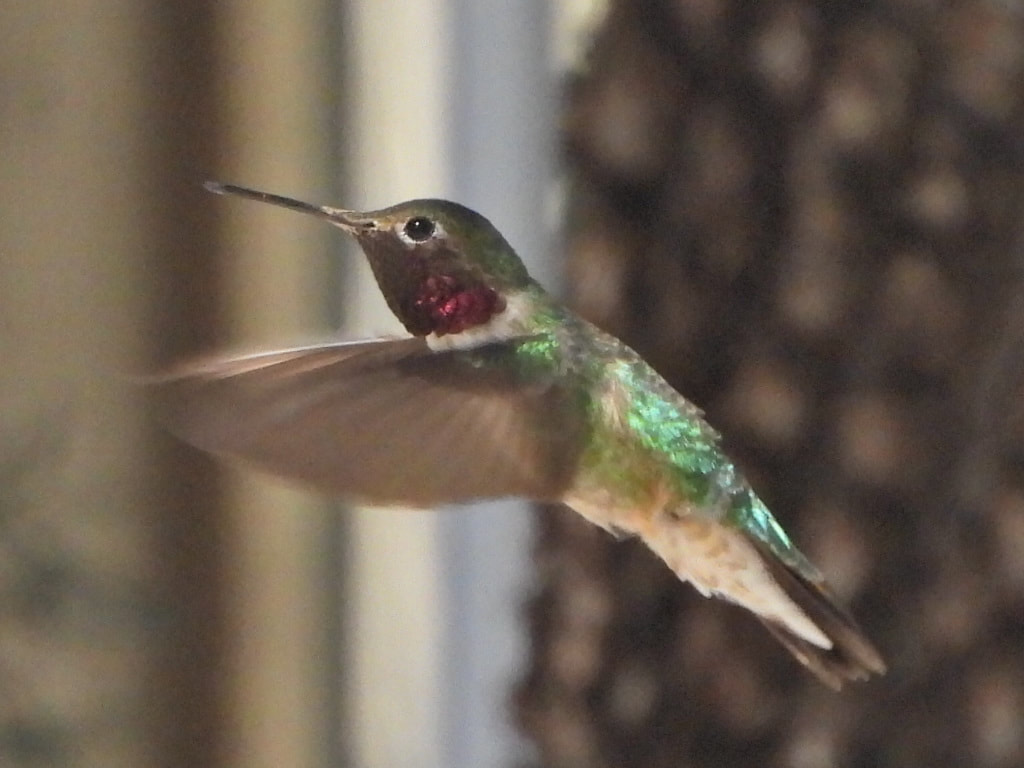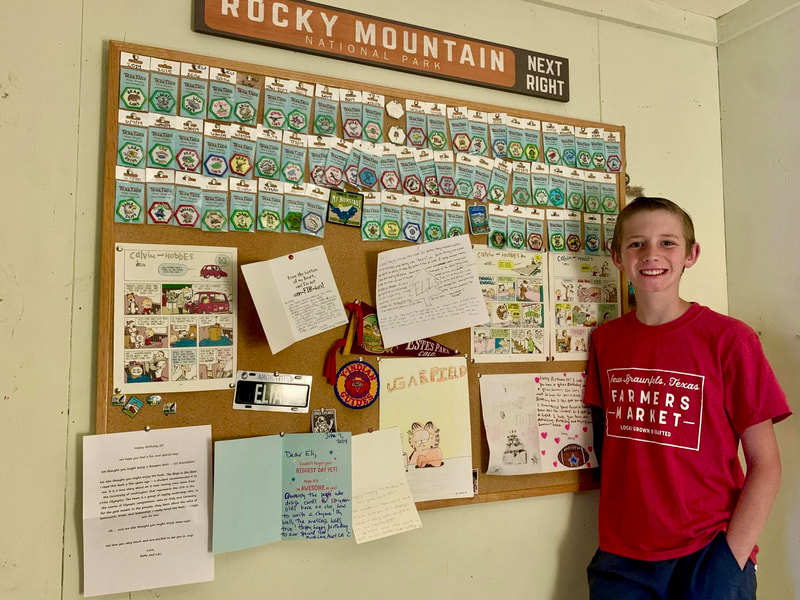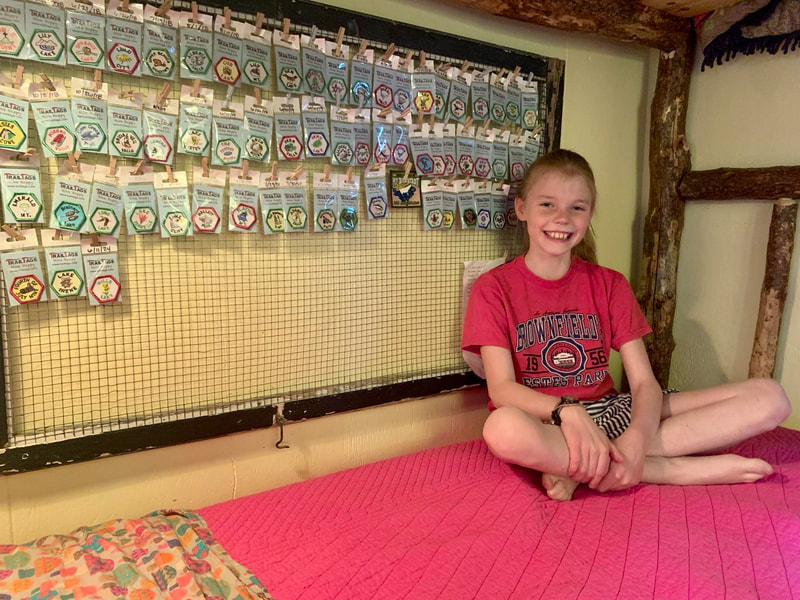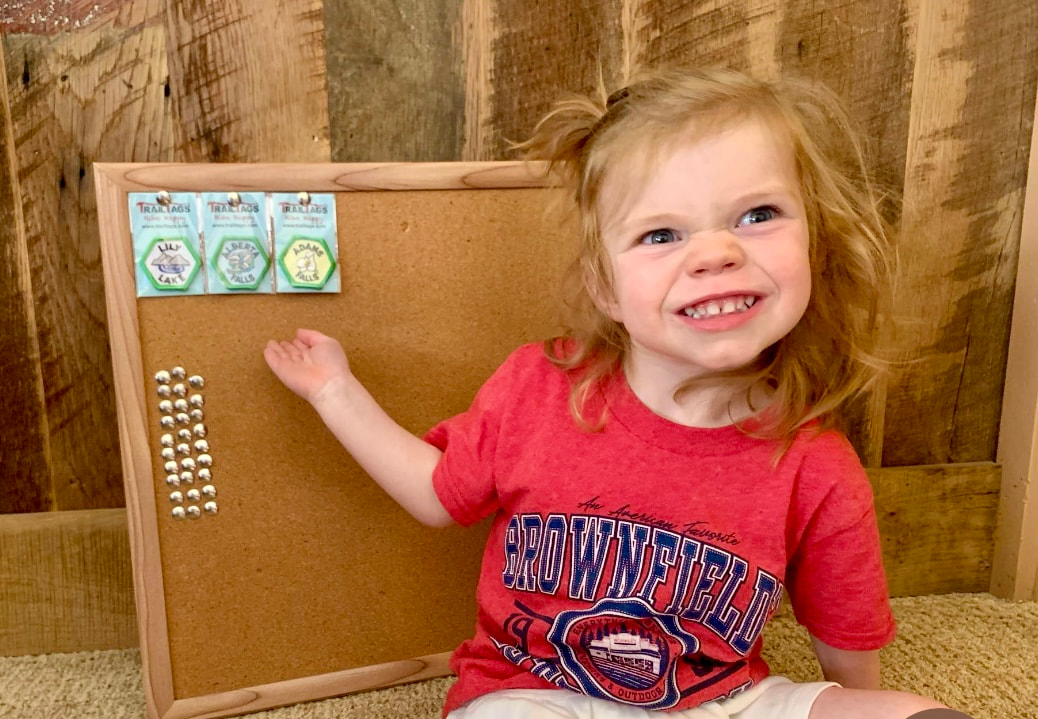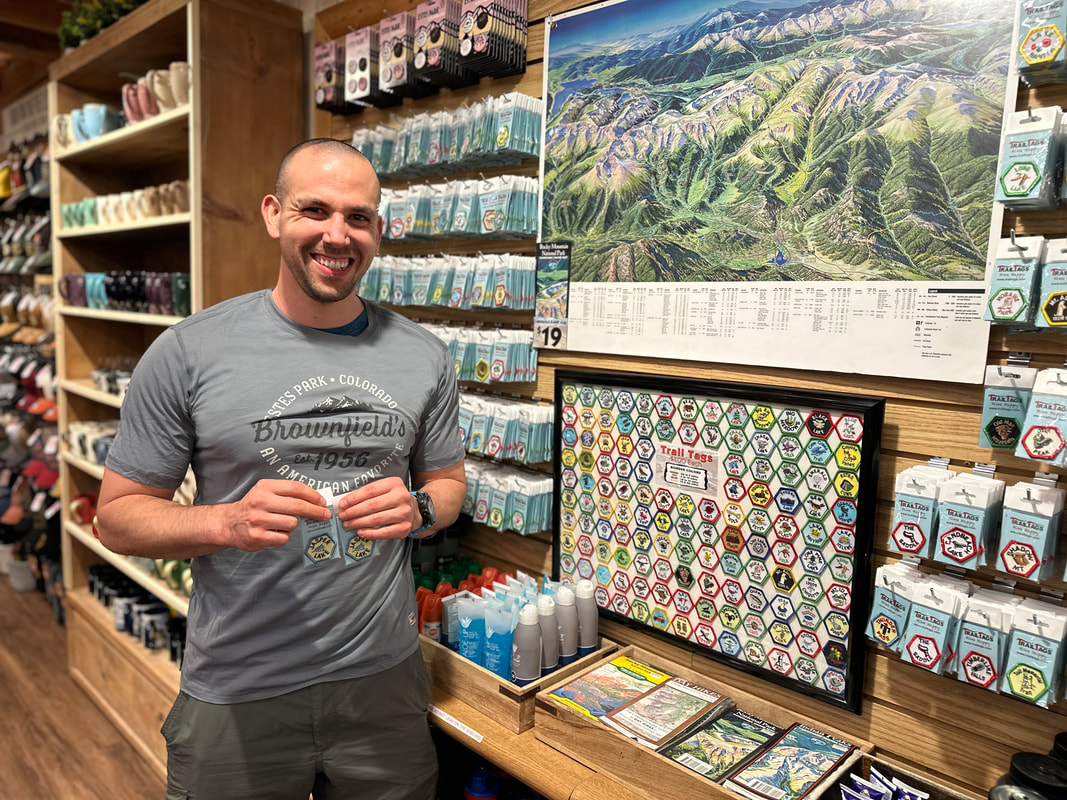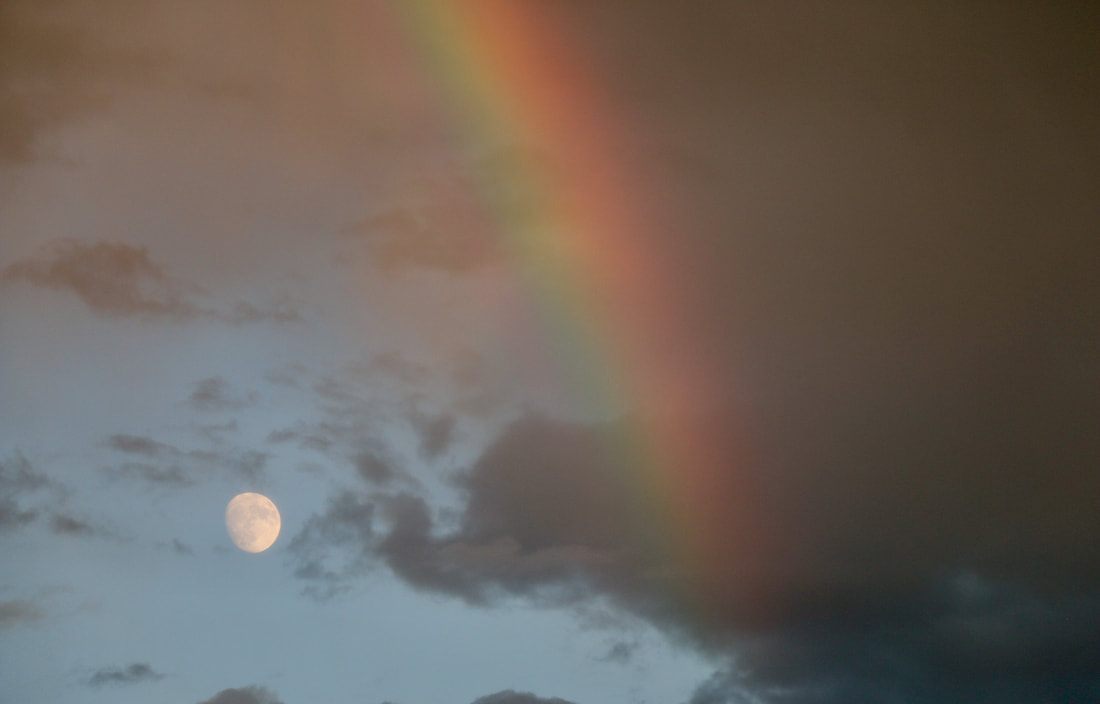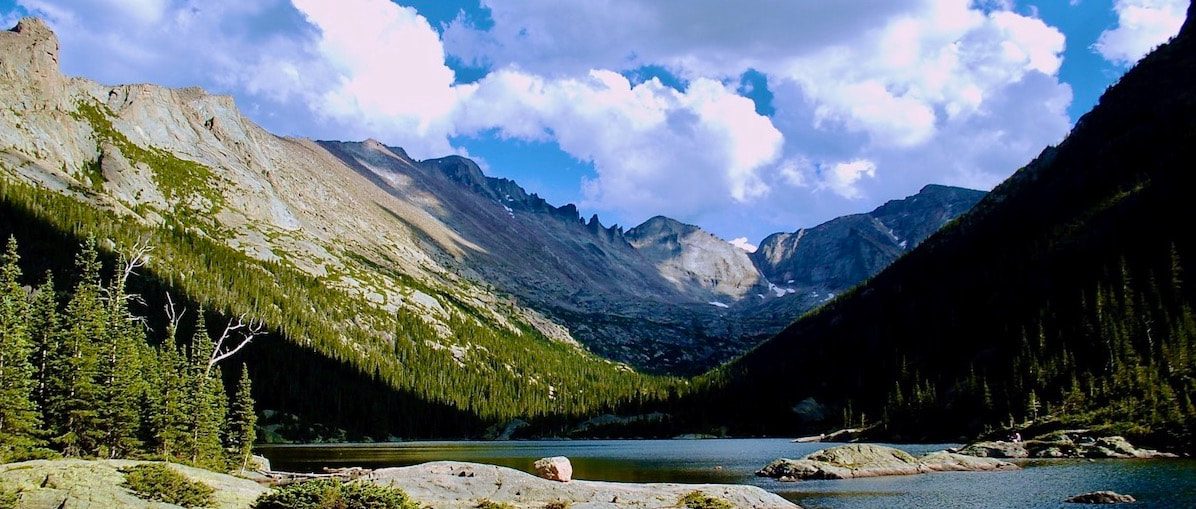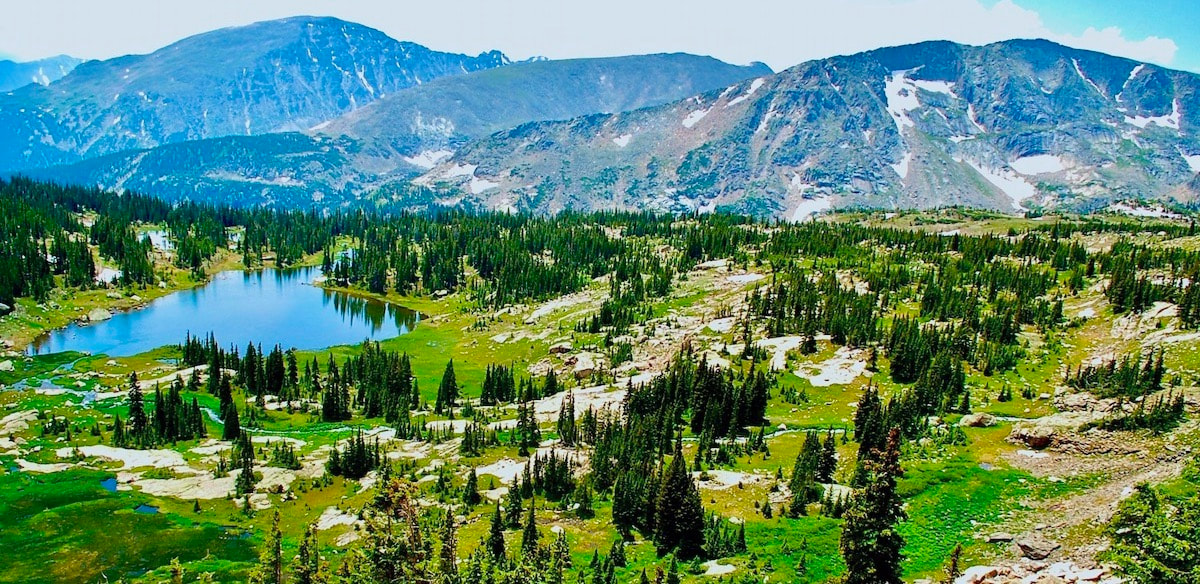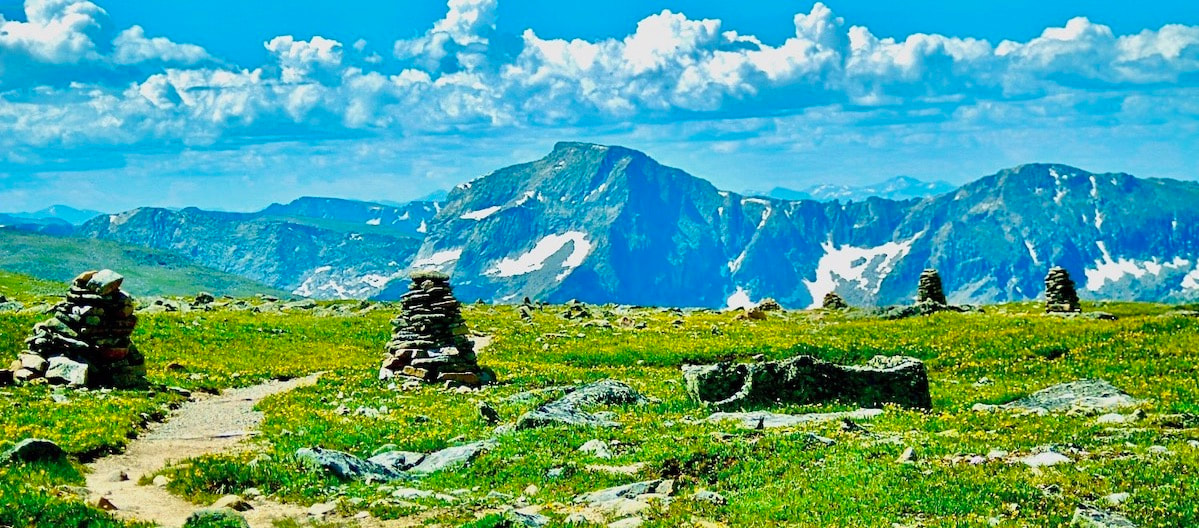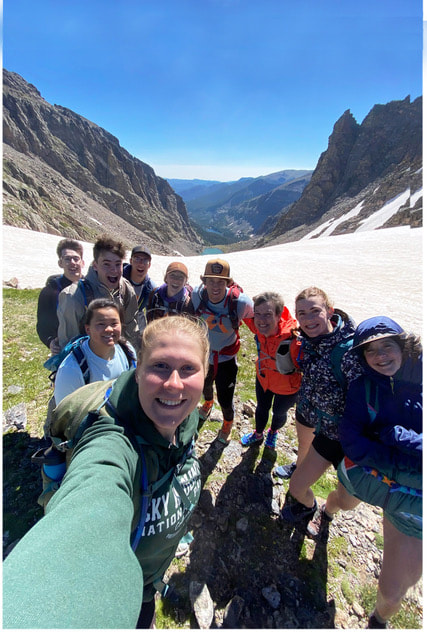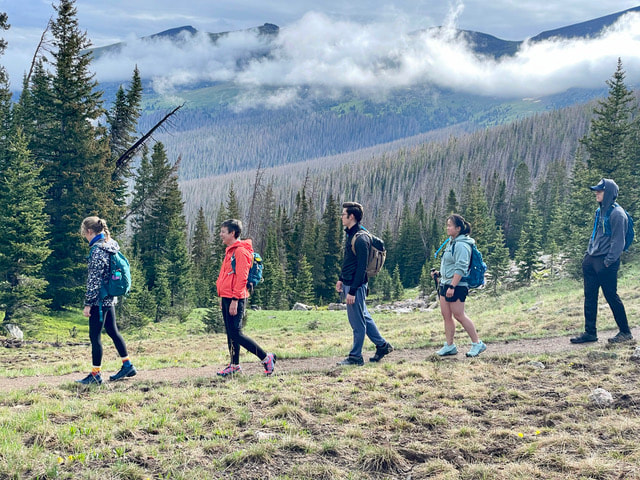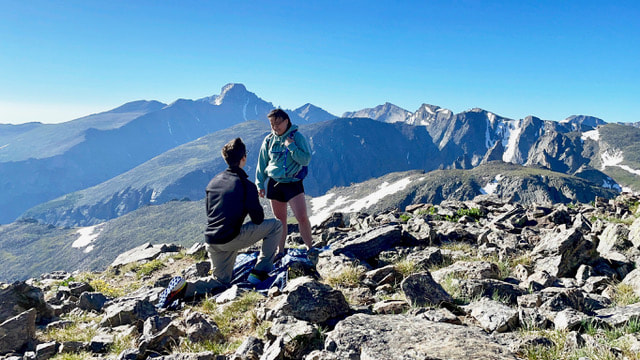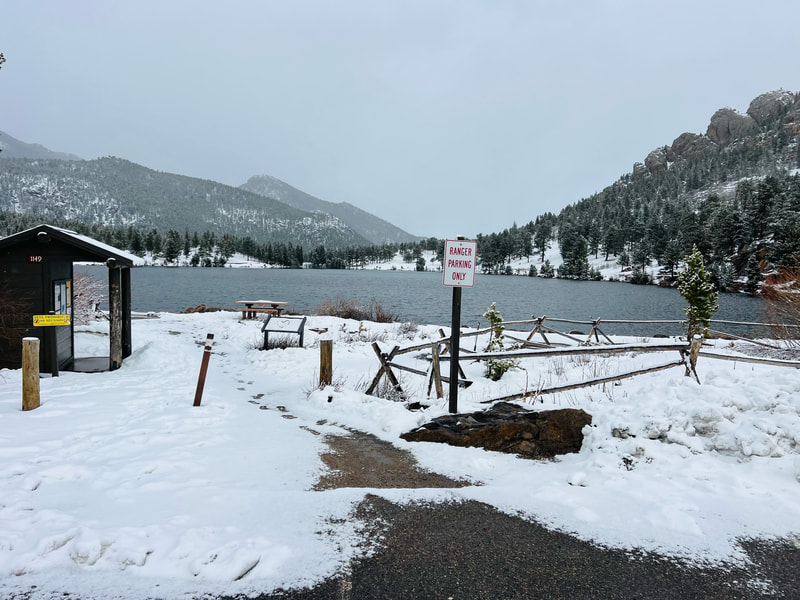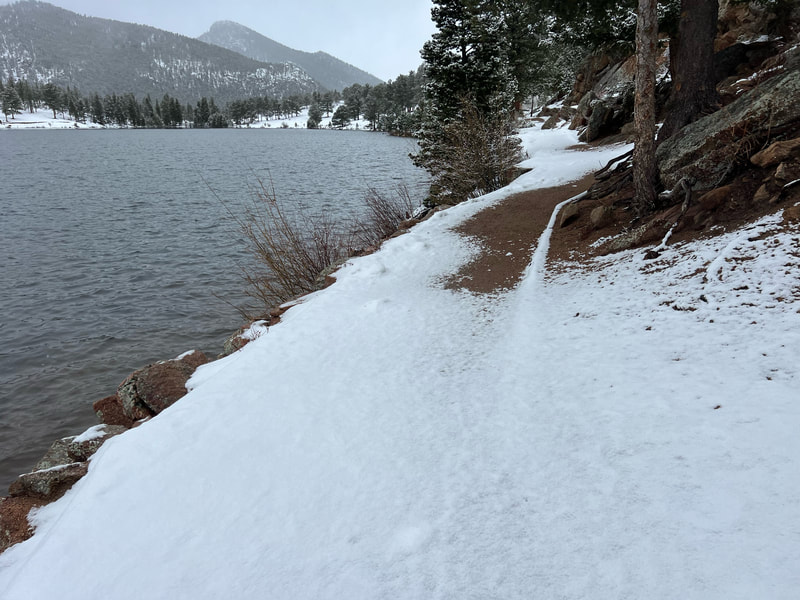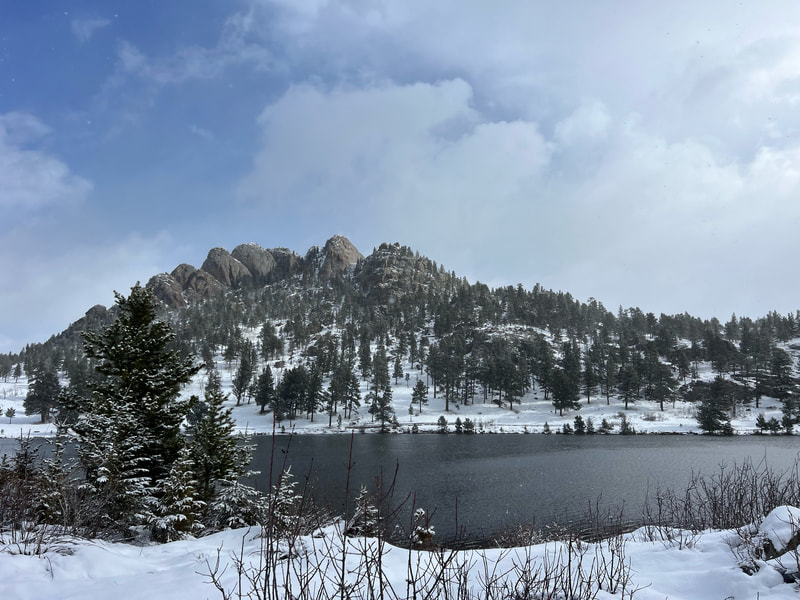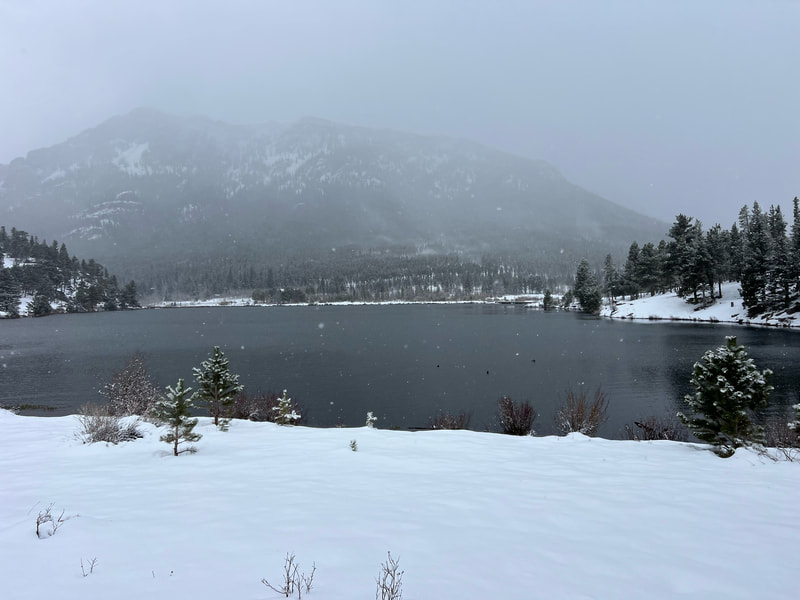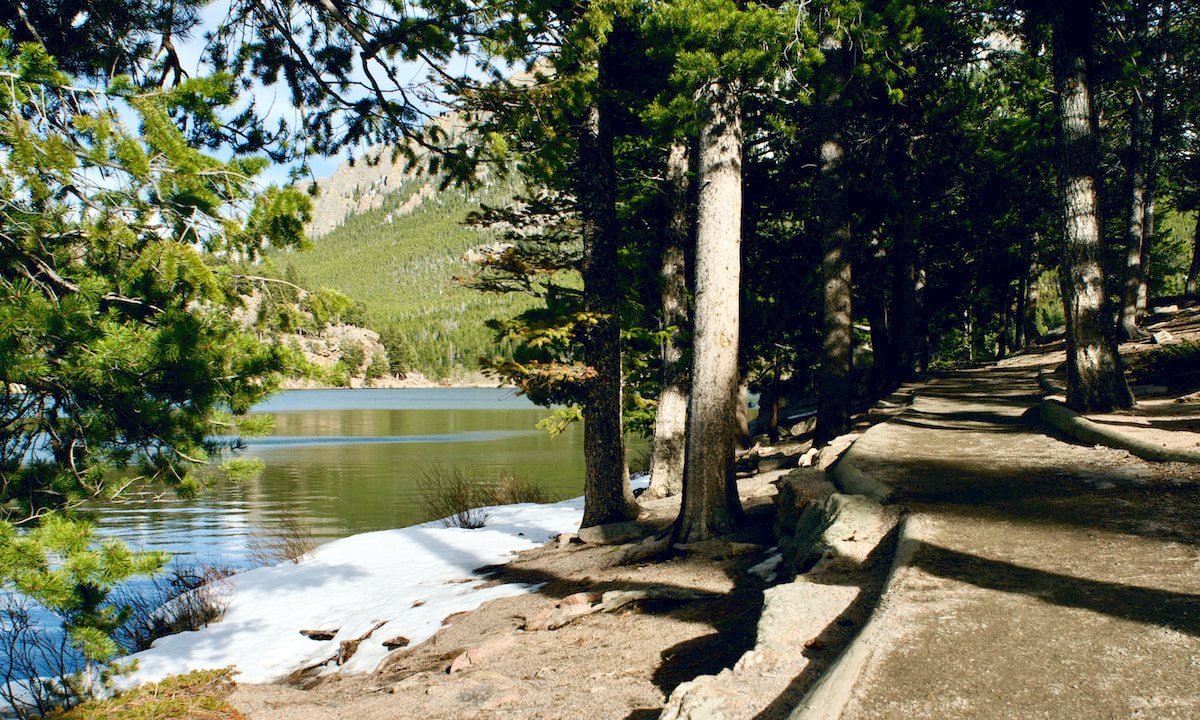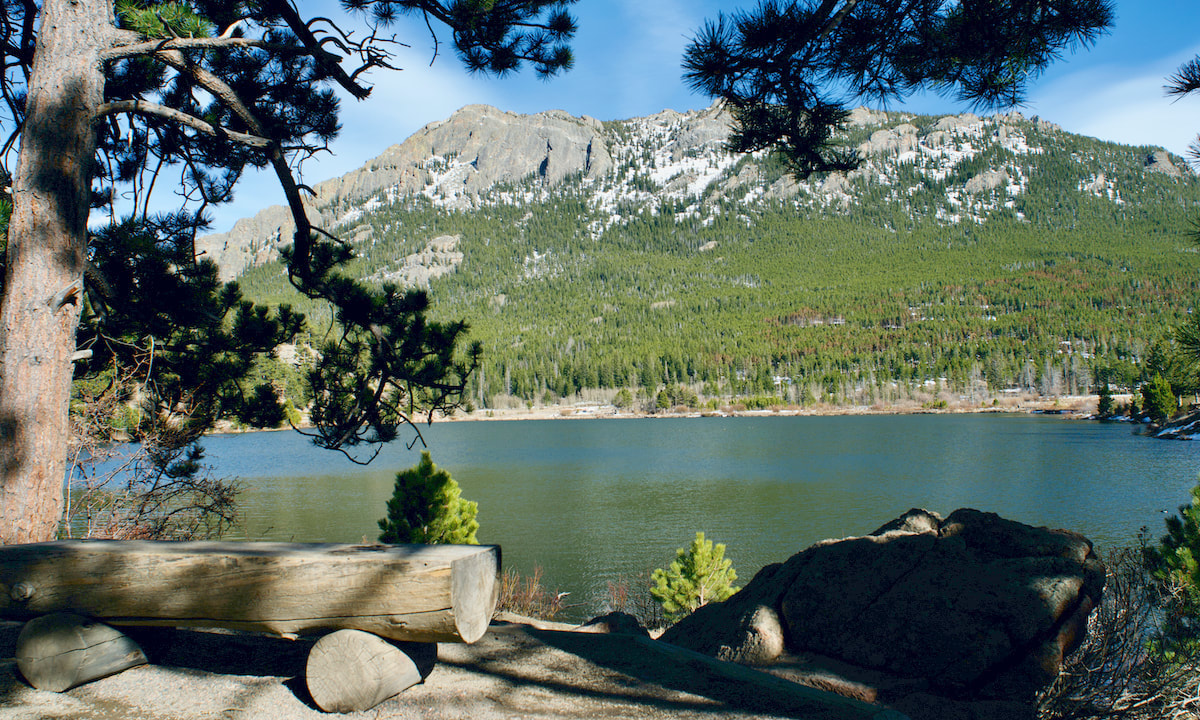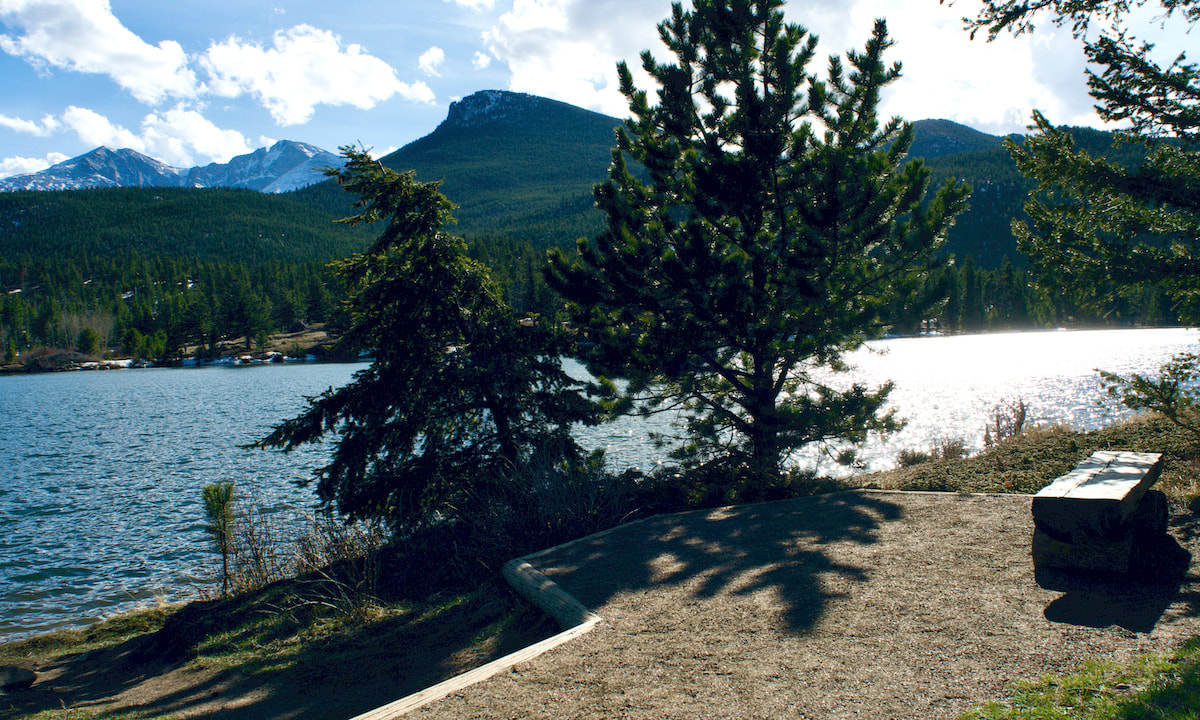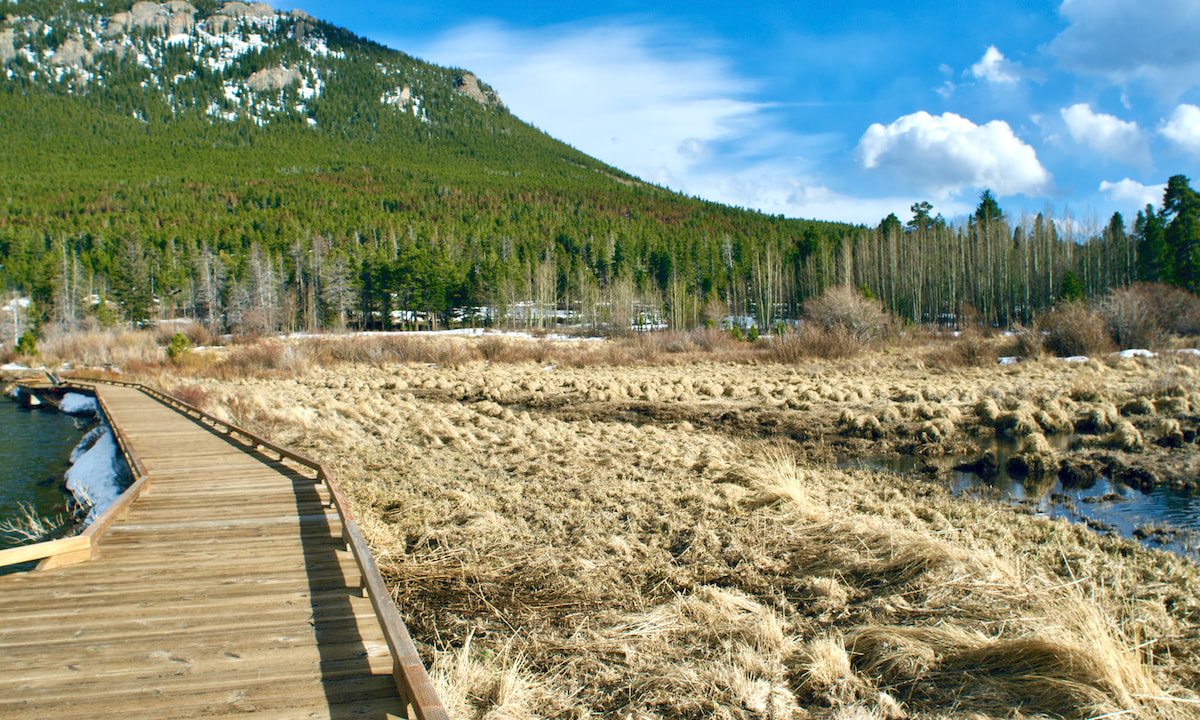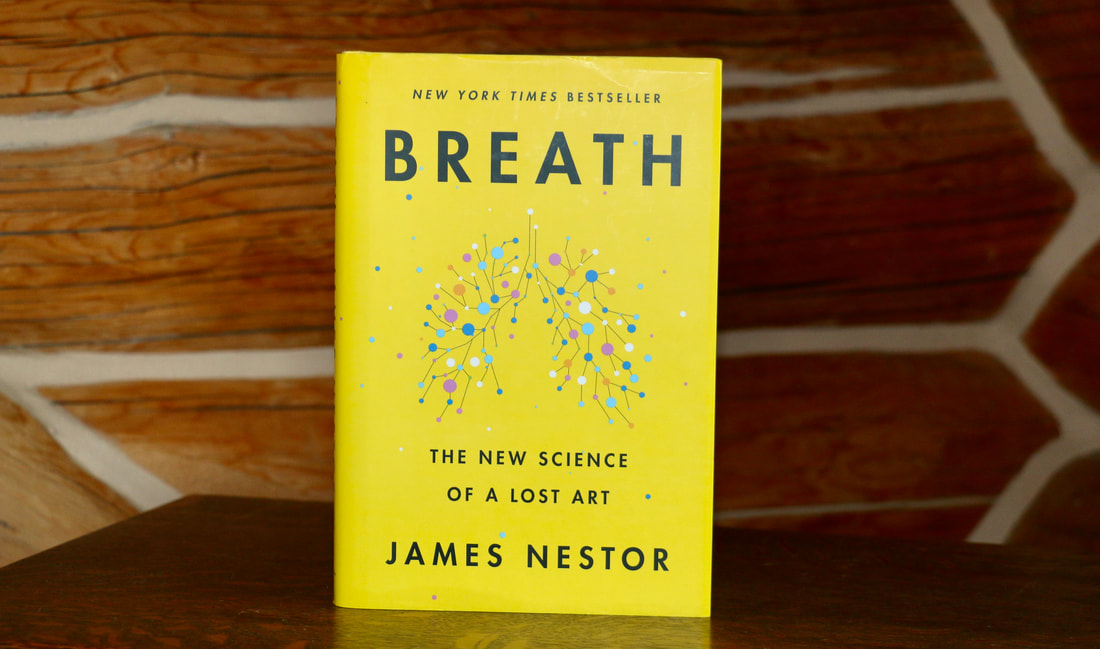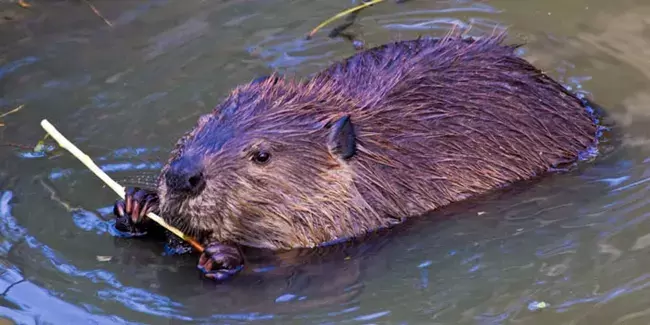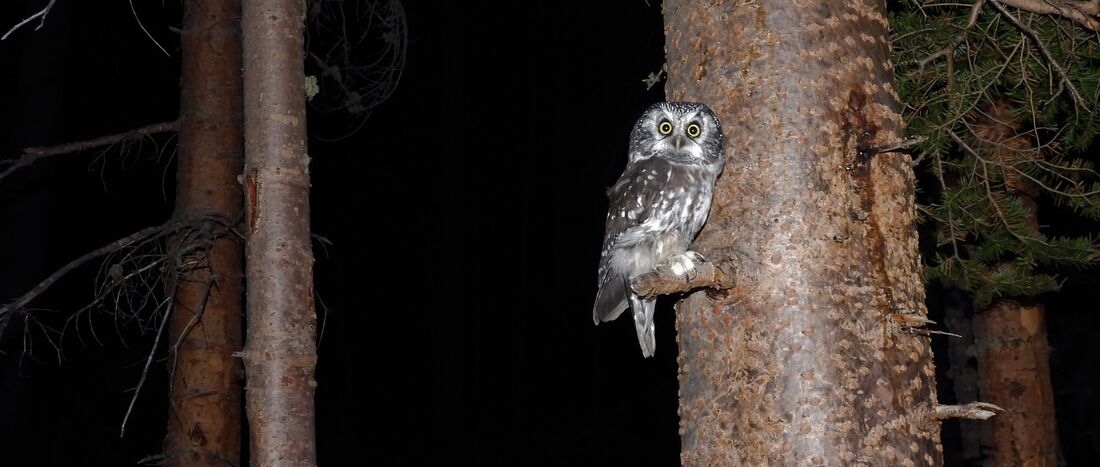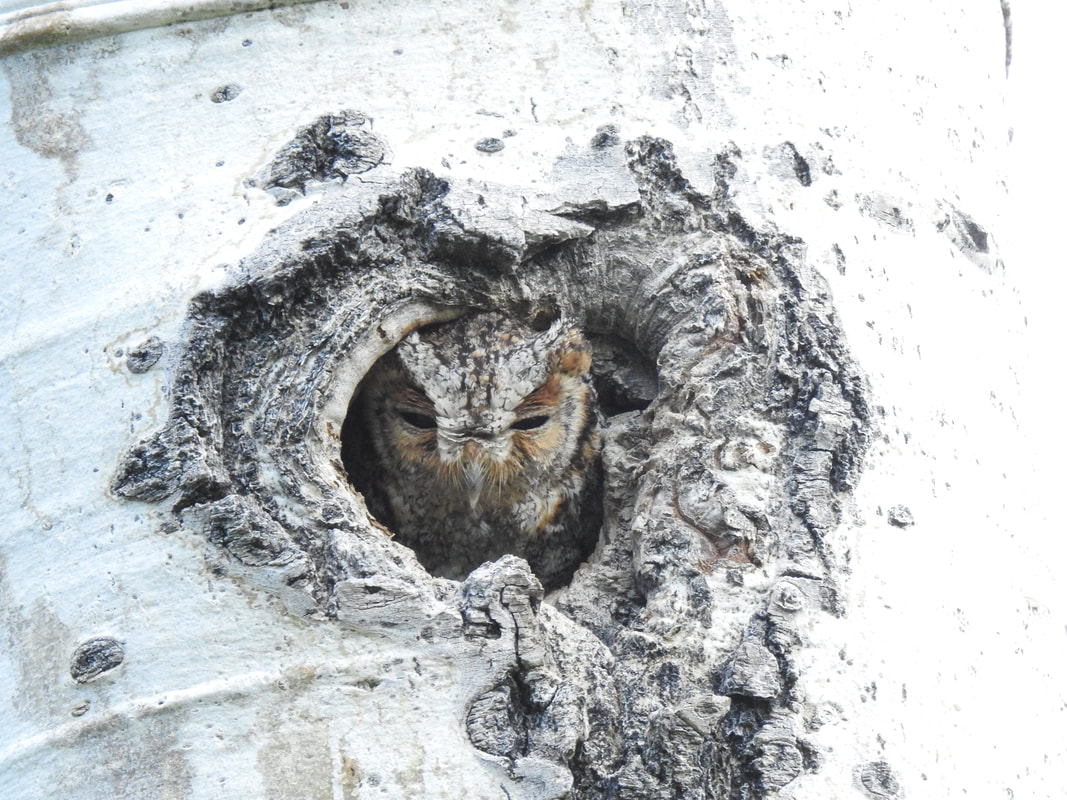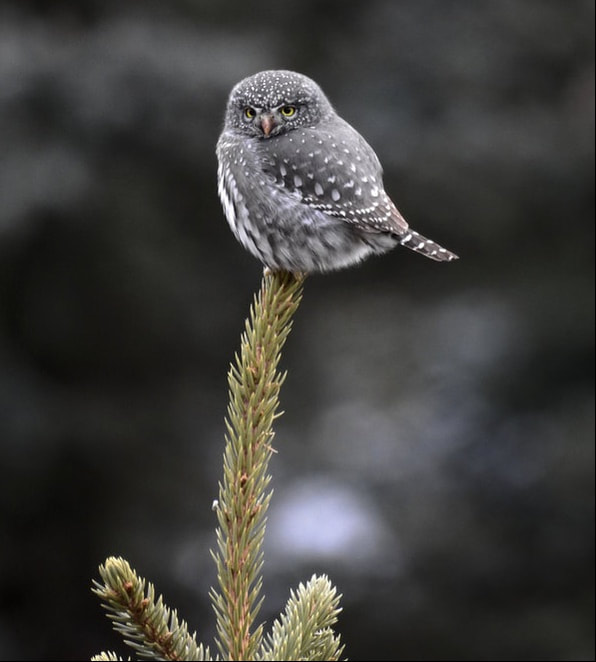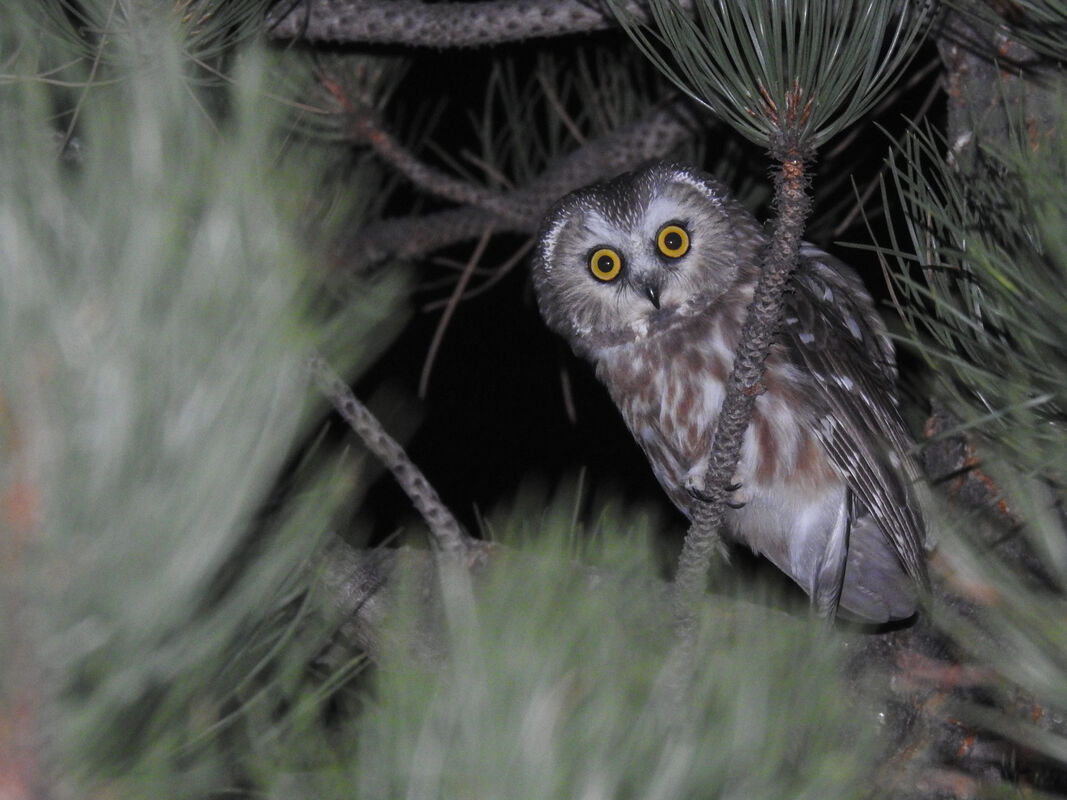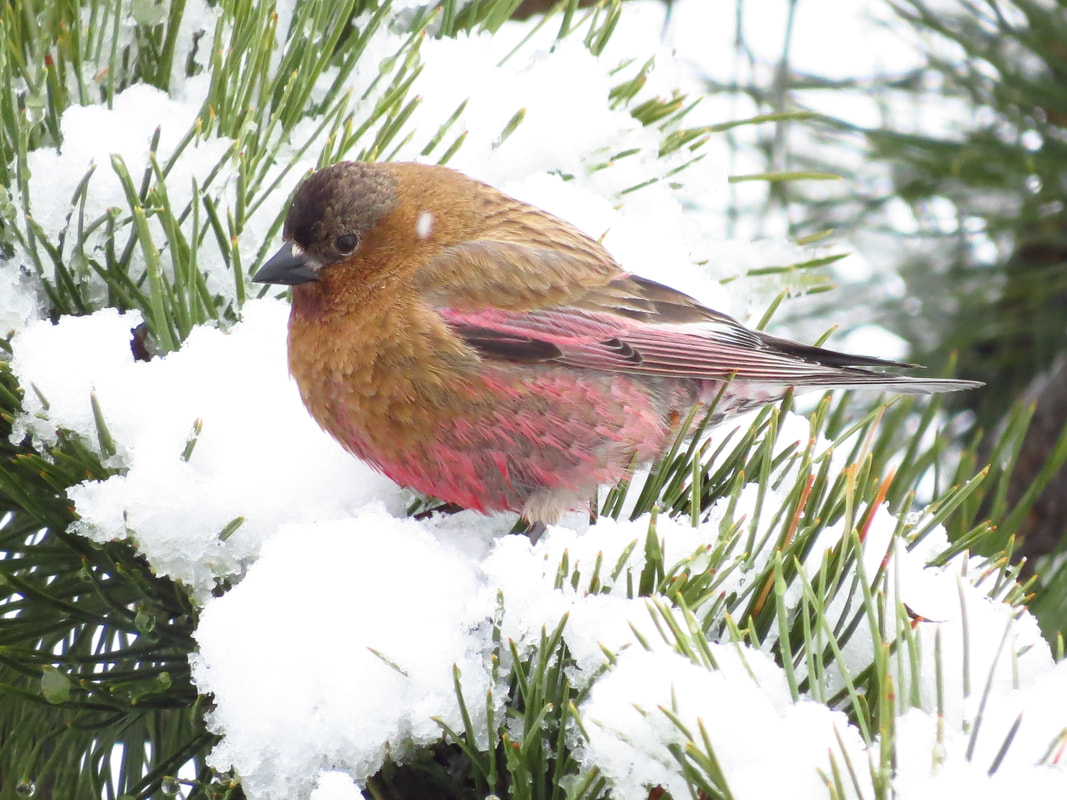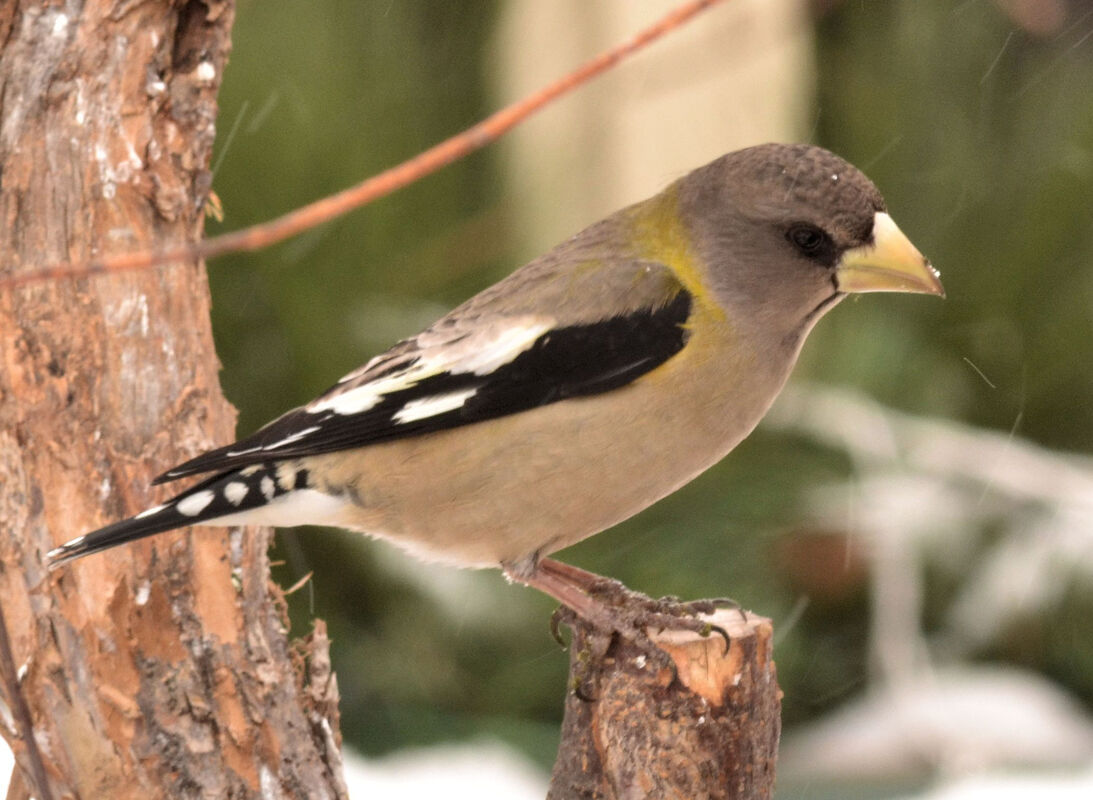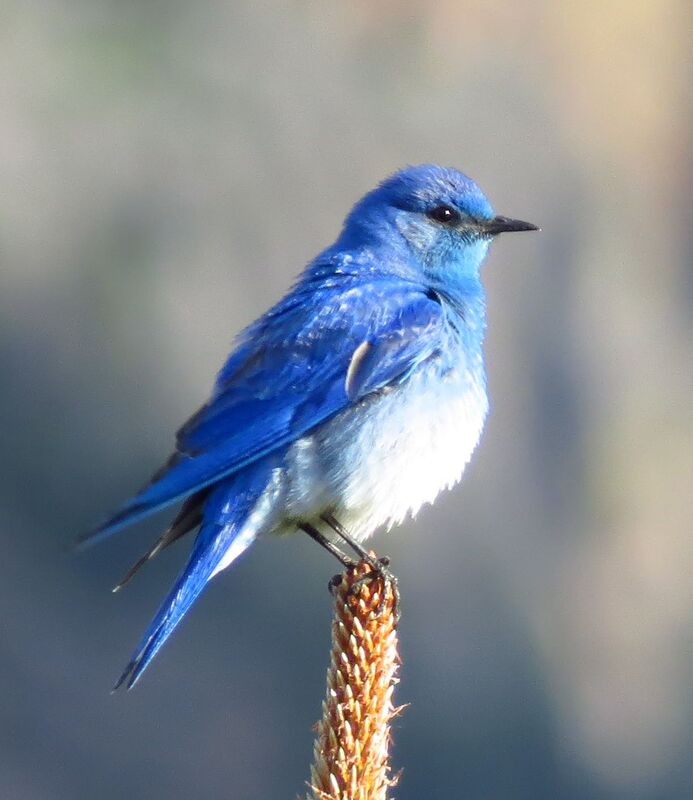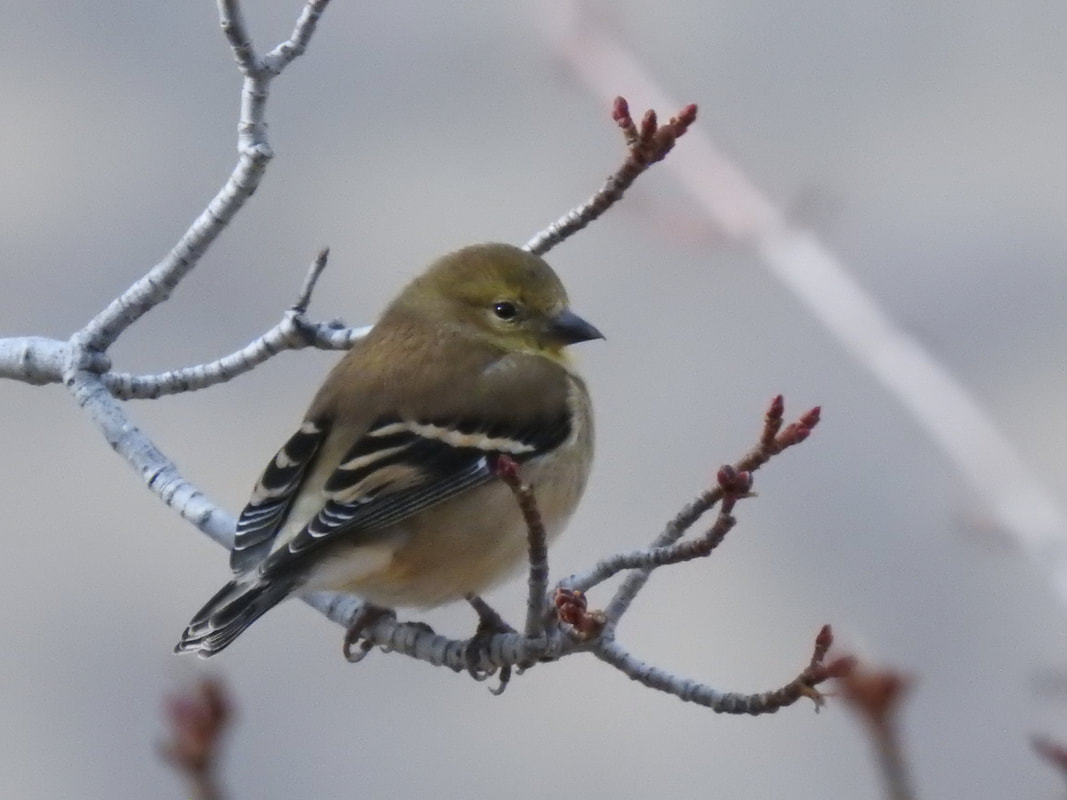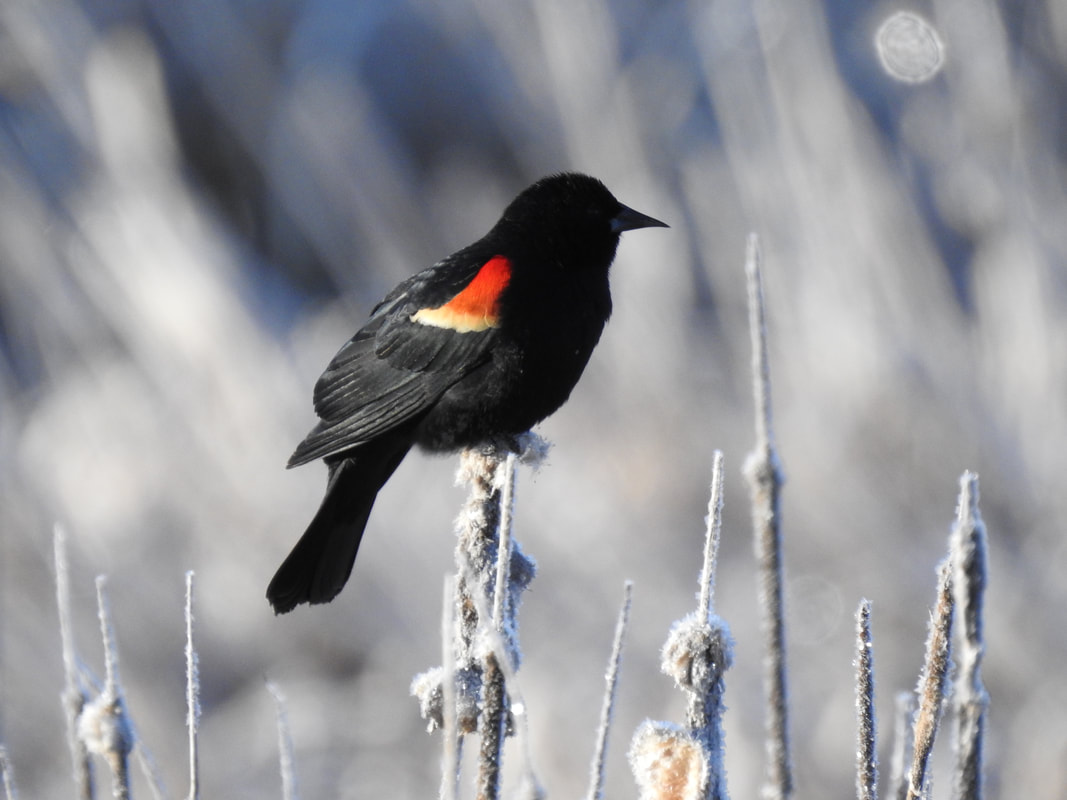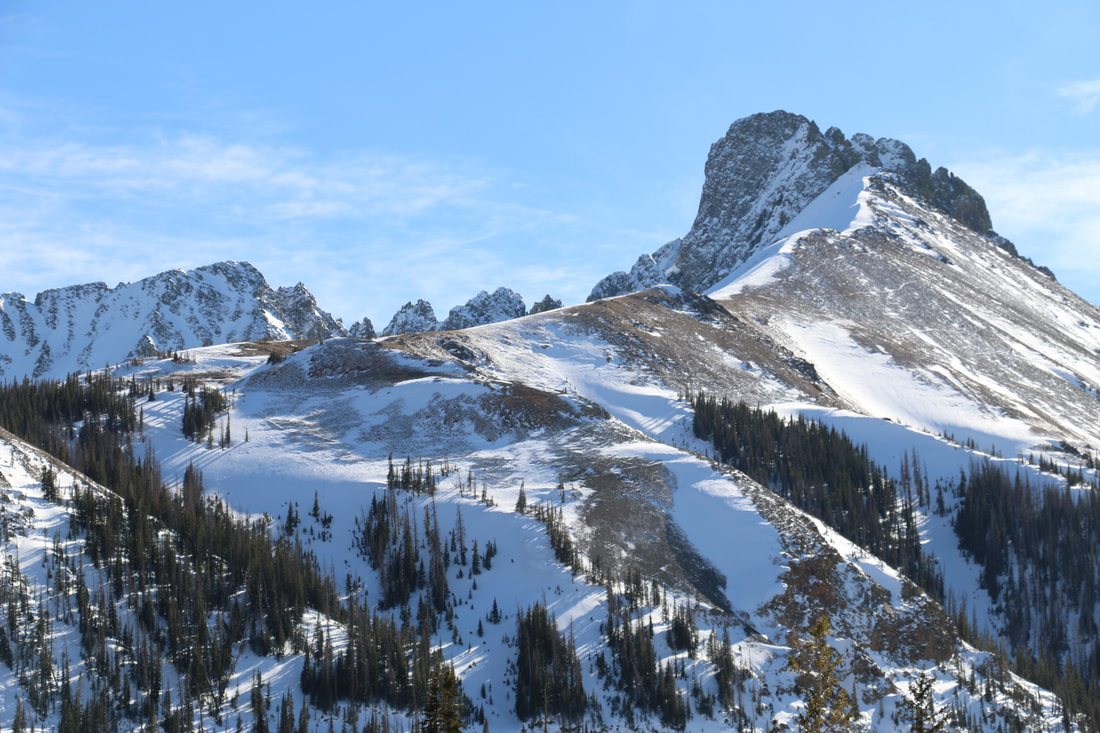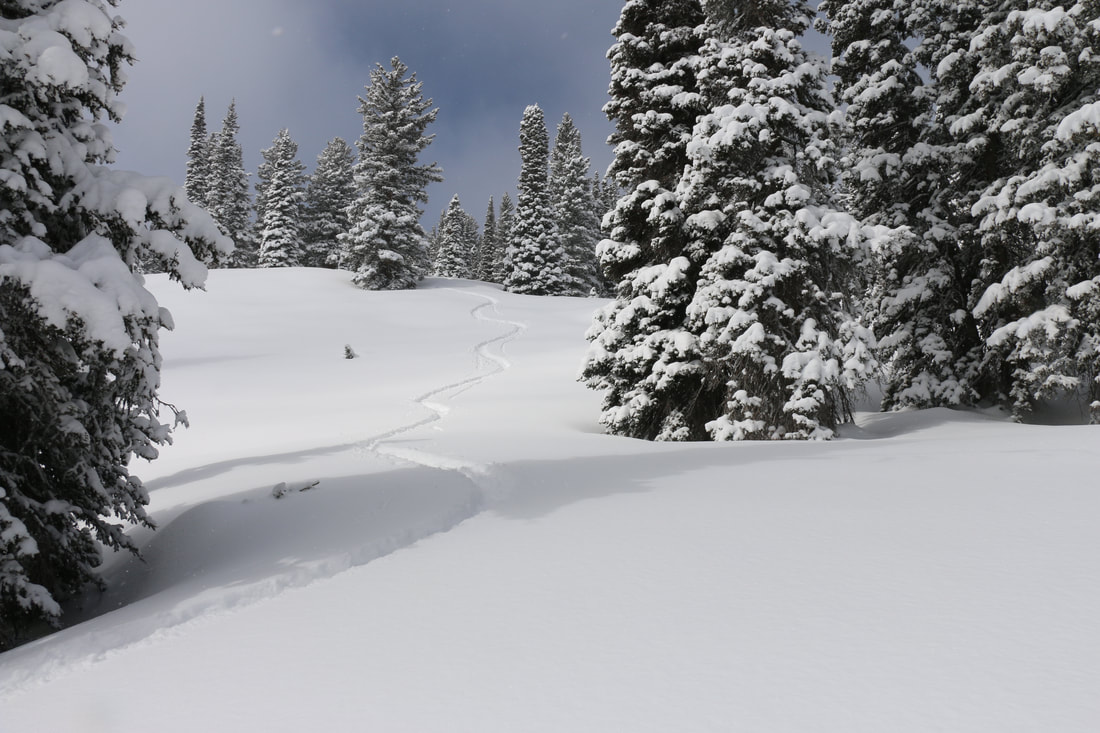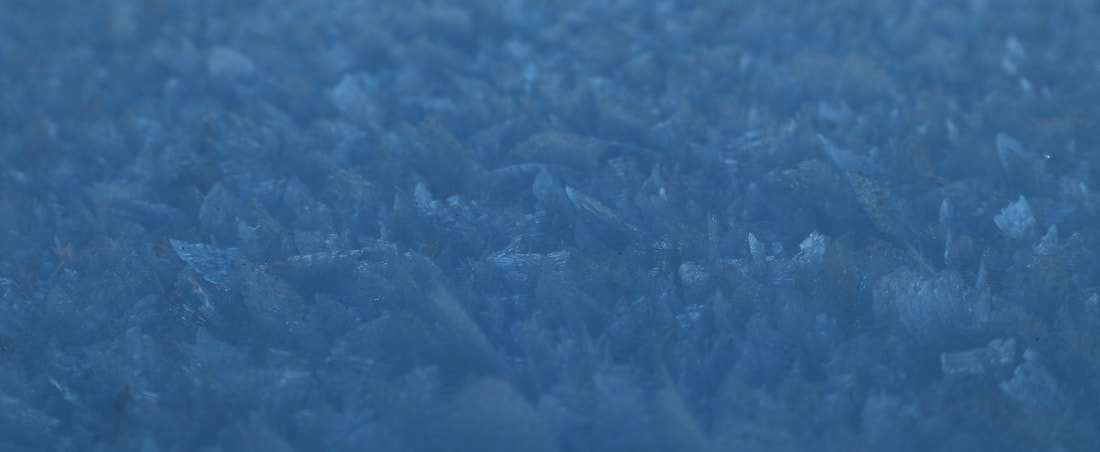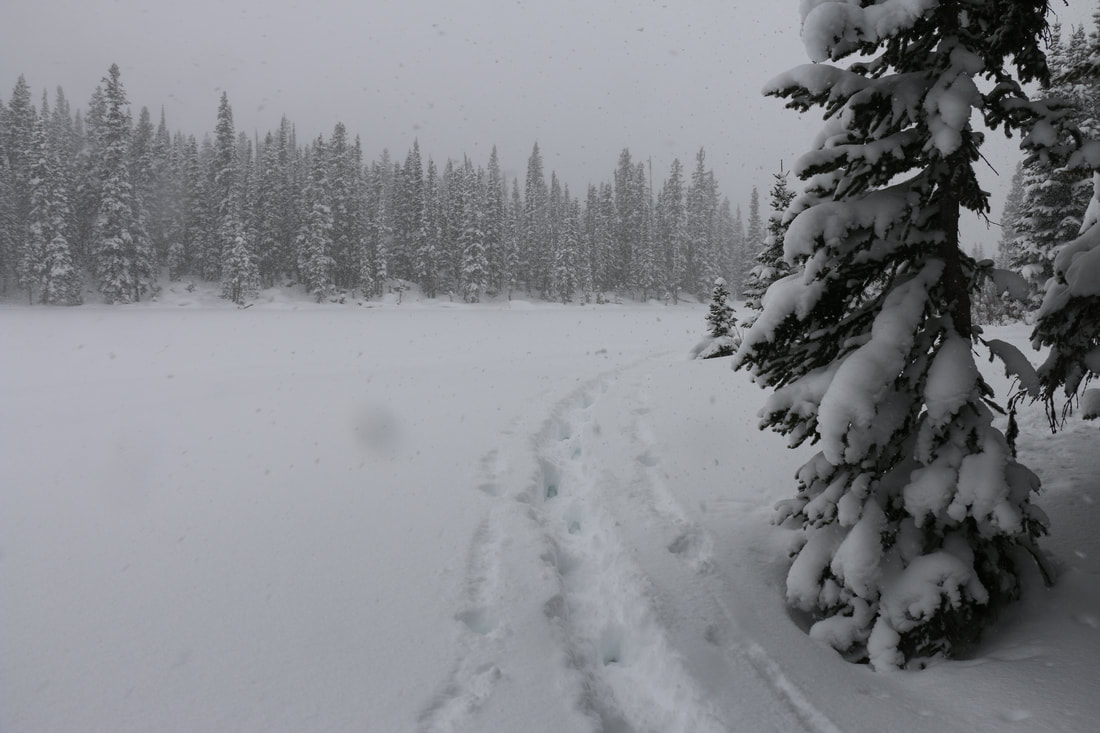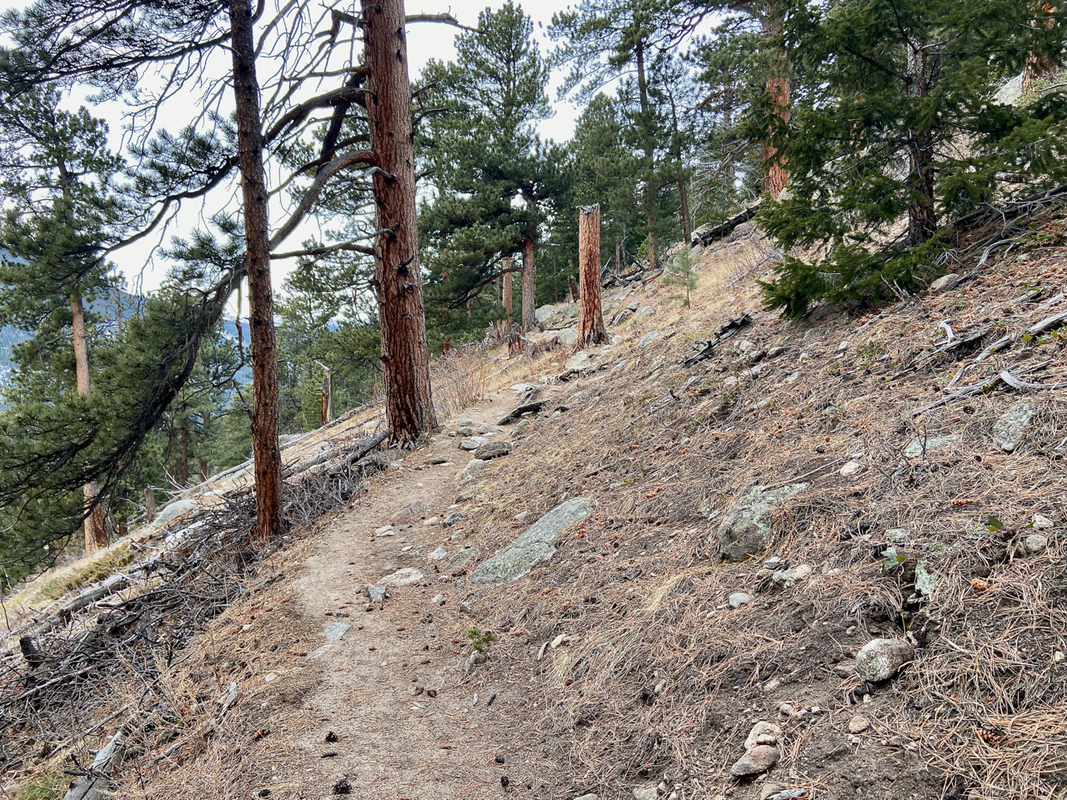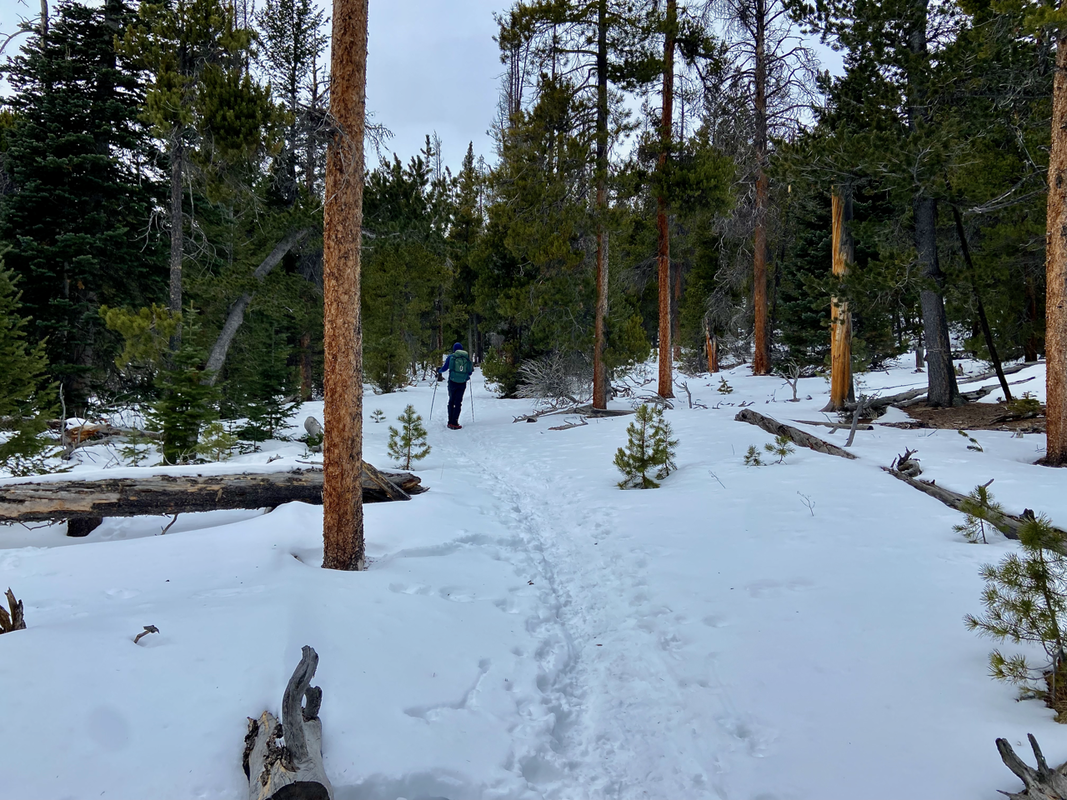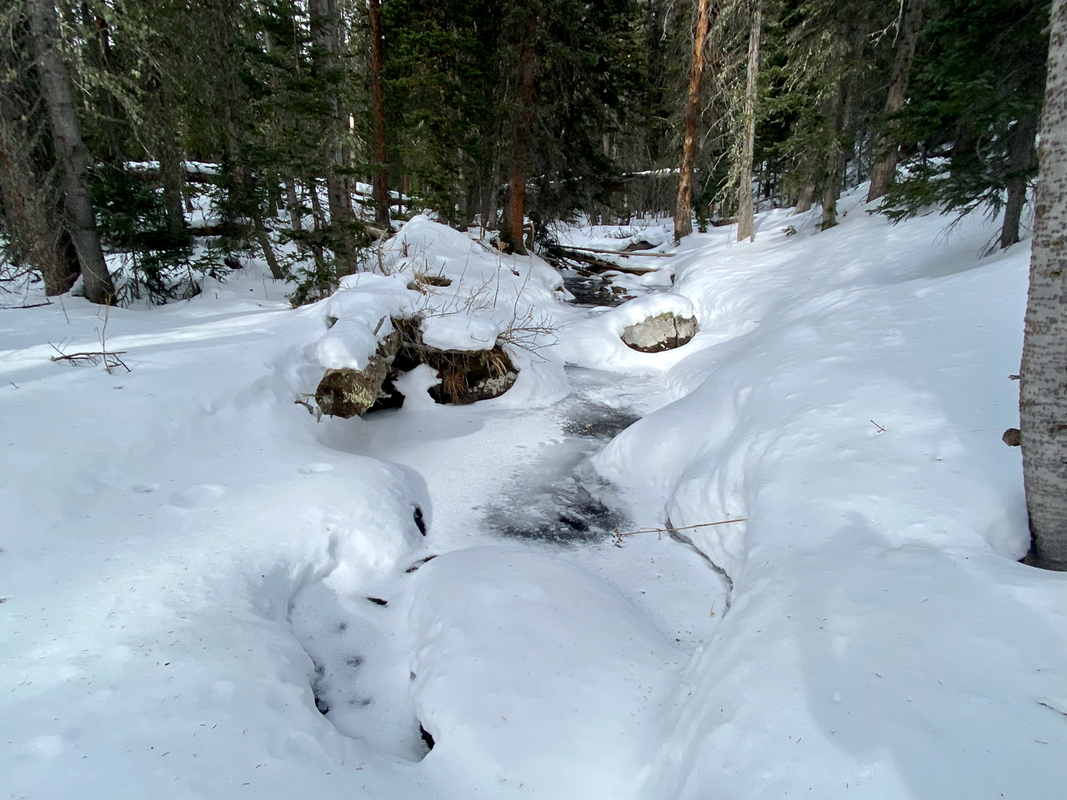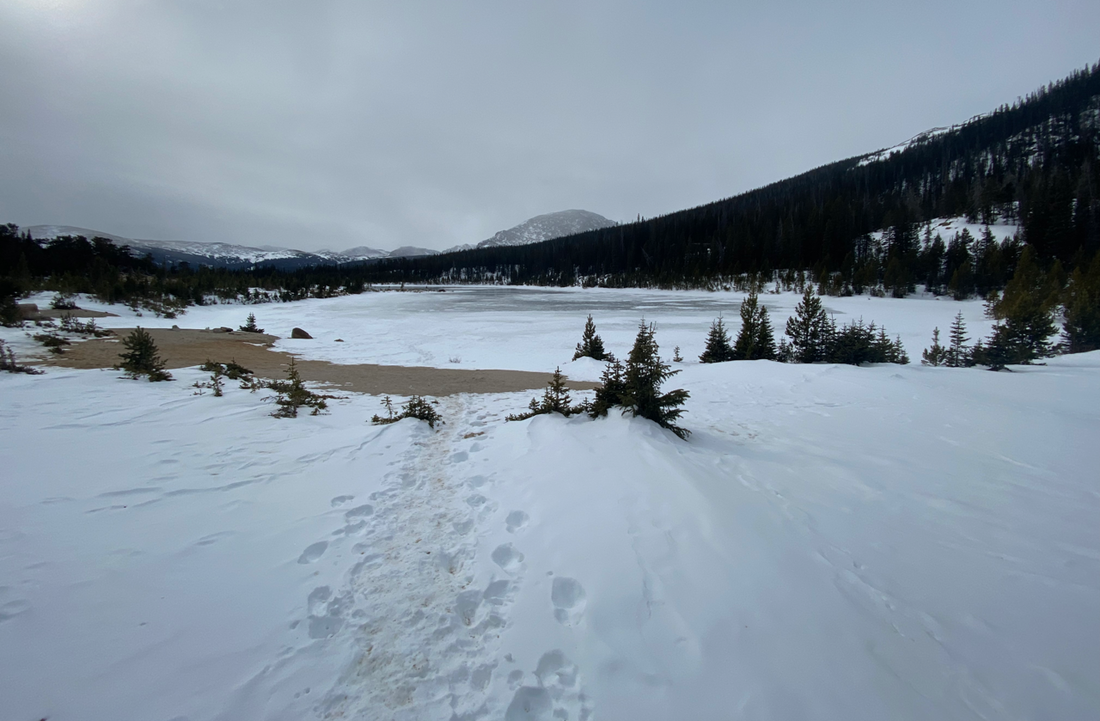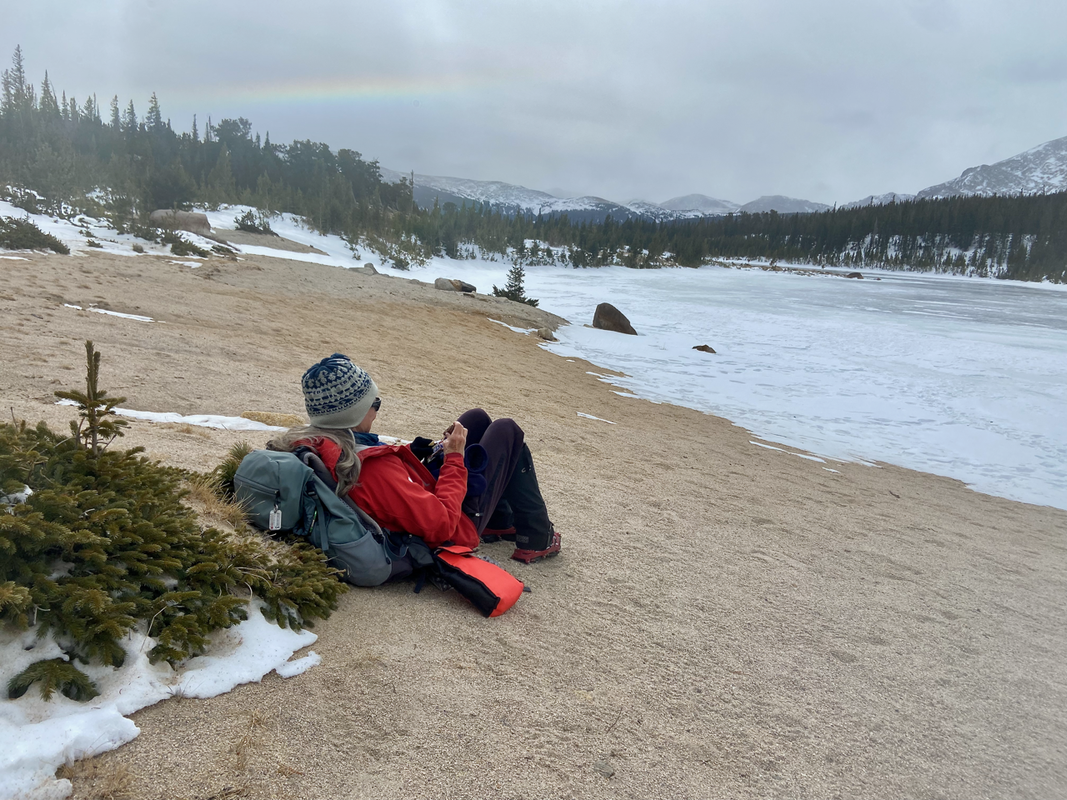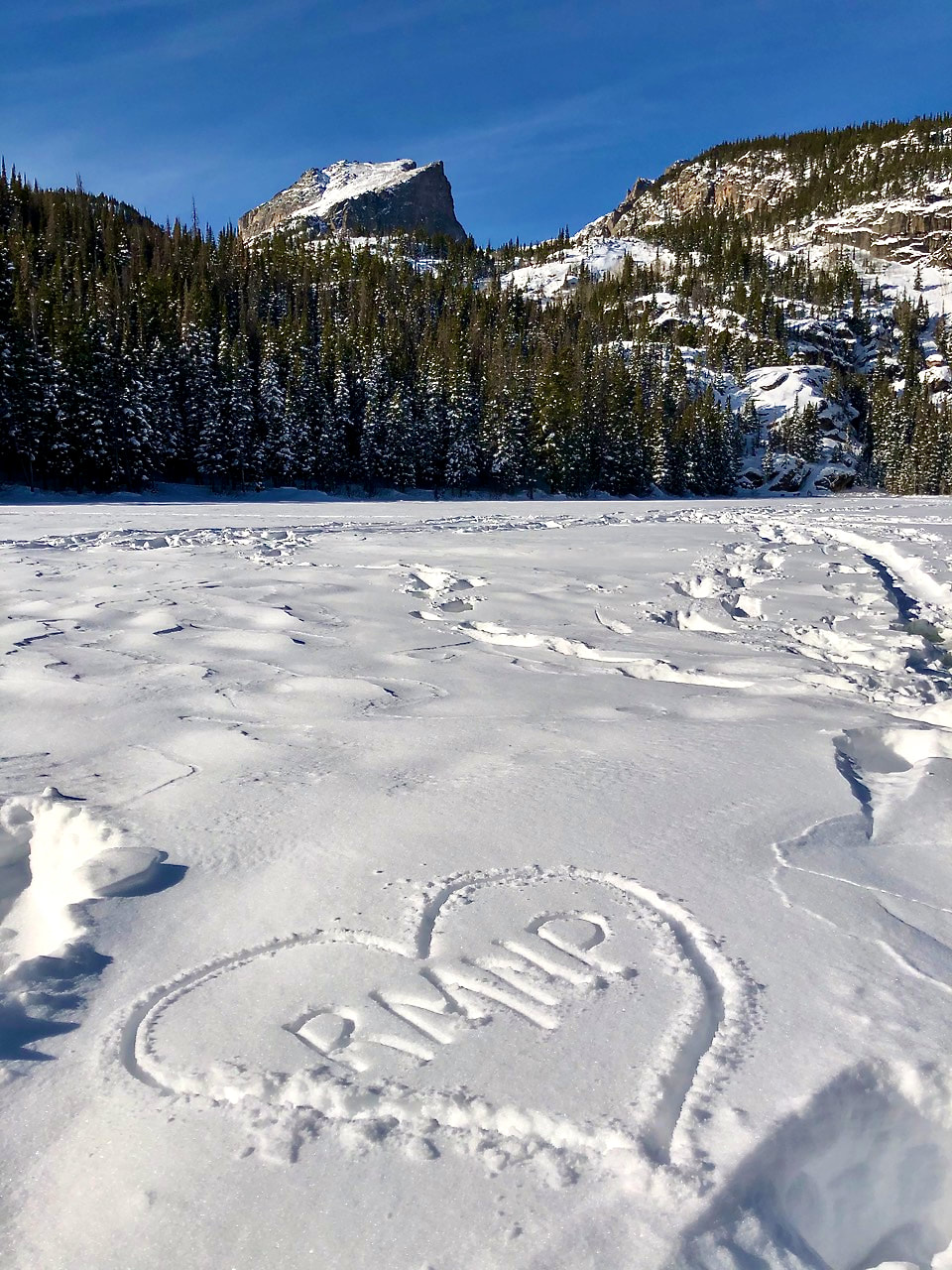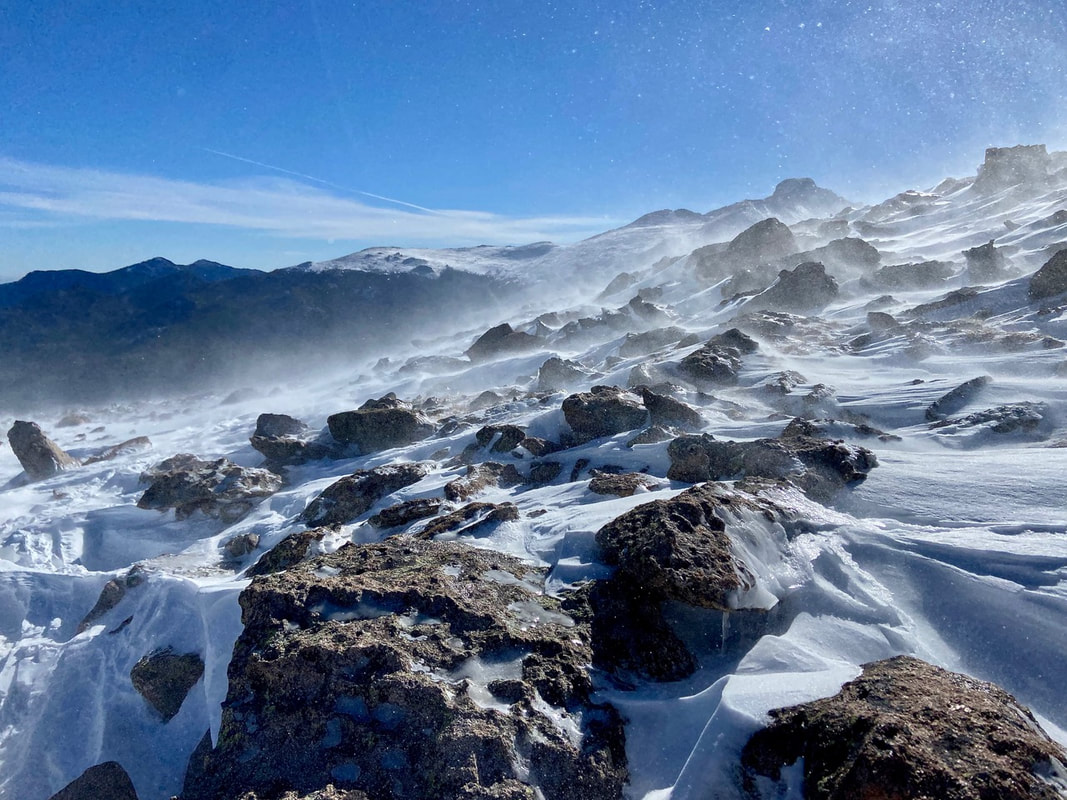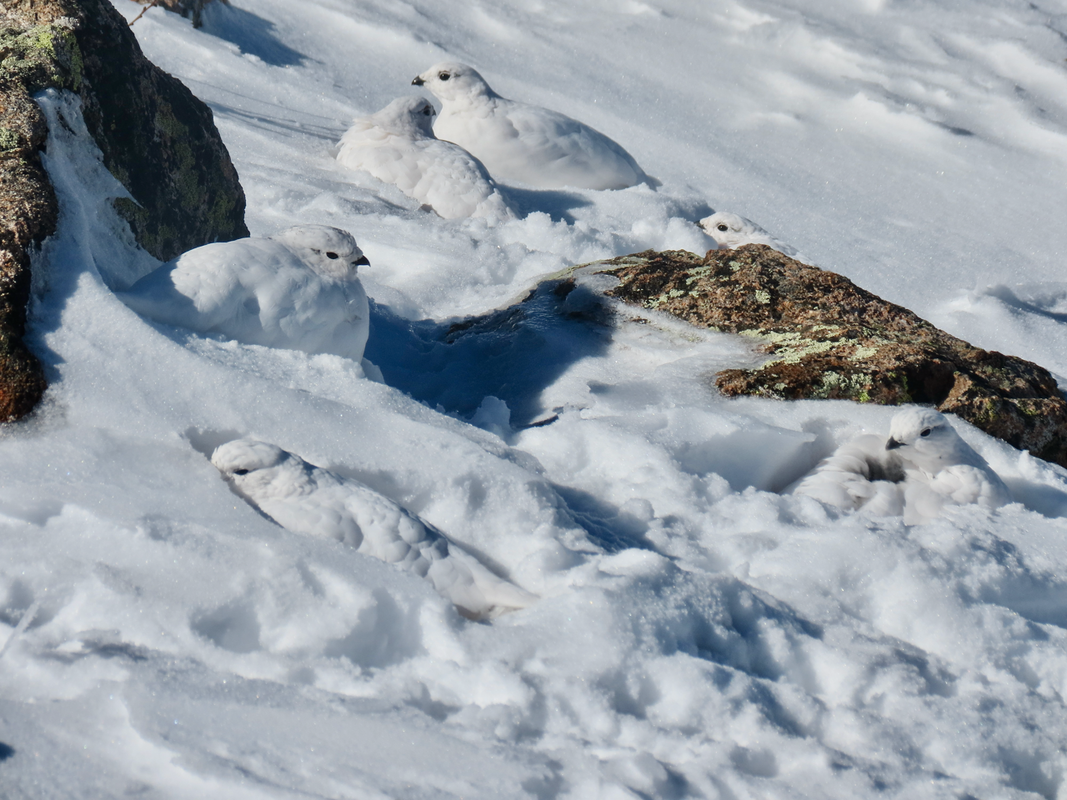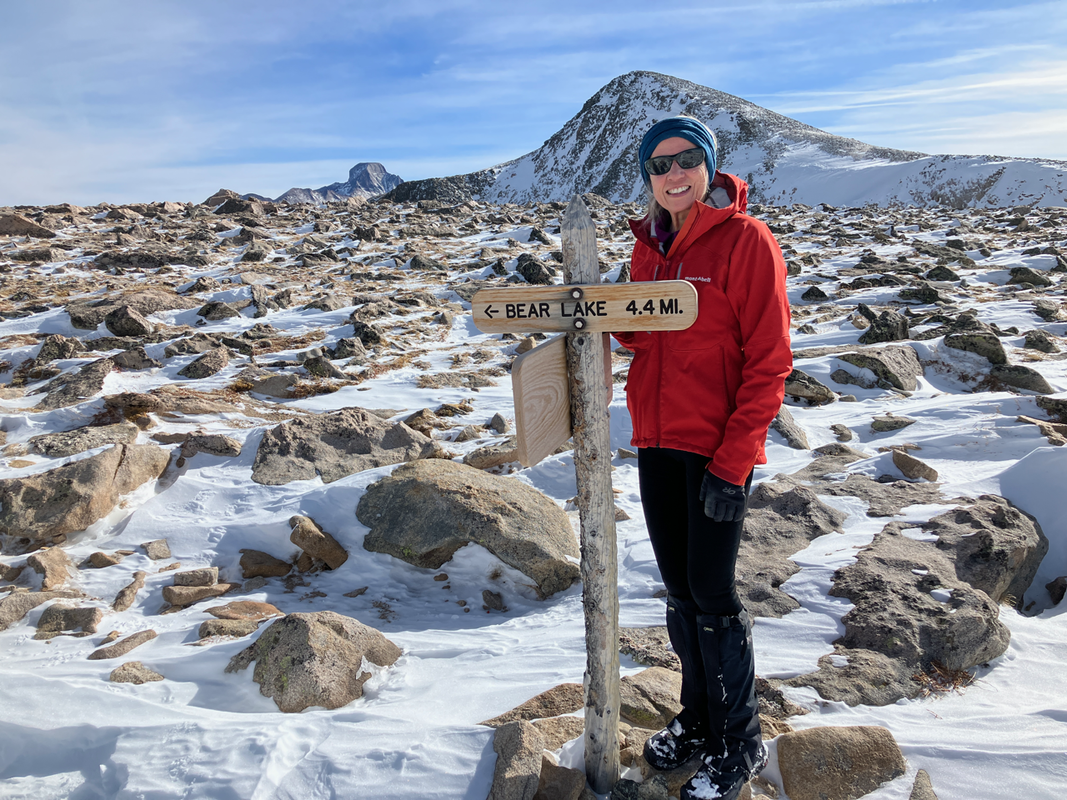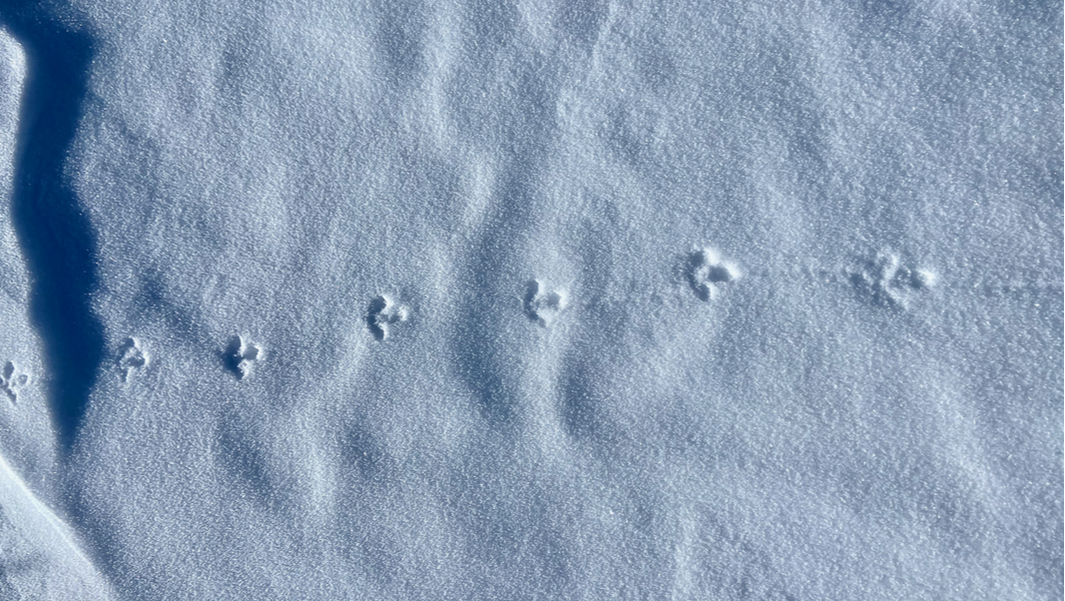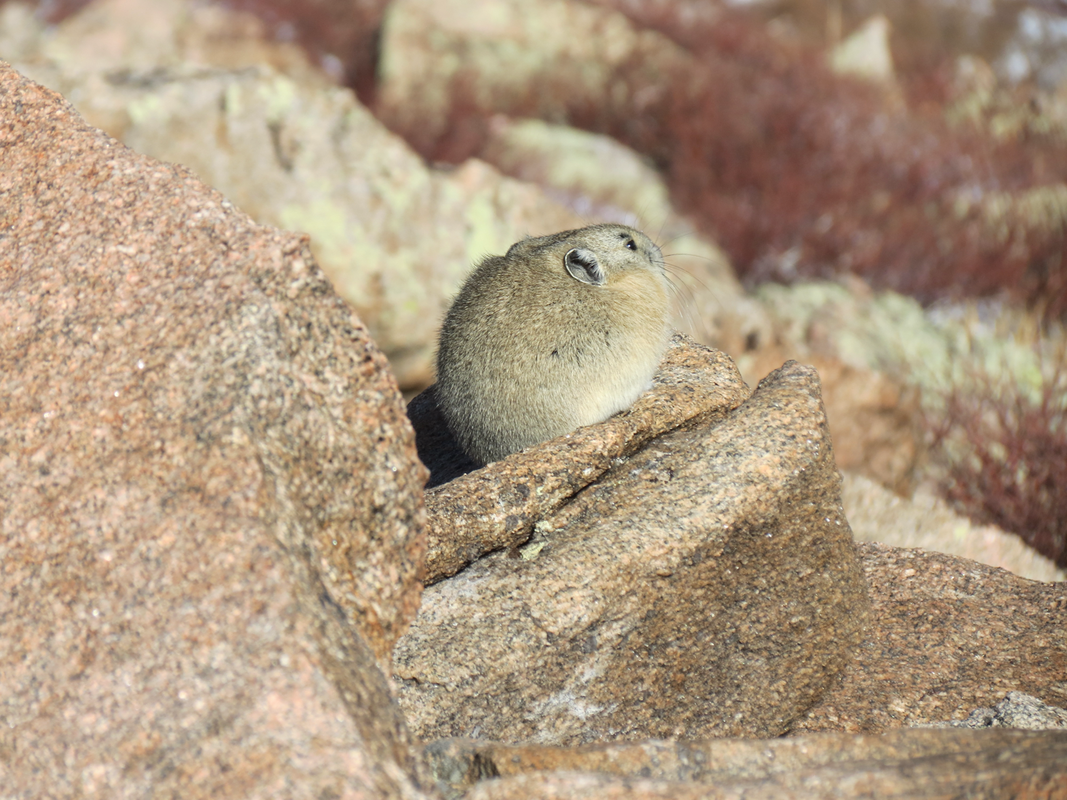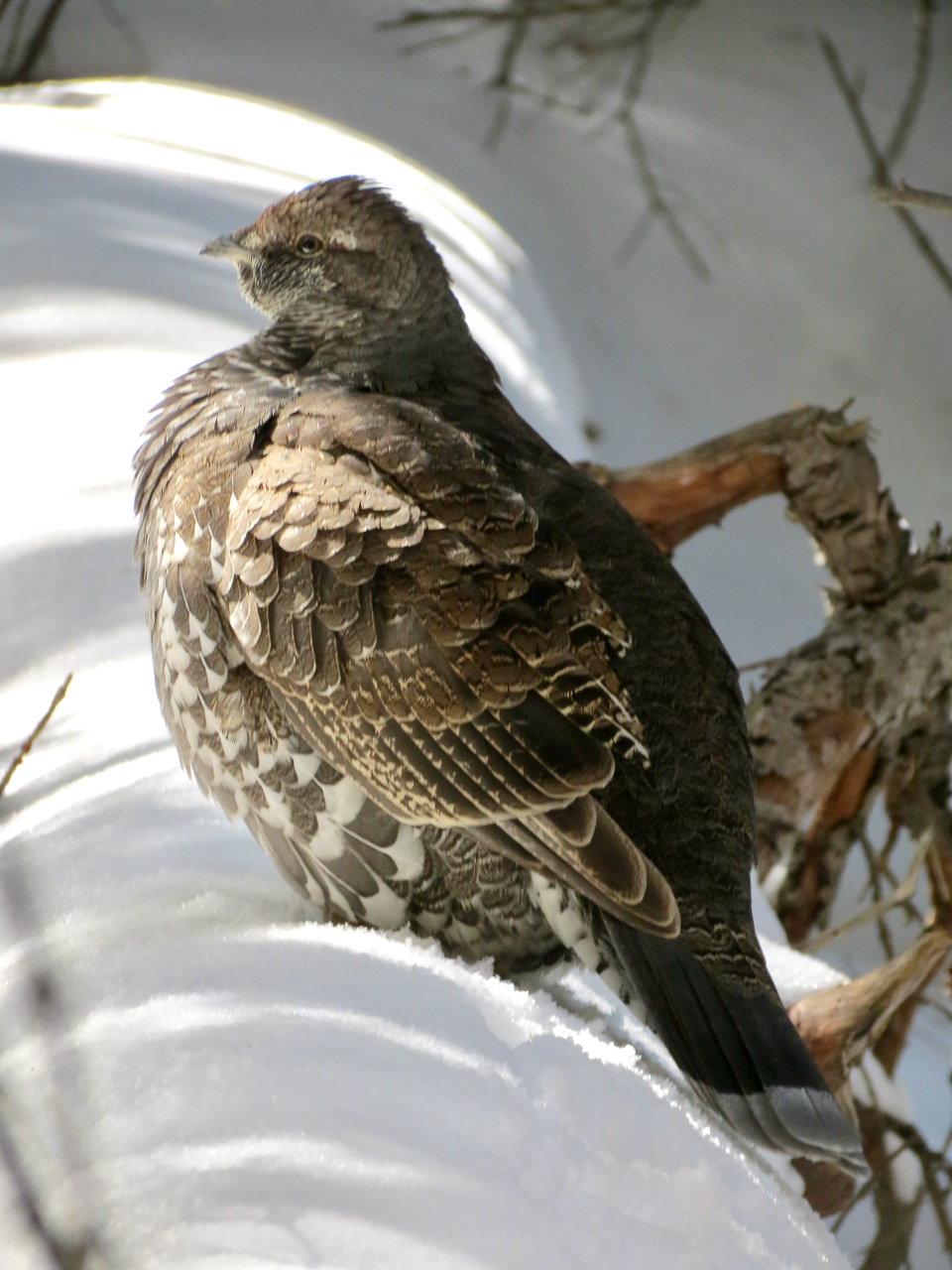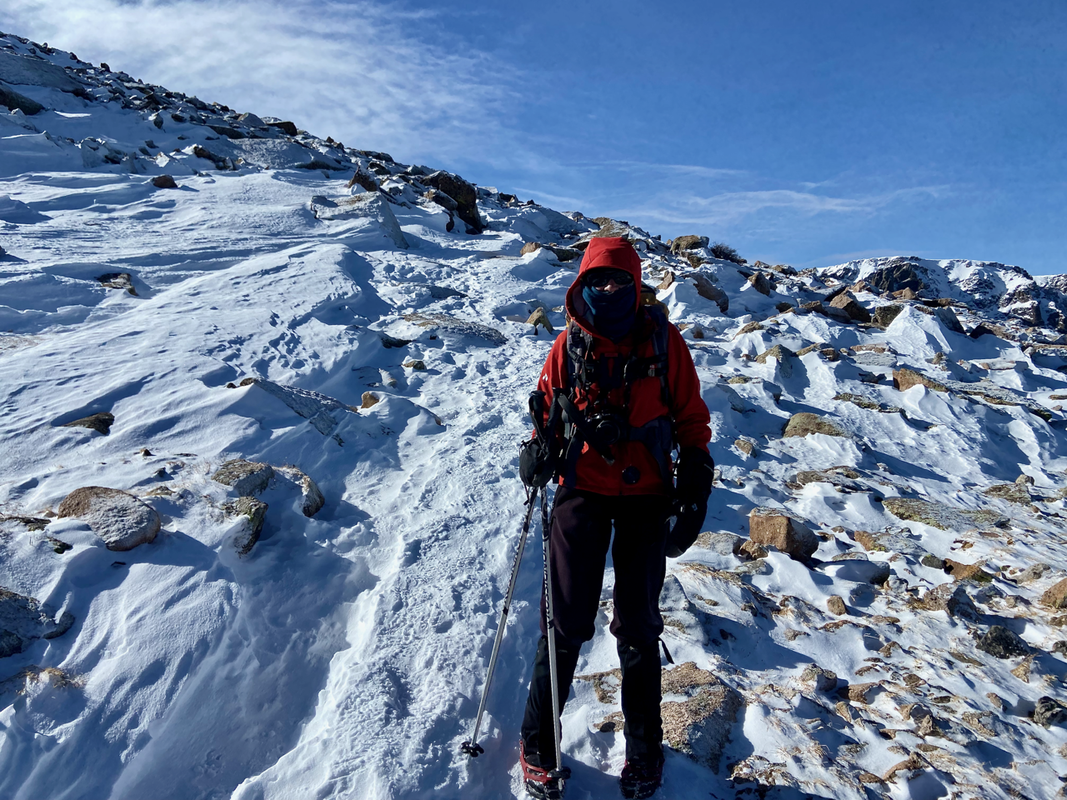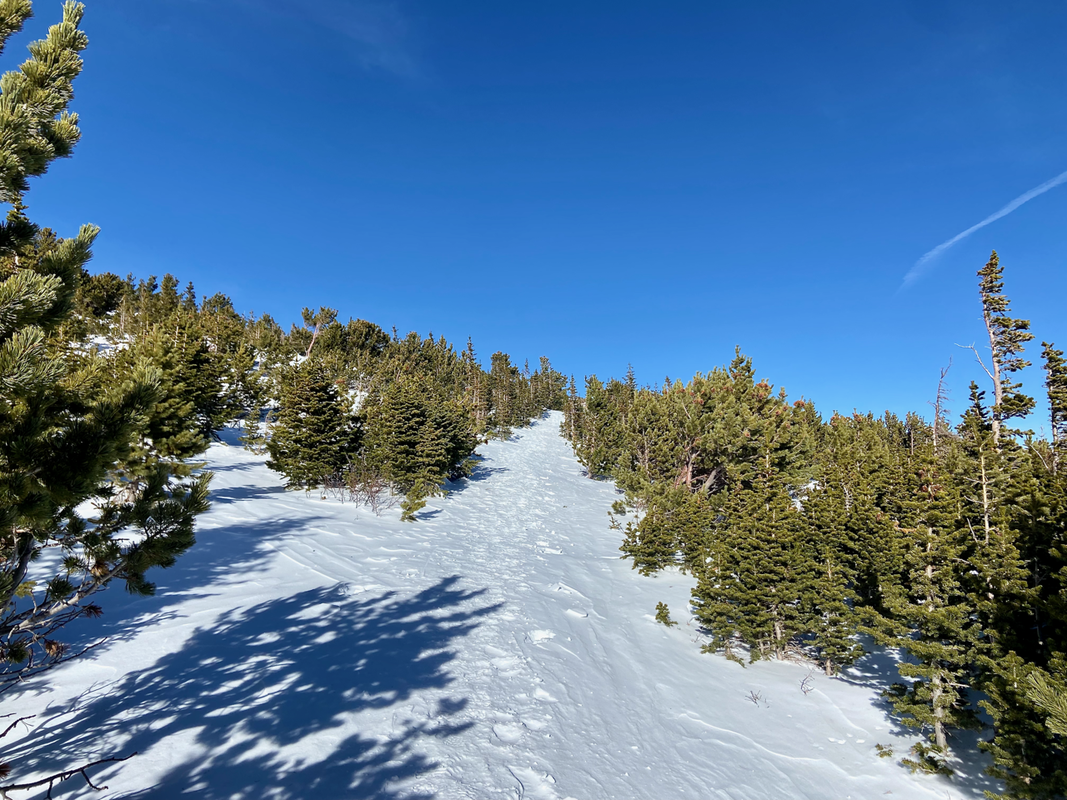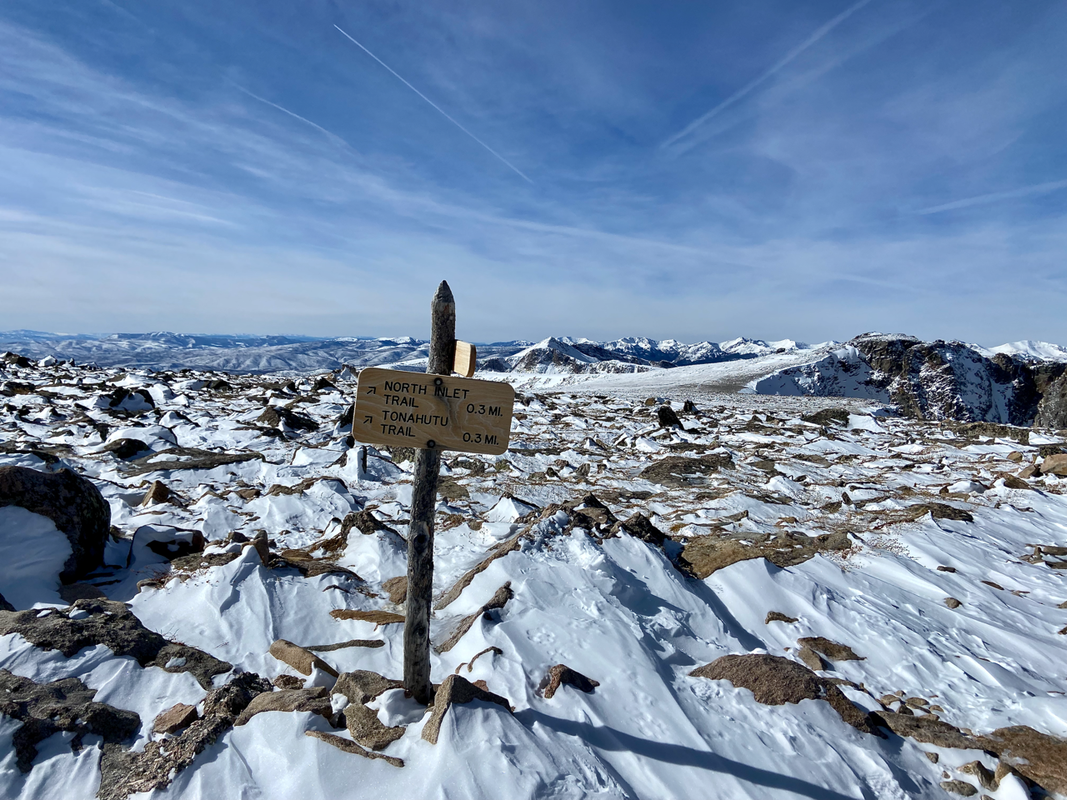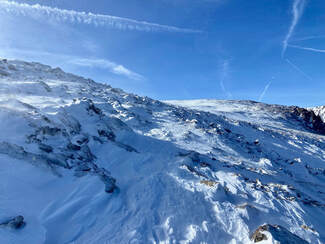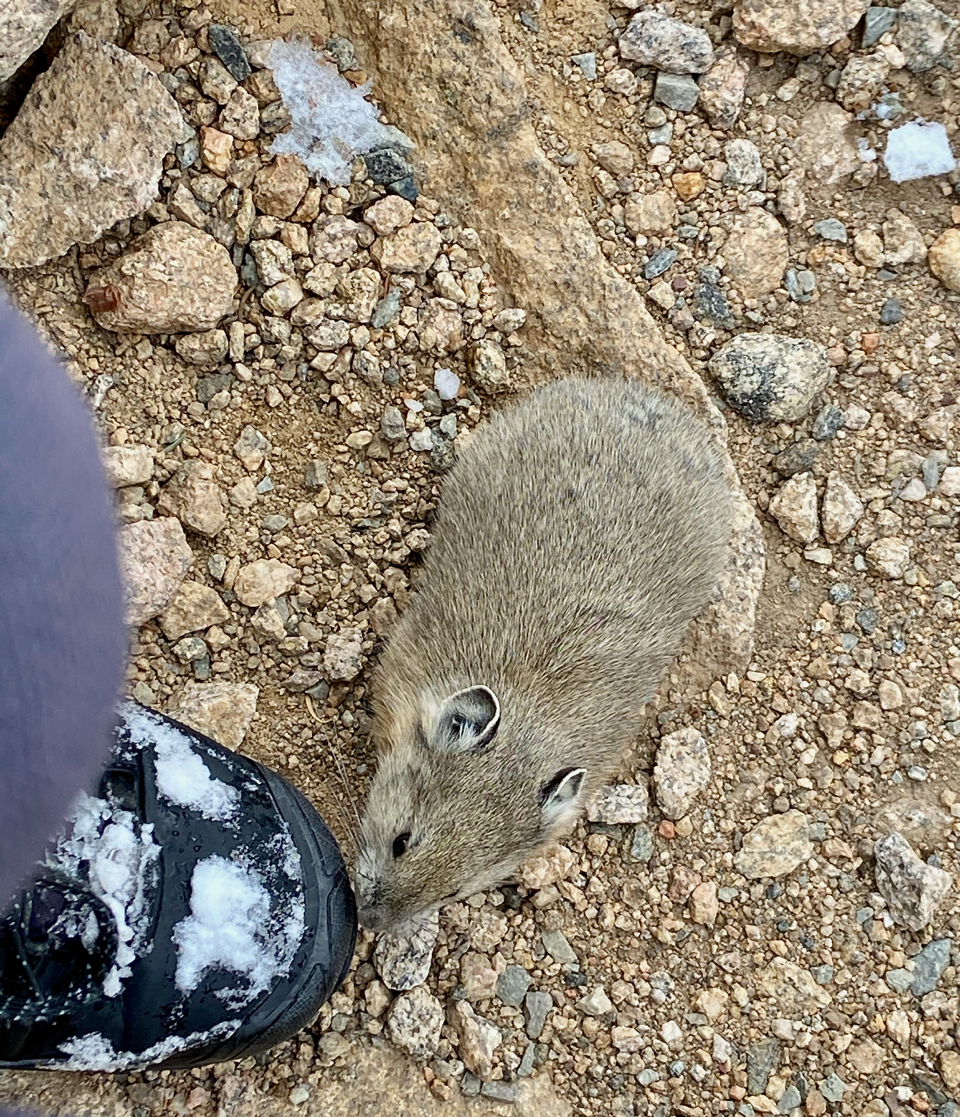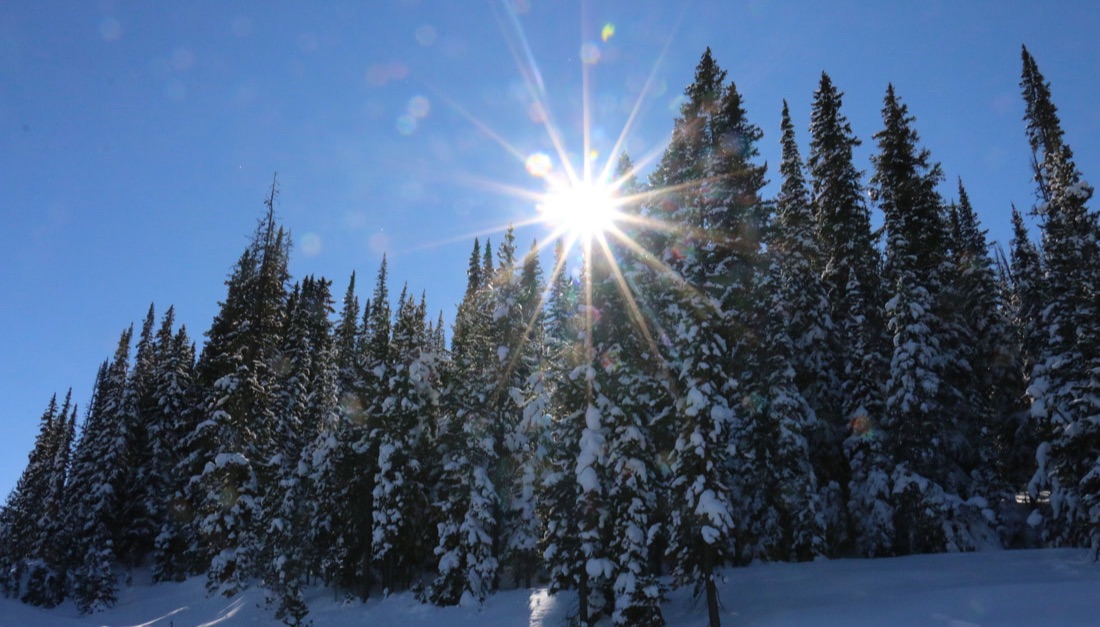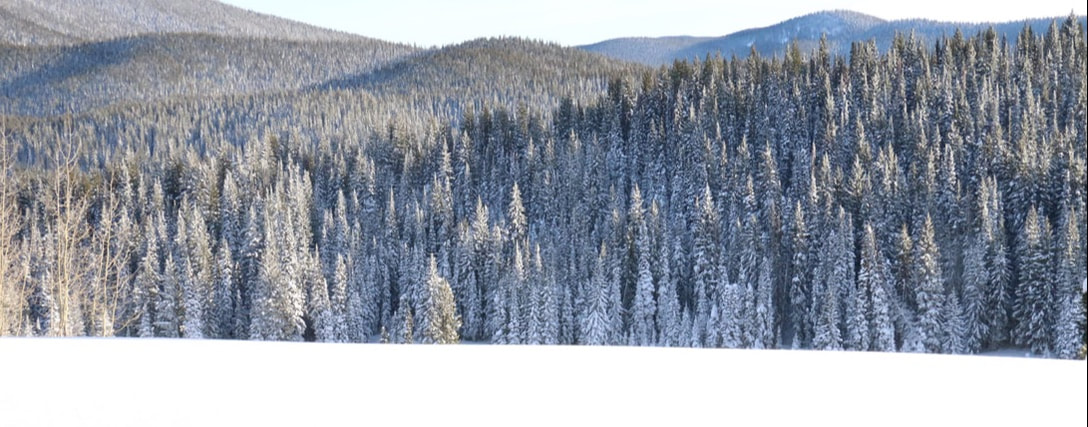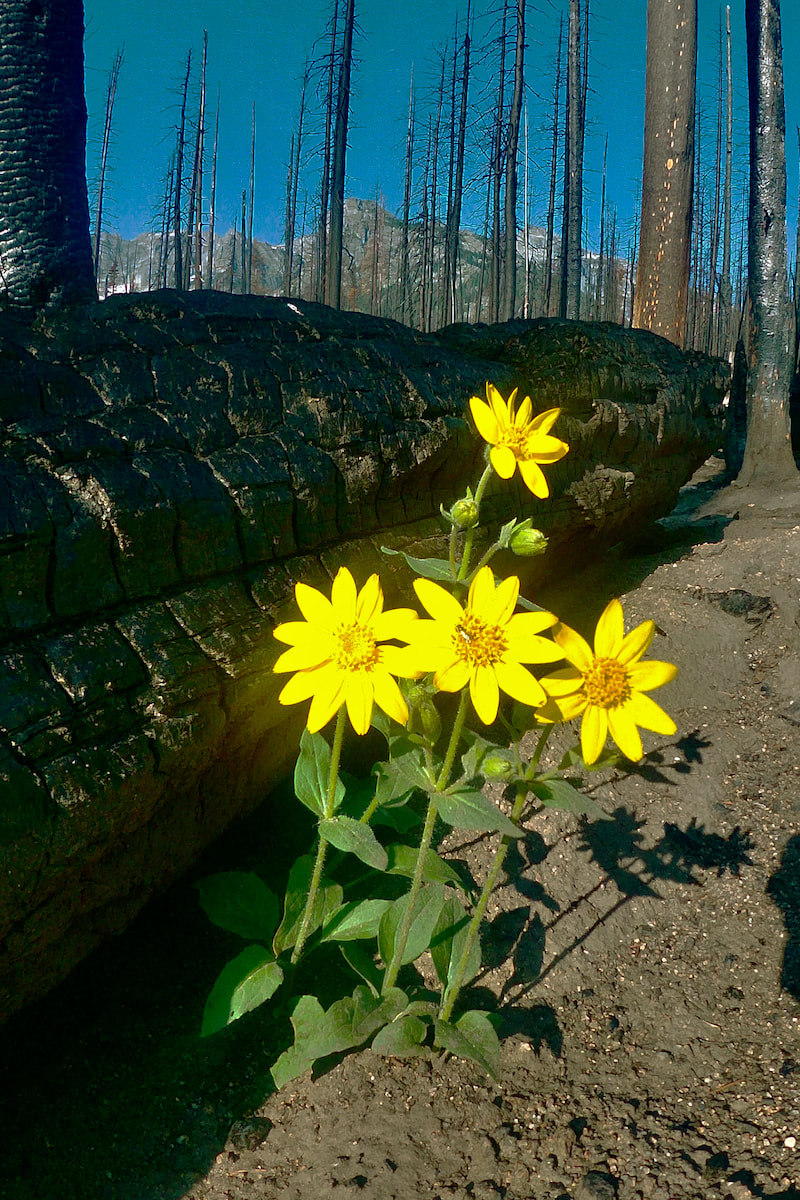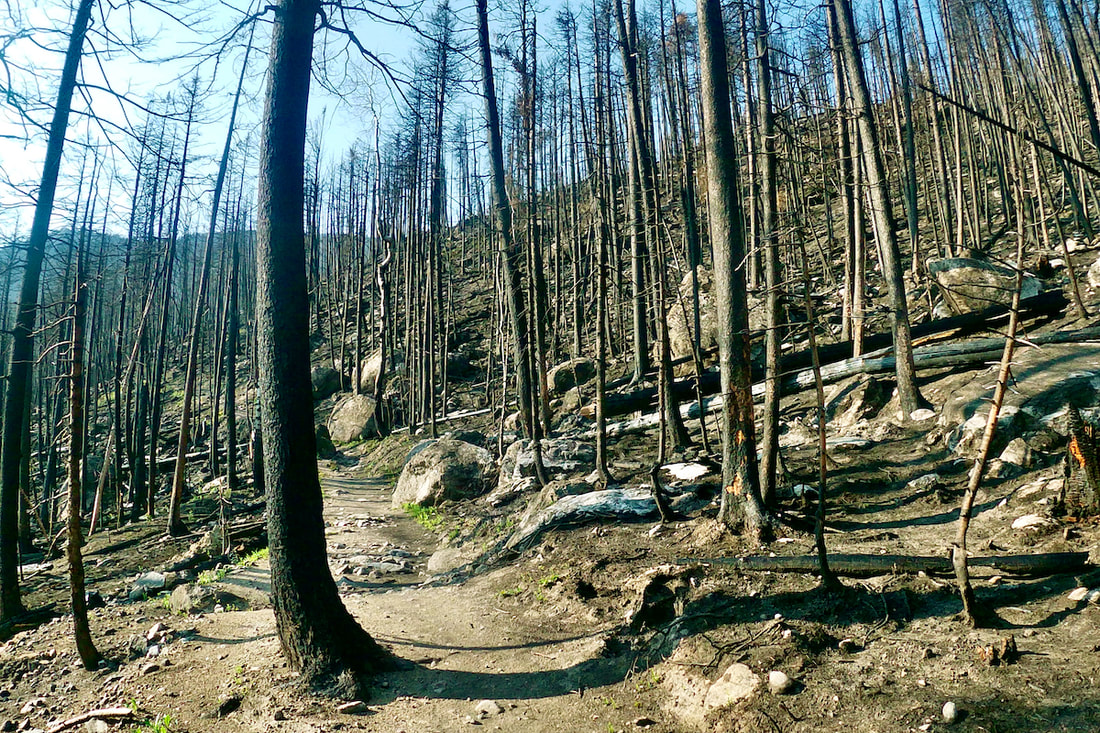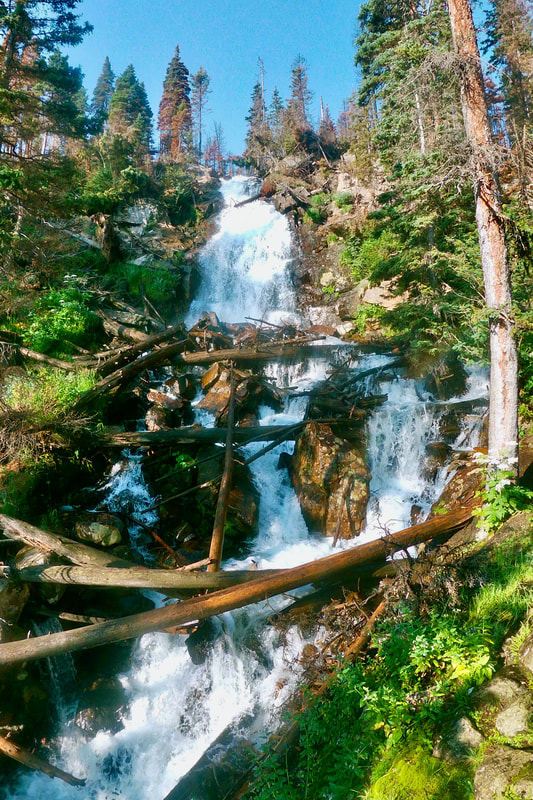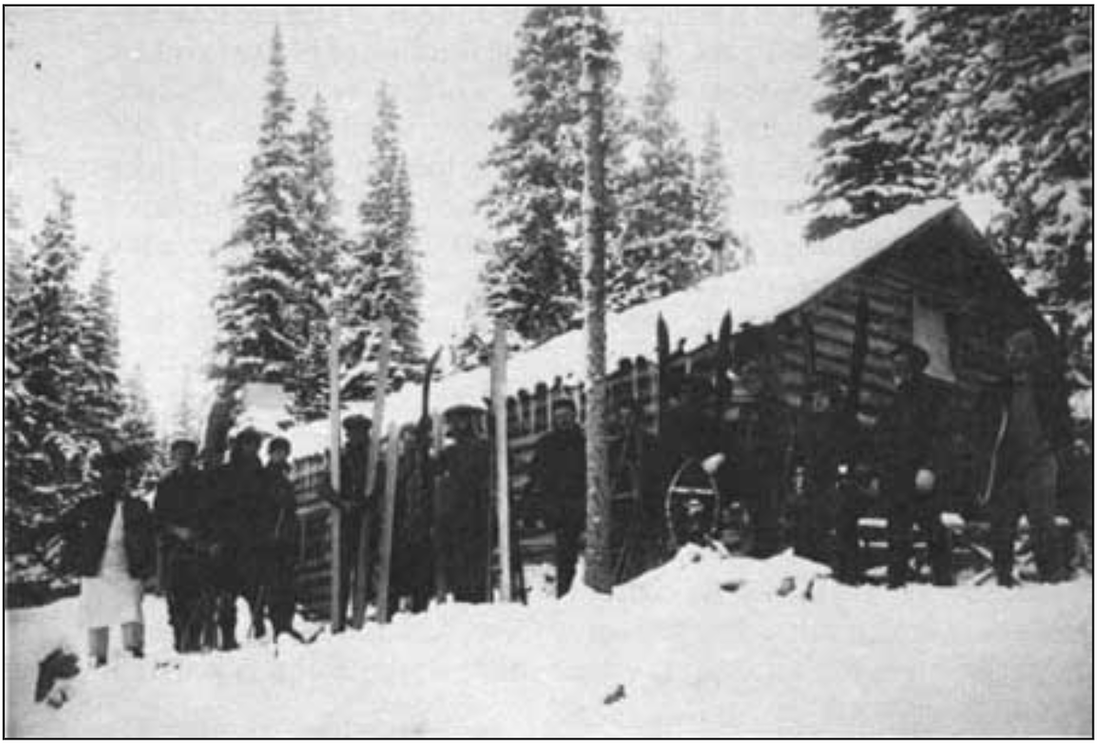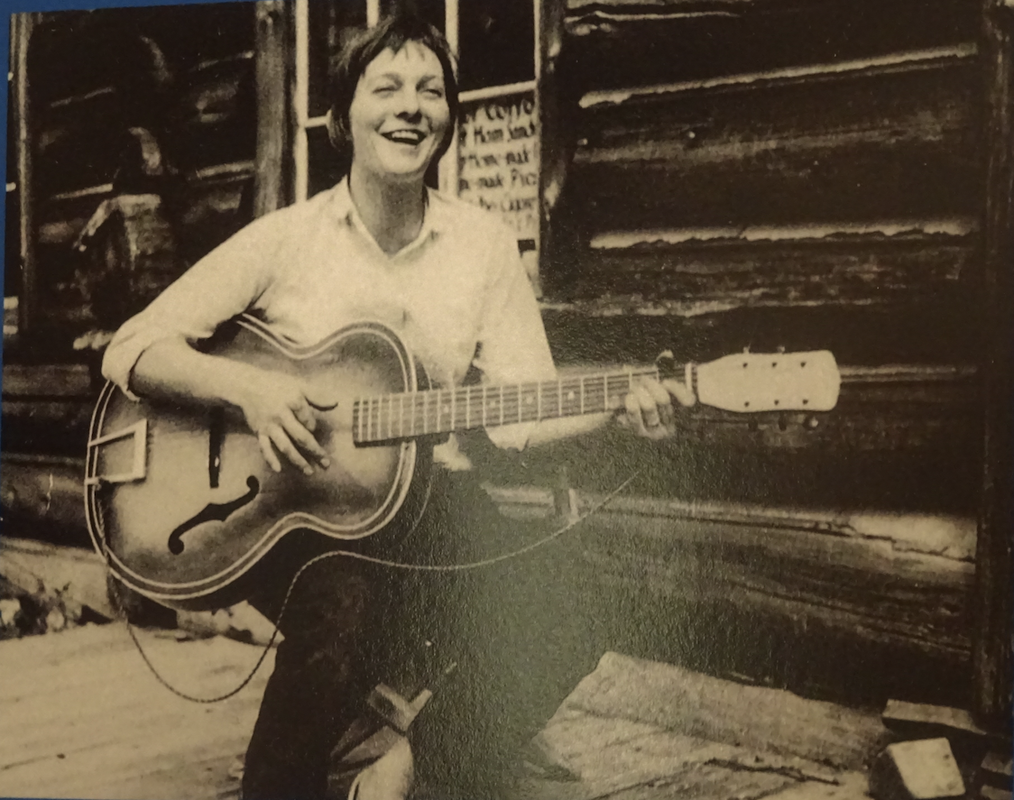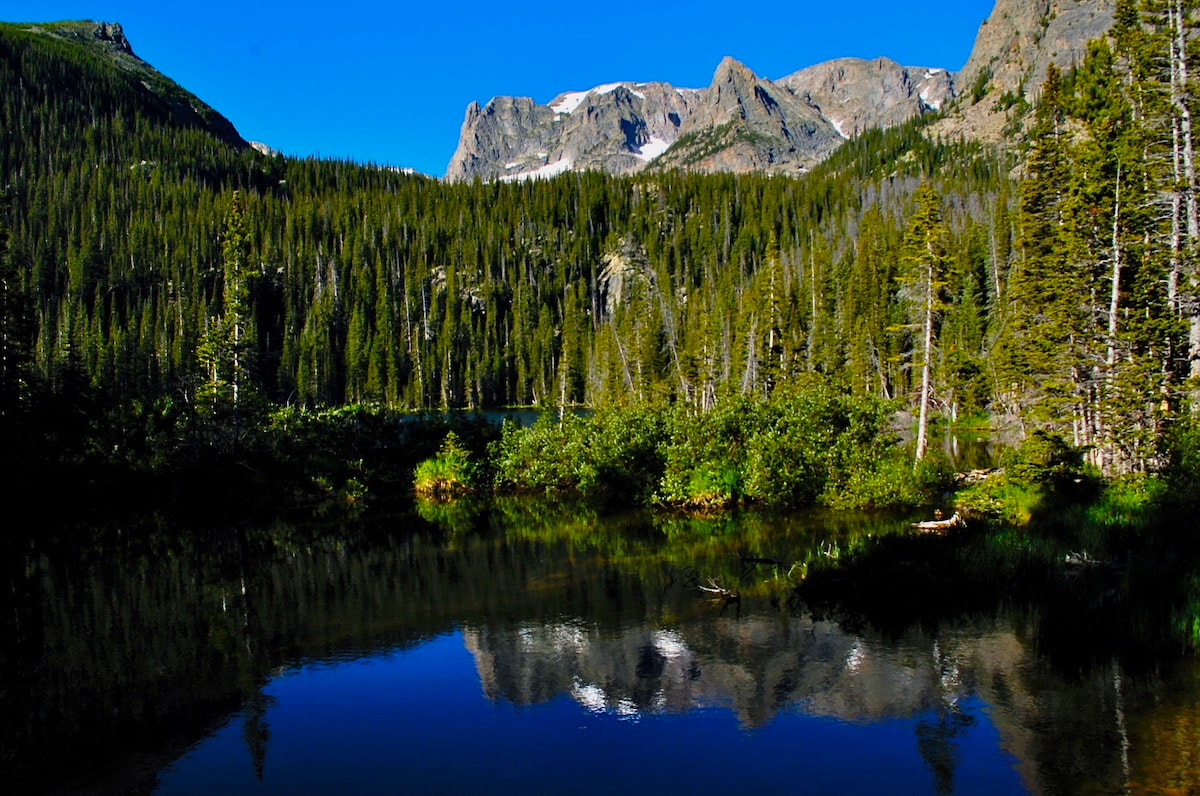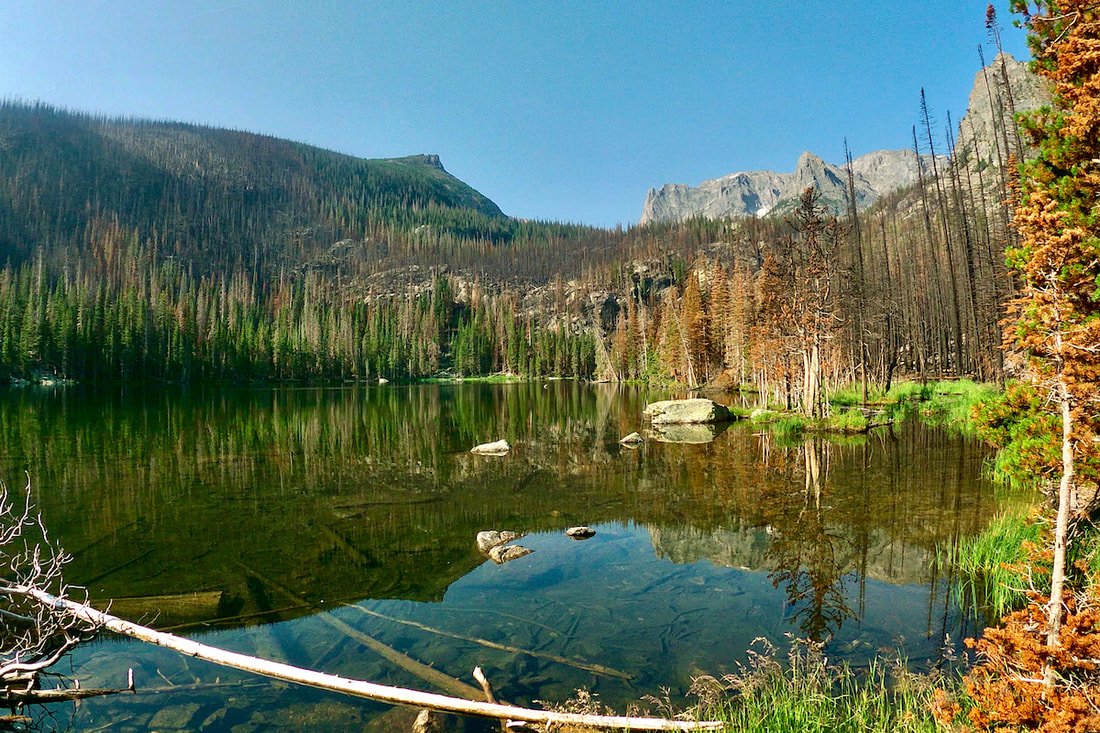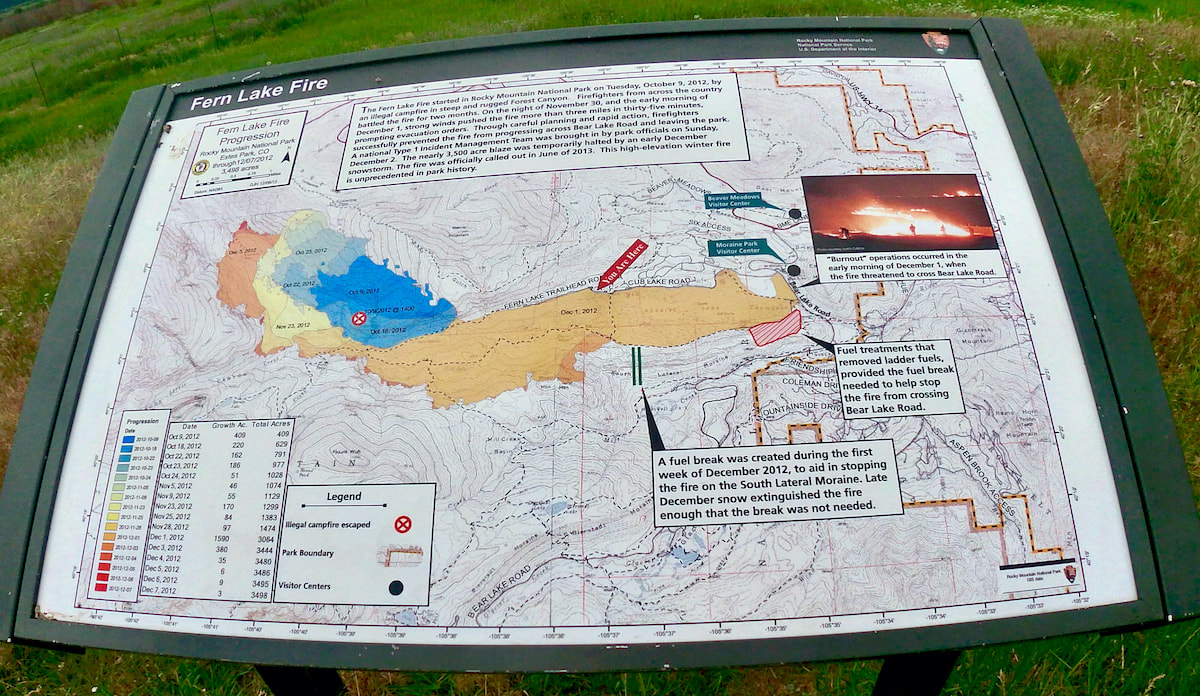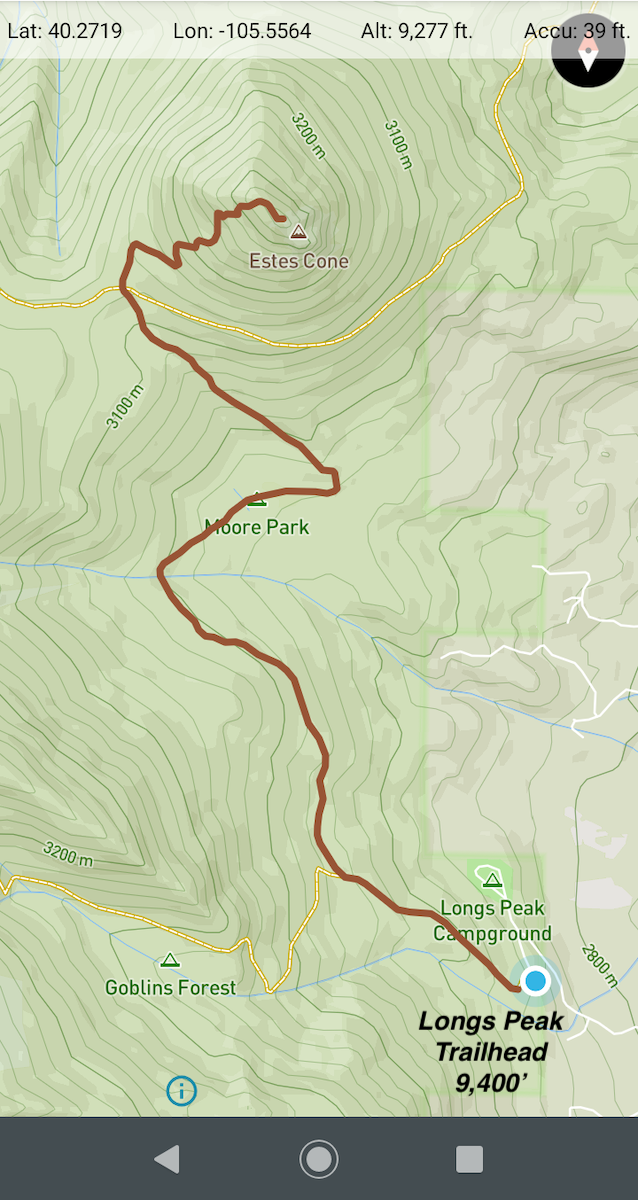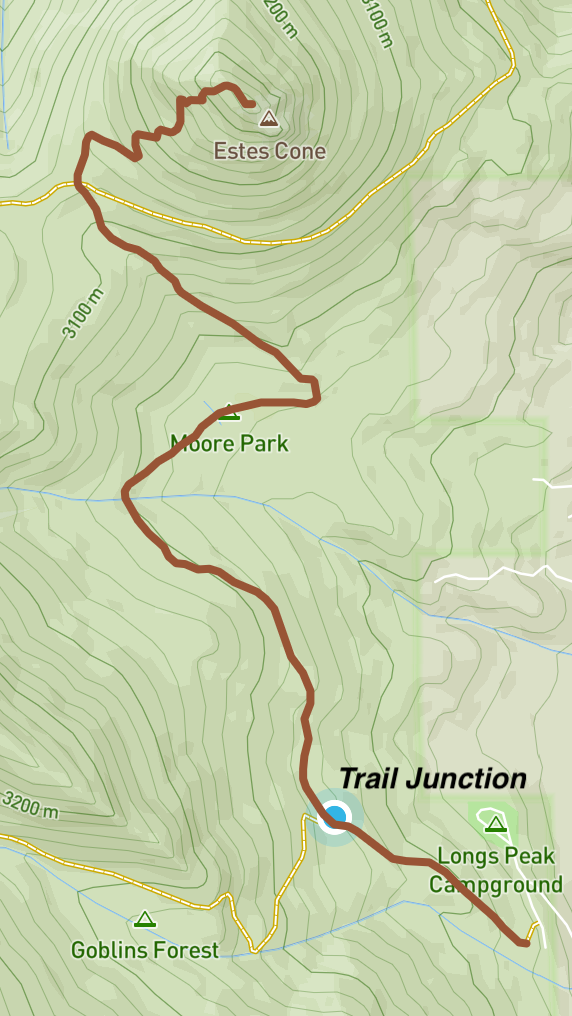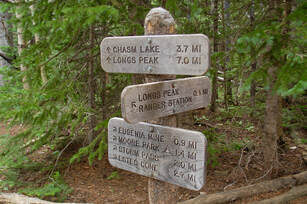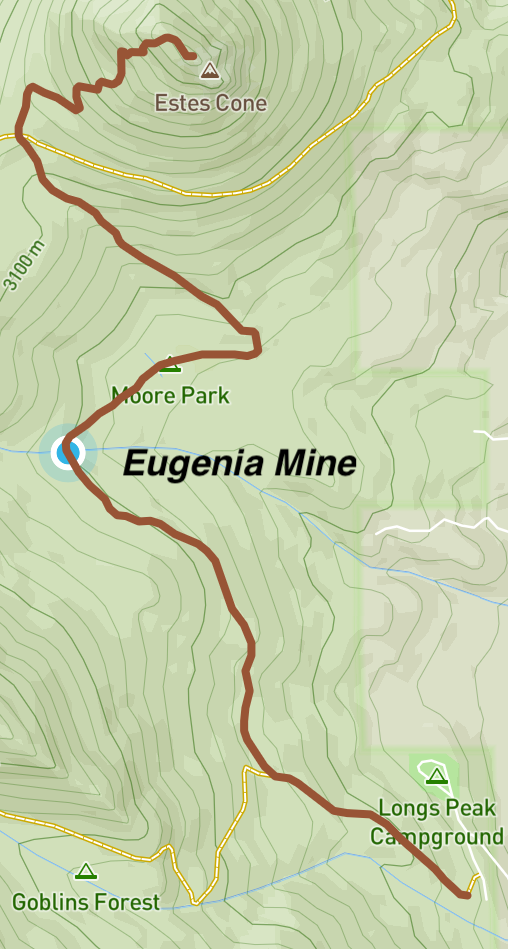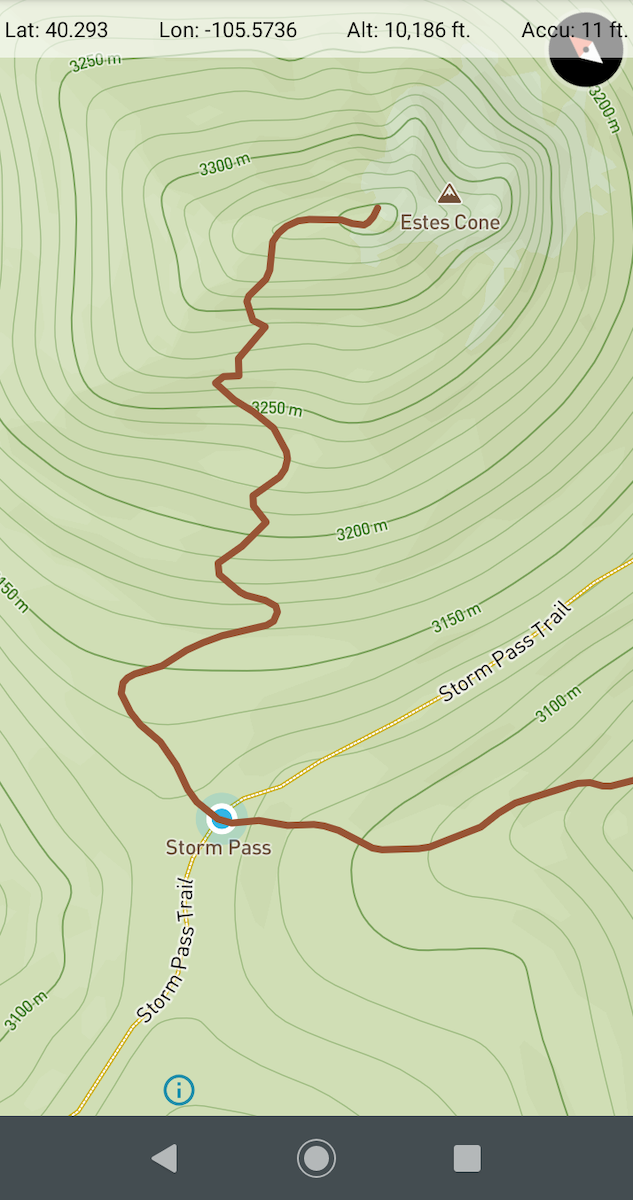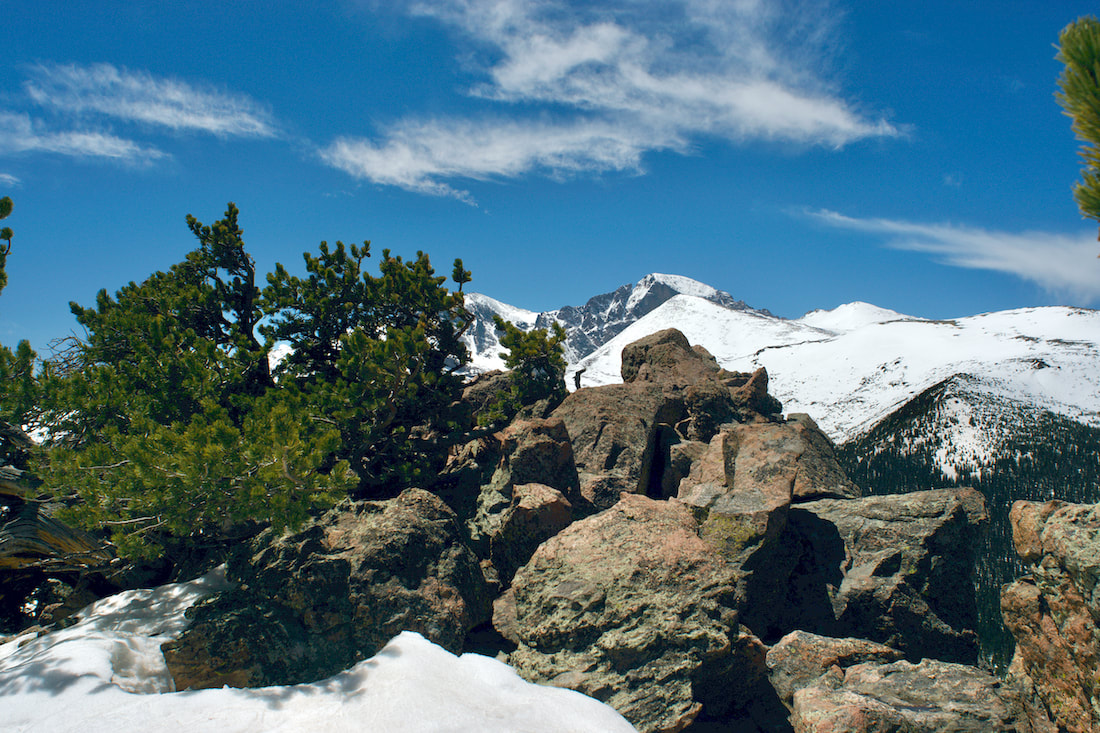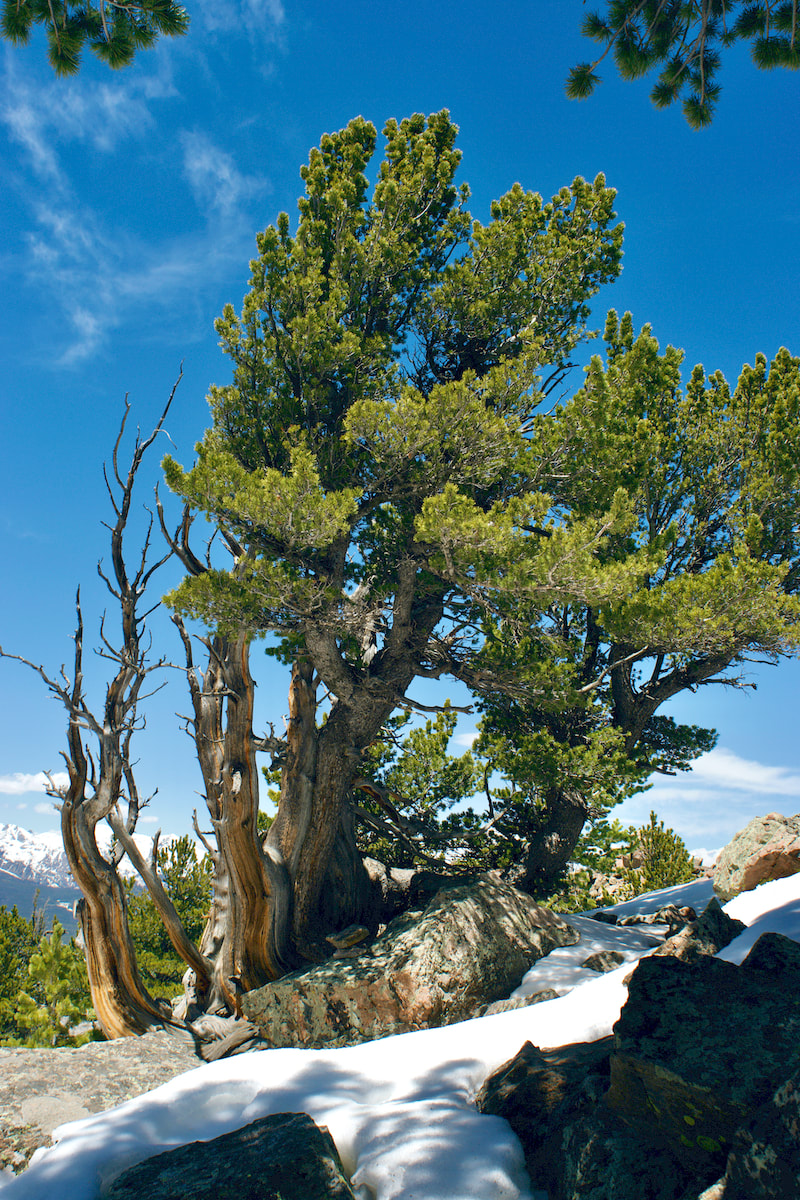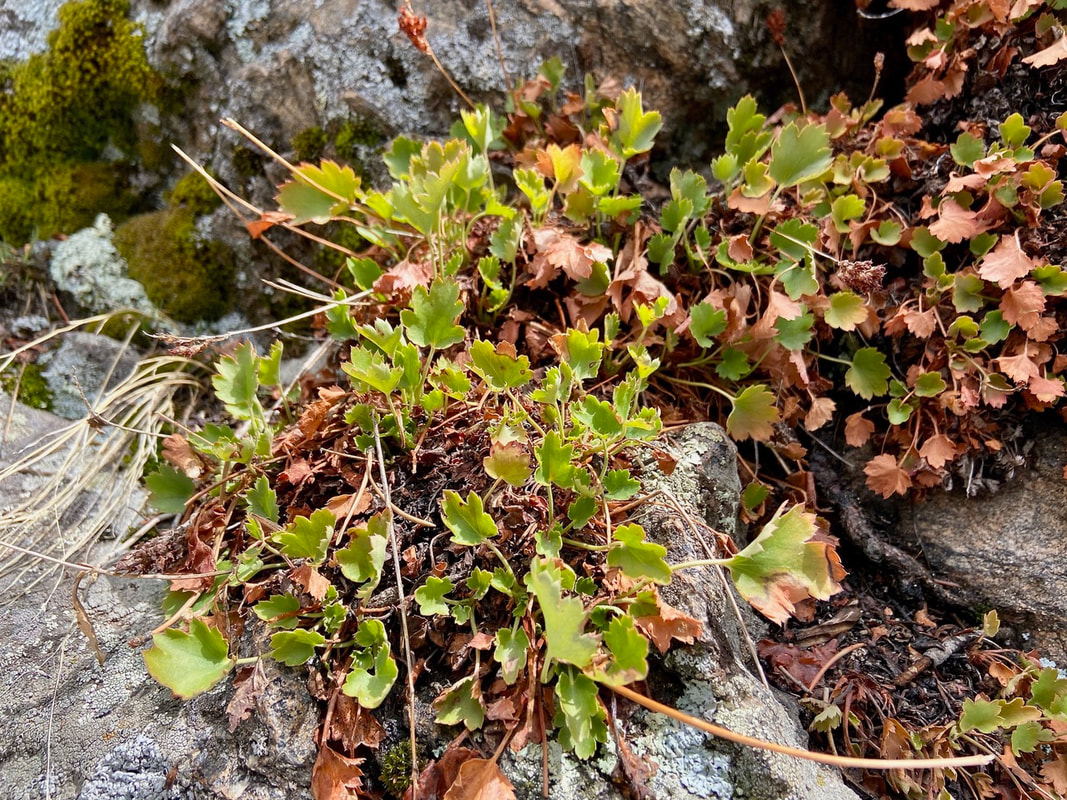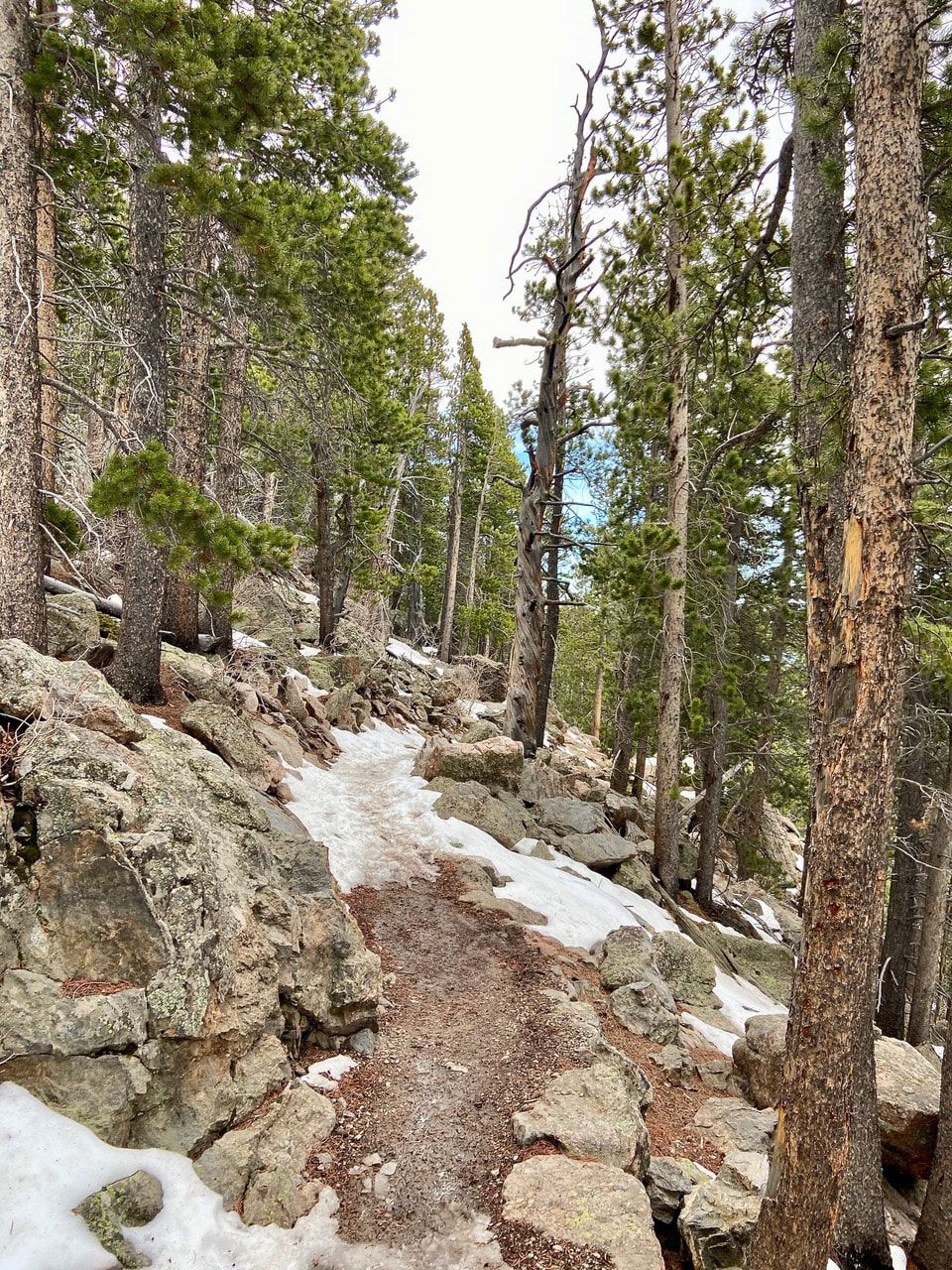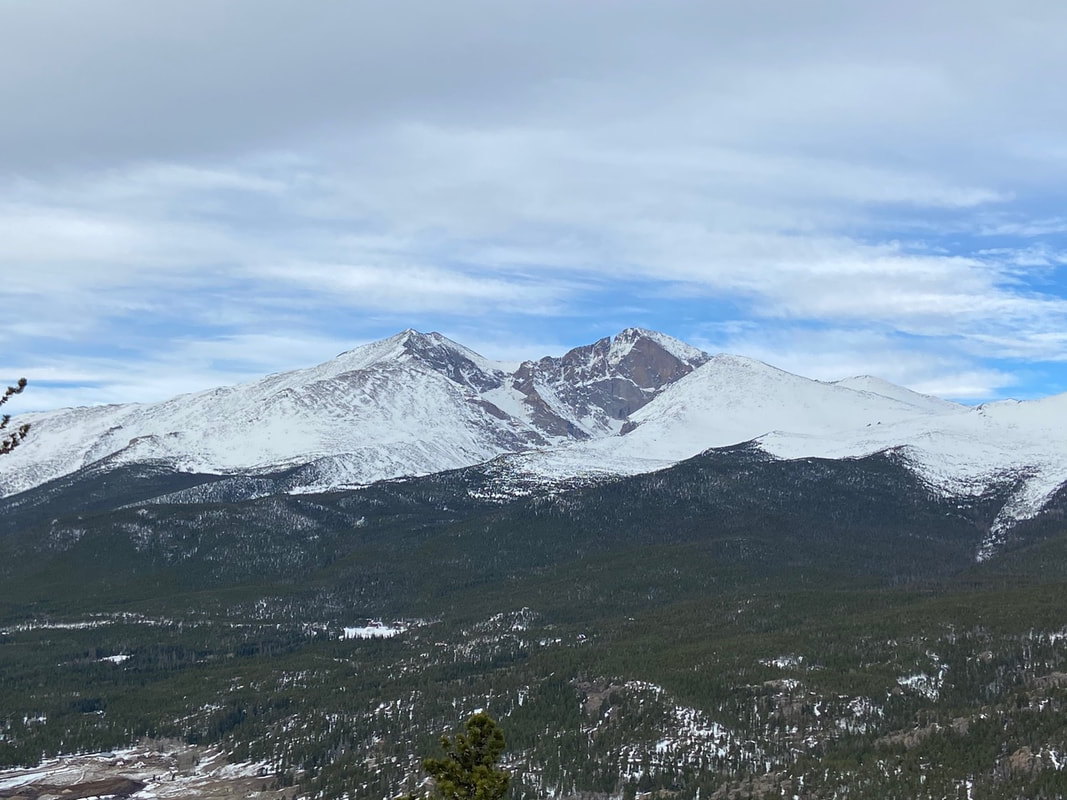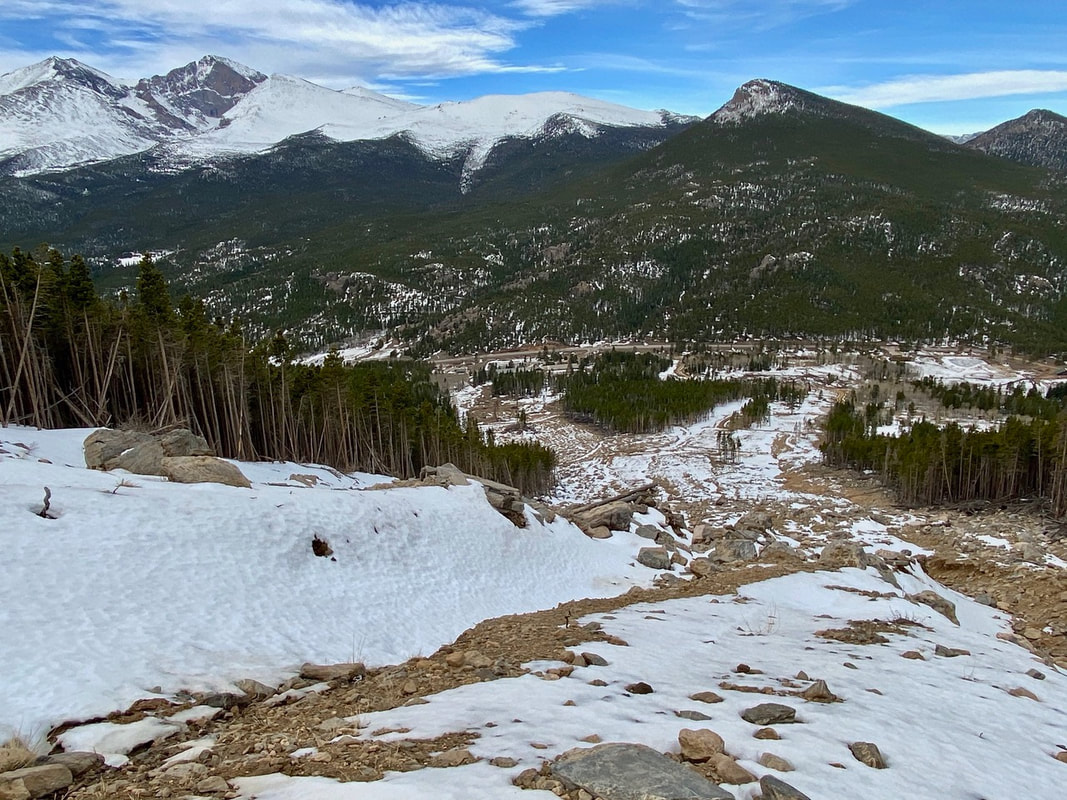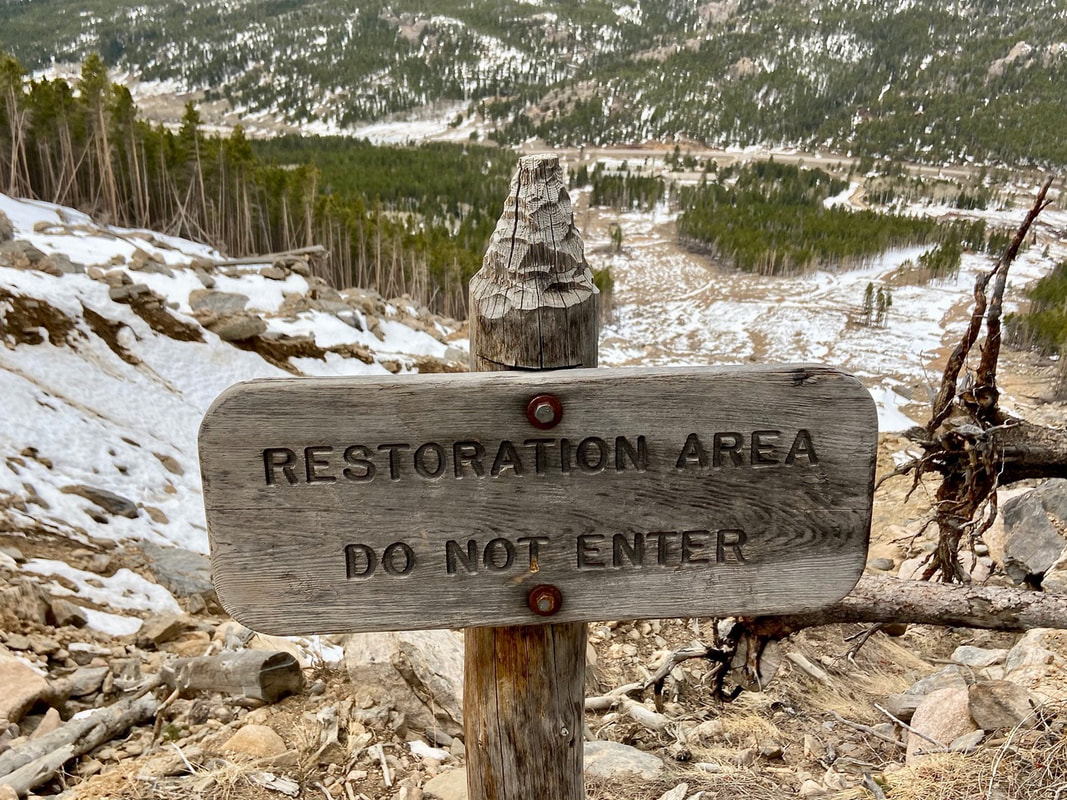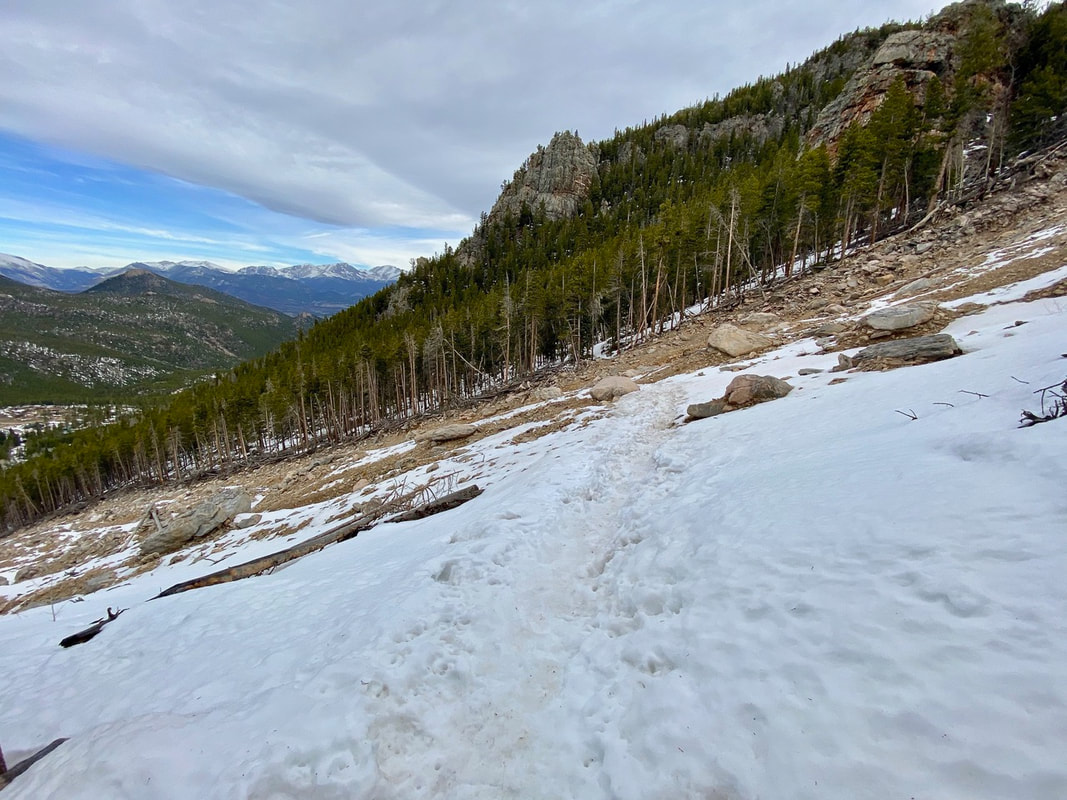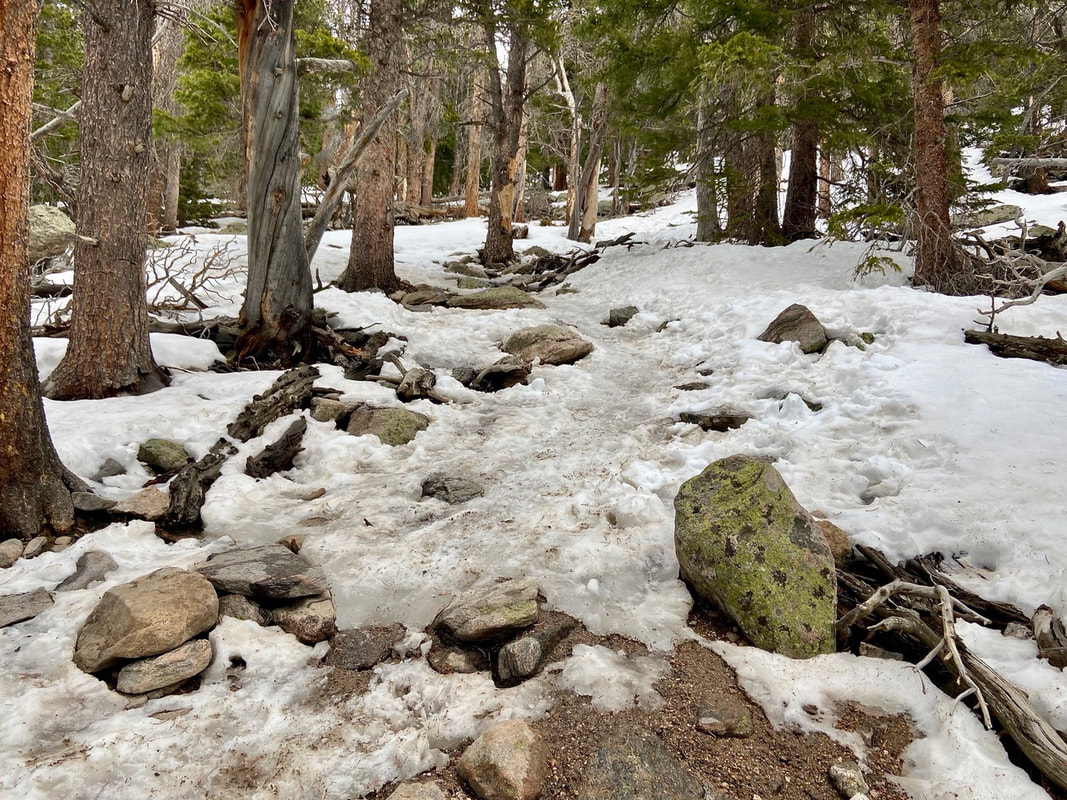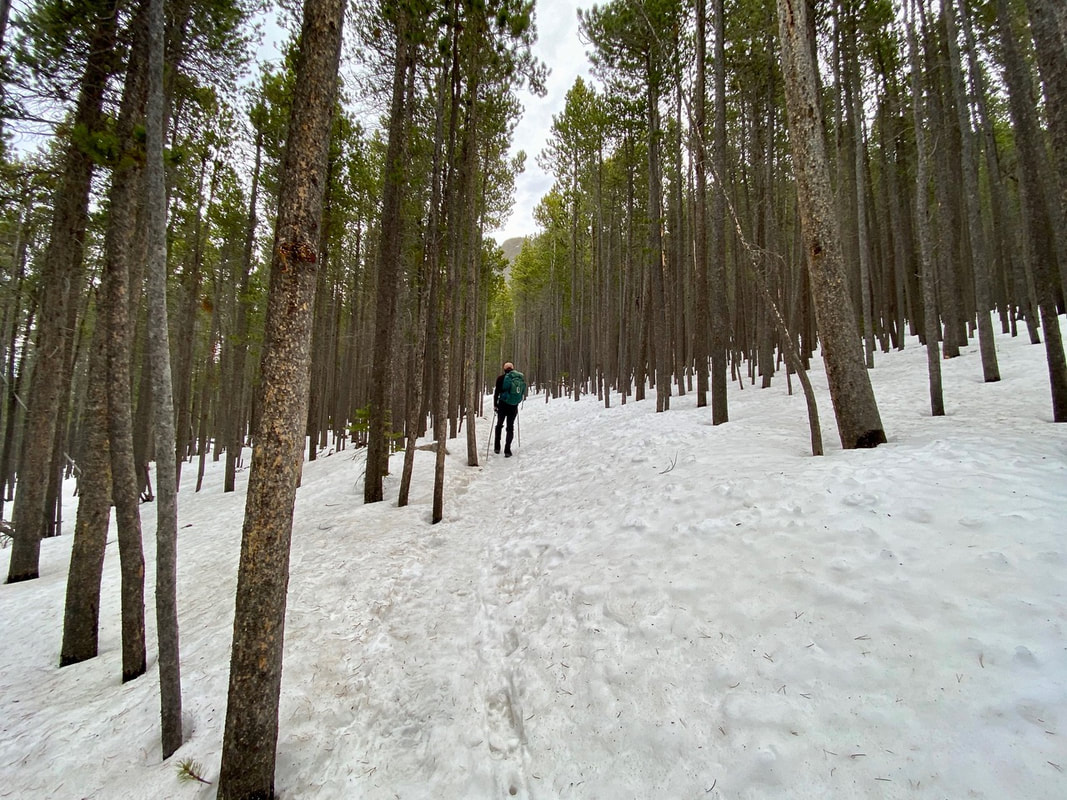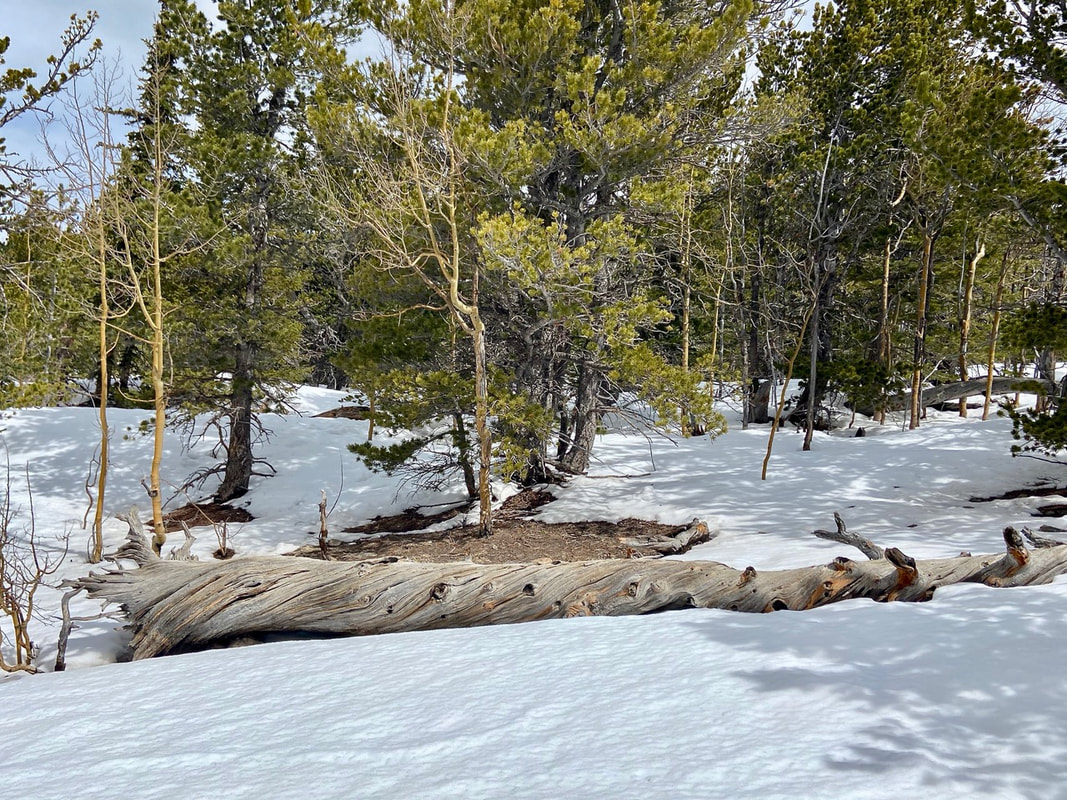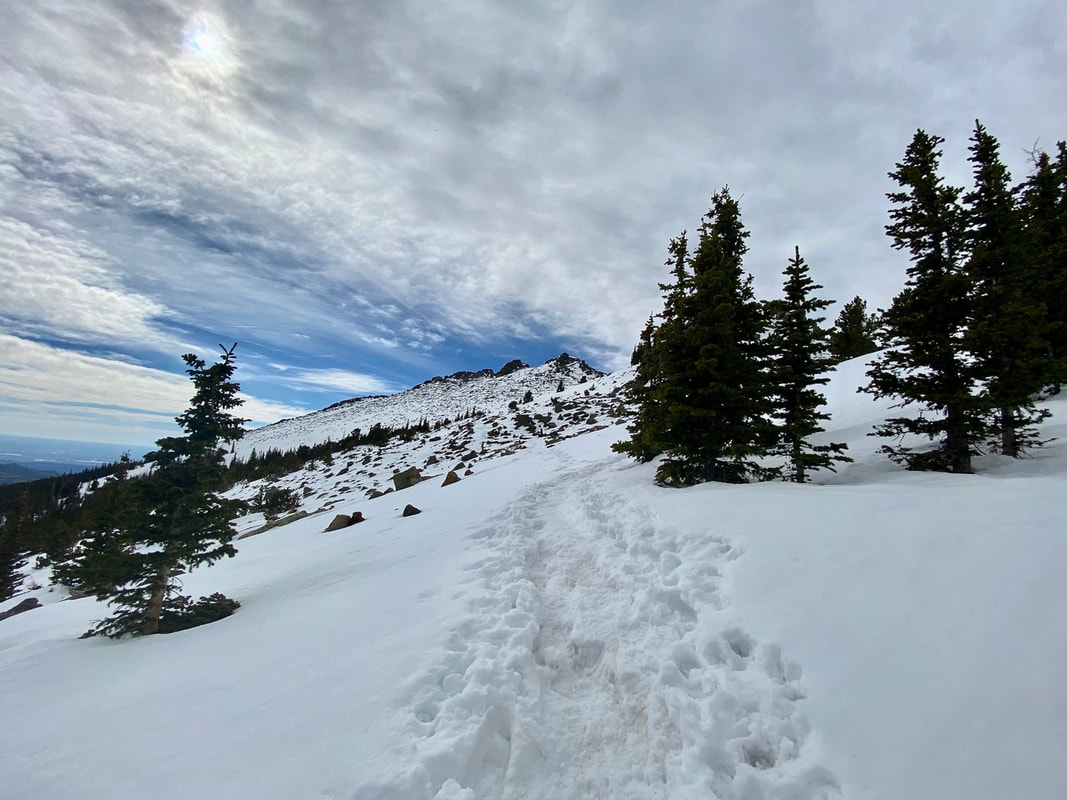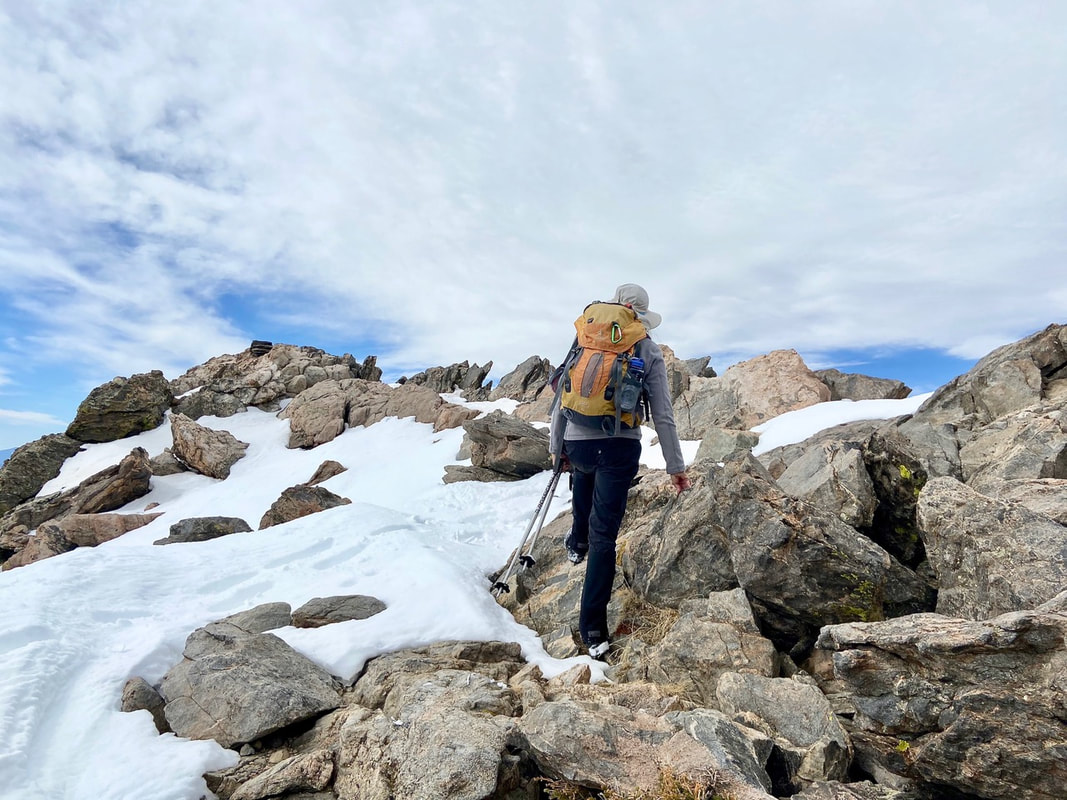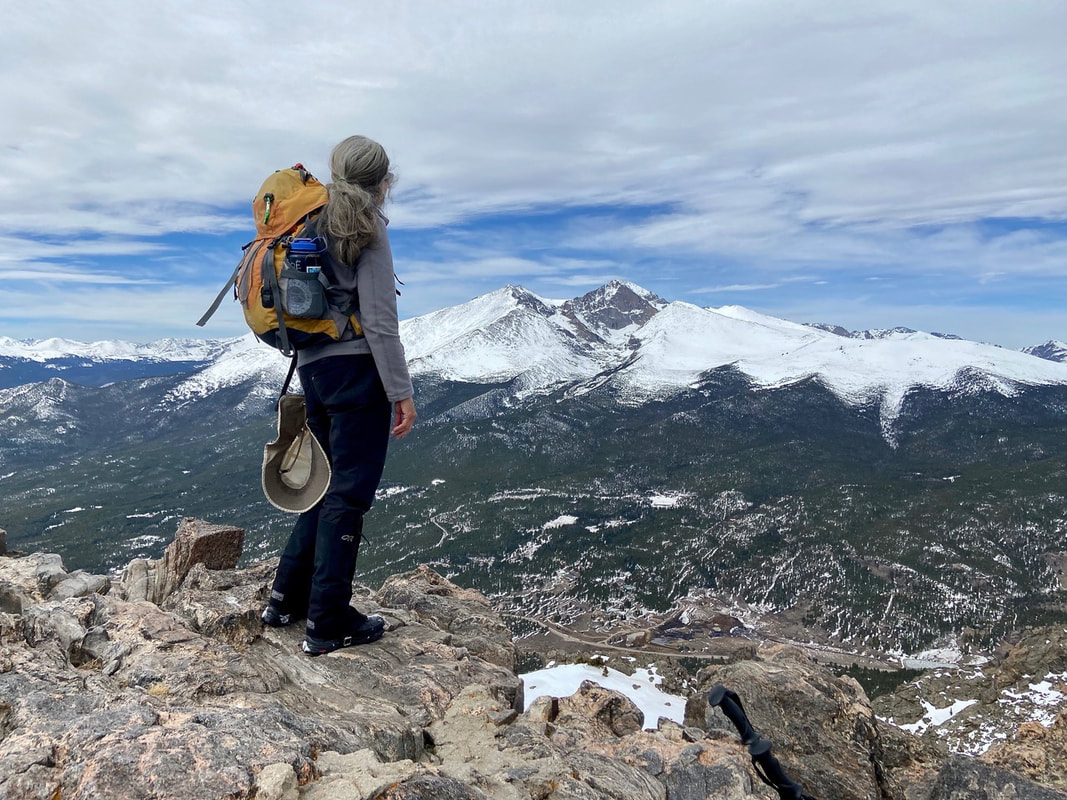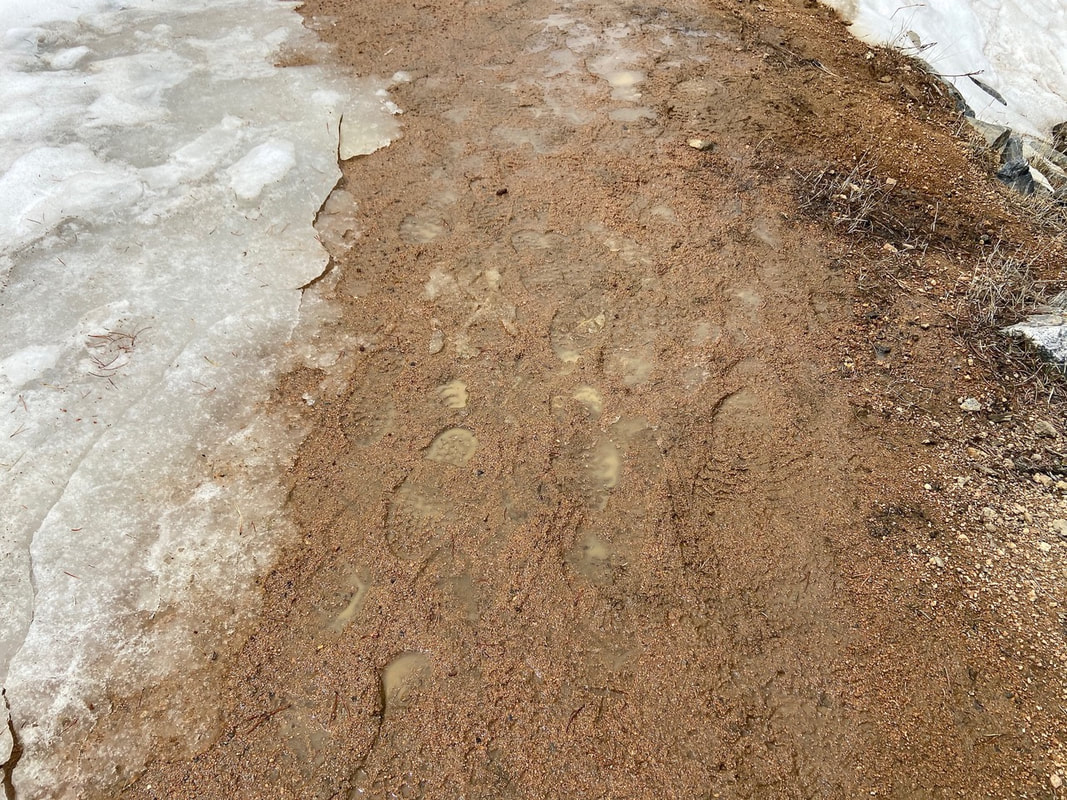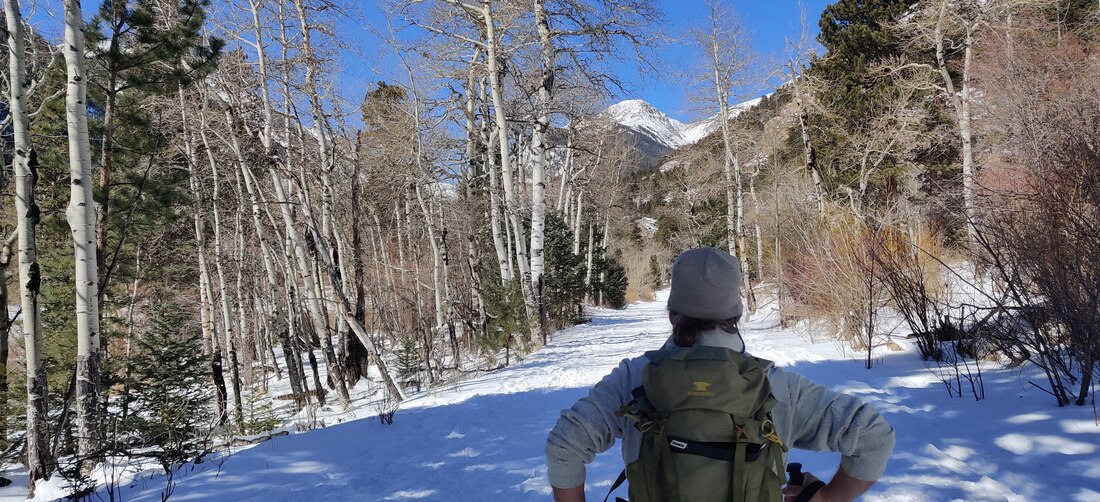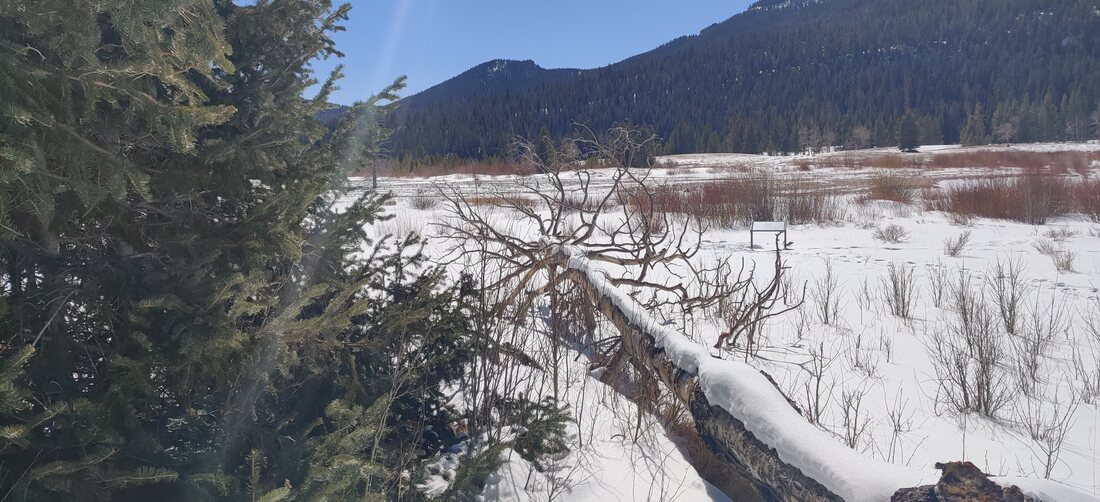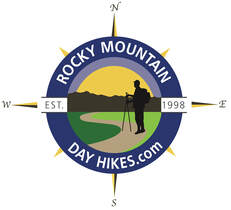|
Notes from the
Trail |
|
by Ally Anderson Physiology and Medical Sciences UA Franke Honors College University of Arizona “The mountains are calling and I must go." This is a popular quote by John Muir that rang true for a young college student named Ely Bordt. His first experience traveling to the Rocky Mountains pulled him in and never let him go. The Rockies challenged him and changed him, teaching him what his mind and body are truly capable of with enough grit and enthusiasm. It all started the summer of 2017 when Ely participated in a Colorado Ecosystem Field Studies program. The field study website describes this experience as ”An opportunity to study the Colorado Rockies and apply your classroom and textbook learning while immersed in an incredible mountain ecosystem setting.” After that first taste of living and working in the mountains, Ely's life trajectory shifted as he felt a strong pull towards the mountains postgrad. As a wide-eyed college graduate, Ely jumped at the opportunity to trade the flat lands of Indiana for the Colorado Rockies. Flashforward to February of 2021, Ely got a job in Longmont, Colorado and made a point to be on a trail whenever he wasn't working. Having no prior experience hiking or climbing, Ely would often hit the trials with the sole motivation of good views and impressive photos. This all changed when a year later he met his mentor, Kevin Rusk, a seasoned mountain climber with a big heart to show Ely the joy of pushing his body to new heights in the Rockies. Kevin taught Ely how to use his gear to climb in different terrains and instilled in him the importance of precautionary measures like bringing a rope even if you don't think you’ll need it. Ely followed Kevin's footsteps all winter, learning to climb glaciers, starting at their first climb together up Tyndall Glacier. When that winter was over, they climbed rocks together through the summer. “(Kevin) thought, let's get you off a trail and into some ropes, and since then... It erupted and now I'm snow climbing, rock climbing, and scrambling and don't so much stick with trails anymore, I aim to get off the trails.” -Ely As mileage started to increase and he started to fall more and more in love with the mountains, Ely went from a novice climber to someone whose mind revolved around getting back into the challenging terrain of the mountains. Rocky Mountain National Park and the Indian Peaks south of the park became his favorite spots in his early years of serious climbing. He worked tirelessly to condition his body to handle even the most advanced terrain alongside his mentor Kevin. How is it that in only a few short years, Ely has managed to completely shift his lifestyle from somewhat sedentary to extremely athletic? What are the physiological implications that come along with the ability to sustain endurance and strength while clinging to the side of a mountain? How does Ely fuel and train his body to perform at such a capacity? Shift in Lifestyle and Mental Headspace Ely has not always been able to casually climb Longs Peak. Longs is a challenging 14er that requires great deals of mental and physical toughness and is a great achievement for those who complete it. Ely has joyfully completed this climb multiple times and has plans to climb it again! This kind of ambition and ability to take on such challenges illustrates the dramatic shift from how he held himself in his childhood. He explains his early years as a period of time when he was overweight and lacking motivation to keep a consistent exercise regime due to a lack of excitement towards most types of physical activity. ”Prior to hiking, I was a gamer. I spent a lot of time online. There's a lot of toxicity online. I didn’t get out much. Hiking allows me to clear my mind.” - Ely He was an uninspired kid, most often seen indoors playing video games, lacking the desire for exploration or challenging physical feats. Fast forward to the present day, Ely is calmer and more mellow, feeding off of the serine mountain landscape he surrounds himself with. He's a social young adult, full of ambition and he credits this dramatic shift into a more positive headspace to the mountains. “I was entirely unathletic prior to that (moving to Colorado), it was a big change. The views drive me to get out but more so, if I go too long without the mountains, I'm thinking, I need to get a workout in. I need to get active.” -Ely “The mountains are something I get hungry for if I go too long without” -Ely Ely explained how he's tried weightlifting and cycling, but the mountains are the first and only thing that he's seen dramatically motivate him to get active. He has gone from an unmotivated child to a driven athlete looking forward to the next adventure, overall more enthusiastic and motivated about life as a whole. Why Does Exercise Improve My Headspace? As Ely experienced firsthand, there is a link between a lifestyle that prioritizes physical activity and improved mental headspace. The moment someone participates in physical activity, there are neurochemical changes that start taking place. There are hormones directly correlated to stress, which are reduced upon an exercise induced increase in heart rate. As these stress hormones are reduced, chemicals in the brain called endorphins are increased. Endorphins act on the body to brighten a person’s mood and alleviate stress. These chemical changes happen every time a person is physically active and even more consistently in someone who has a habit of increasing their heart rate through exercise. This explains why Ely’s attitude and outlook seemed to transform completely as he became more active. He began to alter his brain chemistry as a whole! Building Cardiovascular Stamina On top of building mental endurance, Ely has also been on a journey of building cardiovascular stamina. This is the ability of the heart and lungs to endure longer and harder through difficult exercise. Coming from an inactive lifestyle in Indiana, Ely describes this as a significant challenge. He started training on lower elevation trails in the Boulder Colorado area and built up to the challenging elevations of the Rocky Mountain National Park. Ely noticed improvements in his cardiovascular capacity when he got out into the mountains as much as possible getting as high as possible! He would celebrate each landmark climb at a higher elevation, constantly pushing himself to get higher and on more challenging trials. Training at Altitude A very common strategy among athletes is training at higher altitudes to develop stronger cardiovascular endurance because of the cardiovascular challenge of being in low-oxygen environments. Something special happens to the body’s ability to carry oxygen when someone puts themselves in a high-altitude environment where the oxygen is thin and less abundant. The low amounts of oxygen trigger a hormone called EPO (erythropoietin), which stimulates the production of red blood cells. The red blood cells begin to grow larger and increase in number to maximize the amount of oxygen they can hold and transport throughout the body. Ely, being an elite athlete who spends the majority of his time exercising at high elevation, has red blood cells that look differently than those of an athlete at sea level who has an abundance of oxygen in the air around them! If Ely were to go down to sea level, theoretically, he would find that his cardiovascular endurance would be even better. He has such a high number of red blood cells at a greater volume ready to make the most of little amounts of oxygen but finding that at sea level there is more oxygen to use than normal. It is very common for athletes to train at high altitudes to change their red blood cell composition and come back down to sea level with an advantage. Fueling the Body to Endure the Mountains Once Ely became more acclimated to the high elevation of the Colorado Rockies he was able to withstand more difficult trails mentally and cardiovascularly. He started to push the limits of what his body was able to achieve and to do so, he needed the right fuel. This meant taking nutrition to a whole new level. Ely describes his diet as high protein and high carb to have energy to perform at challenging levels, restore muscle, and maintain strength. Ely has a specific diet the day before a big hike. He prioritizes water, drinking four liters throughout the day before his planned day in the mountains. He also prioritizes eating as many calories as he can: chips, queso, whole pizzas, you name it. Ely expressed that the biggest component of waking up with energy is drinking substantial amounts of water the day before. While he’s out on the trail, Ely focuses on his sugar intake: fruit snacks, Honey Stingers, and salt tablets with and without caffeine. Ely is slightly anemic, meaning he has a blood disorder that reduces the effectiveness of the blood stream's ability to carry oxygen. To combat this, the morning of a big day in the mountains he will eat two servings of dry Cheerios. This cereal contains 70% of his daily iron intake. Consuming great amounts of iron translates to an increased amount of hemoglobin and an increased amount of oxygen capacity in the mountains. He eats these Cheerios without milk because milk inhibits iron absorption when eaten in conjunction with iron. Importance of Good Nutrition Ely's methods of fueling his body before and during athletic activity are widely used by athletes performing at his level of difficulty. His emphasis on water intake the day before extreme physical exertion is very important, especially on a hot day where perspiration is more likely. Water is important in so many aspects of body functionality including regulation of body temperature, lubrication of the joints, and transportation and digestion of important nutrients. Adequate levels of hydration affect many aspects of athletic performance. Carbohydrates are used by the body as its main fuel source during any kind of energy expenditure. Having a plentiful store of carbohydrates for the body to use will supply more energy and allow it to endure harder and longer. Nutritionists also recommend athletes prioritize snacks throughout the day, as Ely does, to maintain energy and nutrition, keeping the body strong and able to endure. What is Next for Ely Bordt in the Mountains ”My biggest challenge is just bravery” -Ely In past summers, Ely has done a lot of fourth-class scrambling. His goal for this summer is to get into more low fifth-class scrambling. This is the kind of terrain that borders the need for a rope. He aims now to challenge himself on more difficult terrain that is intimidating and more technical. If it is at all possible to be done without a rope, that's the way he wants to get it done. Ely does prioritize his safety, carrying with him what Kevin taught him in the beginning. “When I talk about getting into these technical terrains being my goals next summer, I always go in with what he (Kevin) taught me about having an exit strategy. I'll probably bring a rope and even if I don't use it on the way up, if I get cliffed out and need a way to get out of what I'm on, a rope will always be handy for at least rappelling and getting off.” -Ely Ely wants to get in the right mental space to be able to handle harder terrains such as the north face of Longs Peak. “I can see the goals I had and met, and I'm now wondering what I can do next” -Ely
0 Comments
Summer hiking season is fleeting and from the early days of summers warmer weather, a panic can overtake me that I won't get enough days on the trail before it's all over. It can feel hectic to make the time, make the reservations, set the alarm for early arising, hurry through the gate to get on the trail and get to the long planned destination, so that I can finally relax! A day on the trail is the best, but sometimes in the rush to get as much hiking as I can, I can feel as rushed on the trail as I do off the trail and I forget to slow down. The days of August can be the best days to practice taking time to slow time on the trail. It can be a time of nature immersion.
Immersion Tips
Don't hike. Instead feel what it's like to saunter or meander. It can be easier if done alone, but if you are with others, talk about what you hear, share interesting nature patterns you see. Speak through nodding. Don't plan on a destination. Instead find places to sit, close the eyes, and listen. Listening to the sound will make it easier to not think about everything else going on in your day to day life. It's the way to slow time. Though it can be difficult in busy Rocky Mountain National Park to become fully immersed, try going in the evening, when there are fewer people on the trails. Three trails for immersion While almost any trail can lend itself to immersion, here are three to practice on:
Coyote Valley
Copeland Falls
Take advantage of these late summer days to practice slowing time with an immersion in Rocky Mountain National Park. By Jamie Palmesano Ansel Adams, America’s most famous photographer said, “You don’t take a photograph, you make it.” Making photos is one of the most delightful parts of hiking Rocky Mountain National Park. We live in an age where nearly everyone now carries a camera in their pocket. Whether you have a DSLR or an iPhone, a few tricks of the trade can help you create outstanding photos to commemorate your hiking adventures. These are my favorite five tips for creating powerful scenic images and capturing the grandeur of the Rocky Mountains. With each tip, there is a photograph to demonstrate how that photography rule looks in real life. RULE OF THIRDS The Rule of Thirds can help you compose a well-balanced photograph. Imagine that your image is divided into nine equal parts by two vertical and two horizontal lines. You want to position the most important elements of your image along these lines or at the points where these lines meet. This will create a wonderful balance to your scene and highlight the key features of your image. LINES LEADING TO INTEREST When we look at a photo, our eyes are naturally dawn along lines. It’s how we see. There are lines everywhere around us, whether they are fences or sidewalks or trails or trees. If you place these naturally created lines within your photograph to lead to a point of interest, it will pull the viewer into your image. Leading lines can take you toward a subject or even move you through a scene. POINT OF VIEW The point of view or perspective may be the most influential tool used to create a powerful image. Just like in life, how we see a situation will determine our success or failure. Often, if we simply change our perspective, we see a situation through a totally different lens and find treasures, even in difficult situations. In photography, the point of view has a significant impact on the composition of our photo. It truly determines the message we convey with each image. Rather than just standing there and pointing your camera in front of you and shooting at eye level, change your perspective. Consider laying on the ground, climb a high rock, move to the side, get close up or zoom way out. Play around with different angles. Make your photograph tell a story by showing the object from a different vantage point. FRAMING There are natural frames everywhere we look. Trees, archways, branches, holes in rocks all create natural frames by placing them around the edge of a composition to isolate the subject from the rest of the image. A more focused image will naturally draw your eye to the point of interest. The frame will highlight the main subject in a photograph. This tip works in tandem with point of view because oftentimes you will need to change your position to locate these natural frames. BACKGROUND Our human eyes can seamlessly distinguish between different elements in a scene, but the camera struggles to do this. A camera has a tendency to flatten both the foreground and background, unless you are intentional about preventing this. Look for a background that is unobtrusive, especially if you have people in the picture. Be sure a branch isn’t sticking out from behind someone’s head. If you are photographing flowers, make sure there aren’t limbs or weeds distracting from the flower. Always be sure to consciously check your background before clicking the photo. Another trick is to blur the background by either changing the depth of field or using portrait mode on your camera. Blurring the background isolates the main subject and allows it to fully encapsulate the frame. When photographing wildlife, it is tempting to zoom in as close as you can and only frame the animal. But, oftentimes, if you look carefully at the background, you can use the animal to tell a bigger story. By utilizing these five techniques, you will be able to create photographs that capture the essence of Rocky Mountain National Park. We often forget that the word photography inherently puts you, the photographer, as the author and creator of an image. The Greek root words, “photo” meaning light and “graph” meaning to write, give us the very definition of the word, photography. Photography means “to write with light.” The next time you lace up your hiking boots and sling your backpack over your shoulder, remember that an adventure awaits where you can write with light and make photographs that will last a lifetime. By Murray Selleck There’s not much you can do when you’re inside a thunderstorm cloud with lightning flashing and thunder pounding simultaneously. The crack and flash of lightning hurt our eyes so harshly that even with them closed the light penetrated through eyelids squeezed closed tight. Being inside the belly of a timpani drum while the drummer pounds out a rhythm might give you an idea of the ear punishing thunder but it wouldn’t describe the anxiety of being caught out and exposed in such a mountain storm. That was our luck camped way above timberline on a snowfield up in the North Cascades. We were a group of climbers on a month’s long mountaineering course with the National Outdoor Leadership School and we were just about as exposed as a person could be. The day had been overcast, not unusual for the North Cascades. Across a deep valley from us was Mount Johannesburg with a strange lenticular cloud silently smothering its summit. The sun was setting and an eerie orange, green and yellowish glow was coloring the clouds. It was such an unusual color it created a feeling of unease in all of us. And what felt like a heartbeat, the cloud shifted and moved onto us and let loose its maelstrom. We did what we could taking all our ice axes and planting them in a cluster above camp to create a lightning rod. Or so we hoped. We grabbed a couple tents and raced down the snowy slope loosing as much elevation as possible before rain, thunder, and lightning told us far enough. We crammed as many of us that would fit into a few two person tents and waited it out, each of us silent with our own thoughts of adrenalin enhanced doom. Never again is the take away lesson of that experience. One hopes to never again be so susceptible to good or bad luck or whims of a mythological Zeus. But for those of us who love the mountains, love being among the highest peaks, we take precautions, plan, pack, minimize the risks as much as possible and return again and again. There are about 25 million lightning strikes pre year in the United States according to the Lightning Safety Council. Each one has the potential to cause damage or even kill. Colorado ranks 19th in the USA among the 50 states in the number of lightning strikes. On average we receive about 500,000 lightning flashes a year. Lightning can travel up towards 25 miles away from a storm cloud. “Out of the blue” is not unrealistic when it comes to lightning. There’s a saying “when thunder roars go indoors.” What is the best thing to do when even when despite your best planning has you caught out in nasty storm? Hunker down by making yourself as small as possible? Get cozy under a tree? Group up and call for Mr. Wizard to come save the day? Here are some basic lightning precautions do’s and don’ts while on a day hike or backpacking.
There is no good reason not to go hiking or backpacking in RMNP but there are plenty of reasons to be prudent by making a plan and sticking to it. Check the weather forecast. Tell a friend or family member where you will hiking and when you will be home. Pack your pack accordingly and plan for the unexpected. Lightning FYI: Lightning Safety Council UC Health Lightning Safety 7 Lightning Safety Tips - AccuWeather Elevation defines Rocky Mountain National Park, with the world of the Alpine being an exciting place to be during the month of July. This Land-Above-the-Trees is the last place winter holds its grip in the spring and the first place it descends upon in the fall. That makes summer in the alpine zone short but spectacular. The burst of little tiny flowers can change almost daily. To truly appreciate these little gems, you really need to get on your belly. Now is the time to hike some high-elevation trails. Here are three hikes in Rocky Mountain National Park to enjoy this July. Note: As spectacular as alpine hikes are in July, it is also a time for thunder and lightening storms. So know before you go, start super early, and always be prepared to decend! For more on lightening safety tips, read more here. A Rocky Mountain National Park classic, this hike will take you right up to the east face of Longs Peak, known as The Diamond. Waterfalls and wildflowers greet the hiker with a little bit of rock scramble on the final push to the lake. For more on this trail, visit: Chasm Lake trail Starting at Milner Pass on Trail Ridge road, this trail quickly gains in elevation and most of the hike is spent rolling across the open tundra before making a final push for the Mt Ida summit. The views are 360 with the Never Summer Range to the west. For more on this trail, visit: Mt Ida trail Accessing this trail involves driving up the one-way Fall River Road to the Chapin Pass trailhead. The trail up these three summits is not maintained by the Park, so pay attention to where you are while you enjoy the thrill of tagging multiple summits. For more on this trail, visit: Chapin, Chiquita, Ypsilon trail Hiking in the rarefied air of the alpine is truly a rarefied experience, and July is prime time to be there. You won't want to miss this! by Scott Rashid, Colorado Avian Research and Rehabilitation Institute Now that summer is here, birds are singing, nesting and raising their young. In the winter, the common birds include Common Ravens, American Crows, Northern Pygmy-Owl, Black-billed Magpies, Mountain and Black-capped Chickadees, all three rosy-finches, the three species of nuthatches and more. However, when the migrants begin arriving from their wintering grounds the number of bird species exponentially increase. Most of the birds that spend the winter here, also remain here year-round. There are a few species that migrate north to nest. These northern migrants include the Northern Shrike, Gray-crowned Rosy-finch, Common Redpoll, Lapland Longspur, and the Snow Bunting.  Calliope Hummingbird Calliope Hummingbird When summer arrives, birders search out species including Western Tanagers, Black-headed Grosbeaks, Olive-sided Flycatchers, Dusky Grouses, Western Wood pewees, Broad-tailed Hummingbirds, Band-tailed Pigeons, Lesser Goldfinches, and the cliff, barn, violet-green and Tree Swallows. Many of the species that nest here can be seen when you’re hiking. Birds are usually more prevalent at the trailheads than they are in the middle of the trail or the final destination. The trails that seem to have the most species are those that have the most varied habitat. For example, when hiking Upper Beaver Meadows, birds including Olive-sided Flycatchers, Western Wood Pewees, Williamson’s Sapsuckers, Pine Siskins, House Wrens, Warbling Vireos, Green-tailed Towhees, and Chipping Sparrows can be heard and seen with relative ease. Another good birding location is the Alluvial Fan area and the road to the Endo Valley Picnic area. This is a good spot to find Red-napped Sapsuckers, Pine Siskins, Hairy Woodpeckers, Dusky Grouse, Western Wood Pewees, and Wilson’s Snipe. Many of these species can be seen simply by walking along the road and both listening and searching for the birds as they frequently fly over the road. If you venture higher in elevation and hike the area around Bear Lake, and other higher mountain trails, you may find Canada Jays, Pine Grosbeaks, Red-breasted Nuthatches, Black Swifts, Northern Goshawks, Hermit Thrushes, Three-toed Woodpeckers, Hairy Woodpeckers, and Red Crossbills. If you’re on the tundra there are usually fewer species of birds but larger numbers of individual birds. For example, when on the tundra, keep your eyes open for White-tailed Ptarmigan, American Pipits, Horned Larks, Brown-capped Rosy-finches, White-crowned Sparrows, and Common Ravens. All of which are frequently seen with ease. Oddly enough when on the tundra, you may see birds that appear to be out of place. These include Red-tailed Hawks Prairie Falcons, Mountain Bluebirds, American Robins, and even Broad-tailed Hummingbirds. After the fourth of July, very special avian species arrive in the area. These are the Calliope Hummingbirds and the Rufous Hummingbirds. These diminutive dynamos remain here for a few weeks before making their way to their wintering grounds in Mexico. Male Rufous Hummingbird, as their name suggests are rufous colored and stand out at your feeders, as they are brightly colored and aggressive. The Calliope Hummingbirds are the smallest nesting birds in North America. These birds are often less numerous than the other two species, as they seemingly get pushed around by the larger birds when at the feeders. If you’re out and about after dark, listen for Common Poorwills, Common Nighthawks, Northern Saw-whet Owls, Flammulated Owls and Great Horned Owls. When you’re outside this summer keep your eyes and ears peeled for the many species of birds that can be both seen and heard, you may even see something that you have never seen before. Collecting trail tags is a rocky mountain tradition. by Jamie Palmesano, Brownfield’s Nicolette Sowder once said, “Children deserve to grow and learn in a place, and alongside a force, that is as wild and alive as they are.” Wild and alive is a perfect description of Rocky Mountain National Park! There is almost nothing as precious as watching the little feet of a child hike these rugged Rocky Mountain trails, outfitted with a tiny backpack, a cute ball cap, cool sunglasses, and their special water bottle. They skip and jump, climb on rocks, talk incessantly, look for treasures, and remind us of true childhood wonder. The trails of Rocky Mountain National Park are filled with children of all ages experiencing the joy of nature and a sense of adventure. Though the journey itself is satisfying, there is something powerful about a small incentive to help those little legs reach the destination. The reward is called Trail Tags. In 1972, Lyle and Marge from Lincoln, Nebraska, founded the company called LYMA and began creating Trail Tags, which are commemorative patches, to give hikers the perfect souvenir. Out of a sincere love for hiking the Rockies, they started a business to give hikers a literal badge of honor. Trail Tags are high quality, custom designed, hand-sewn embroidered patches for popular hiking trails. Each patch features a special graphic as well as a border color that signifies the distance of the hike. Lyle and Marge fell in love with Estes Park and became passionate about hiking. They believed hiking was a great way to create life long memories for yourself, your family and friends. The Trail Tags gained in popularity over the years. In the 1990’s, they sold their business to Mary Conway who continued the tradition. In 2005, Brian and Mary Shaw moved from California to Nebraska and bought the business. They have been hiking the trails of RMNP ever since and have brought many new Trail Tags to the collection. The Shaws have updated numerous tags as well as continually added new destinations based upon customer feedback and requests. Mary said, “We love reading emails from customers who have been buying tags for years and are now passing down that tradition to their kids.” Earning Trail Tags for Rocky Mountain National Park and surrounding destinations has become quite a hobby for many people. One local mom has used Trail Tags as a great incentive to get her little hikers on big hikes. Laura Reese grew up earning Trail Tags sporadically when they vacationed to Estes Park and wanted to make sure her kids got a Trail Tag for each hike they completed. Their family became serious about earning and collecting Trail Tags when they moved to Estes Park six years ago. The kids love the colors around the edges of the tags to indicate the length of the trail. The Reese family has pretty strict rules about earning Trail Tags. Laura said, “In our family, to earn a Trail Tag, you have to walk to the destination and back on your own two feet. You can hold a parent’s hand, take as many “breathers” as you want, and fuel yourself on lollipops, but you can’t be carried.” With the incentive of badges, these kids have become great little hikers. “Our oldest two kids did Flattop and Hallett at the ages of six and eight, which is almost a 10-mile round trip hike. The longest hike our now 6-year-old has done was Sandbeach Lake, which is almost 9 miles round trip. Our youngest just turned 2, and her longest hike was Alberta Falls, which is 1.6 miles round trip. Our oldest two hope to earn their first gold Trail Tag this summer,” said Reese. Ways for displaying trail tags is almost as diverse as the hikes themselves. For the Reese family, each kid has his or her own bulletin board. Eventually, Reese hopes to sew them on a Rocky Mountain National Park Pendleton blanket for each child so they become a keepsake that is not outgrown. From bulletin boards, to backpacks, to bucket hats, jackets, picture frames, and pillows, countless people proudly display their Trail Tags. There is a lot that goes into planning hiking adventures, especially with little ones, so earning a patch is a reward for the whole family. Good shoes are necessary to keep kids safe while hiking. Camelbak backpacks or fun water bottles are a great way to encourage good hydration. Sunscreen and lip balm are essential in these Rocky Mountains. Bug spray is recommended, especially if a lake is your destination. A ball cap or bucket hat and jacket are always a great idea, as weather can change rapidly in the mountains. Be sure to be weather wise, always checking the forecast and finishing a hike before the threat of a storm. Keep in mind, the temperatures drop as you increase in elevation. This is known as the lapse rate, and you can expect an average of 3.5 degrees drop in temperature for every 1,000 feet of elevation gained. Collecting Trail Tags isn’t just for kids, though. Adults love the challenge as well. Charlie Garcia became passionate about earning Trail Tags at the age of 22 when he started working at the YMCA of the Rockies. Today, Charlie has earned 113 of the 124 currently available. Just last week, Charlie walked into Brownfield’s with a big smile on his face and headed straight for the Trail Tag wall. He completed the last of the blue and gold hikes, which of course, are the most strenuous. When asked, Charlie said the Trail Tag that was the hardest to earn was by far “Mummy Kill.” In order to earn the Mummy Kill patch, the hiker traverses six peaks in the Mummy Range, which is roughly 16 miles and over 5,600 feet of elevation gain. Trail Tags range in price from $1.00 - $2.00 each, depending on where you purchase them. There are numerous establishments selling these wonderful RMNP souvenirs throughout Estes Park and Grand Lake. If you want to start a fun tradition for your family, consider collecting Trail Tags. They are a small, inexpensive way to tell a big story about your Rocky Mountain adventures. Happy hiking! You can purchase RMNP Trail Tags from these retailers: Brownfield's, Estes Park Mountain Shop, Kirk's Fly Shop, Estes Village, Never Summer Mtn Products, Outdoor World, Rams Horn Village, Scot's Sporting Goods, Village Store, and YMCA of the Rockies. Trail Tag Display Ideas: https://shopbrownfields.com/pages/trail-tag-ideas by Murray Selleck Summer Solstice: Thursday, June 20, 2024 at 2:50 pm Mountain Time. Sunrise 5:32 am. Sunset 8:31pm (depending on where you are in Colorado) Nearly 15 hours of daylight. I’m not sure where I read the idea of celebrating the summer solstice by sitting quietly, watching, and listening to this day transition from overnight dark skies to morning light. However, once I took the idea to heart I plan my Summer Solstice to do just that… to bear witness to the day’s beginning sunrise and its slow return to darkness at sunset. Certainly I could do this “ritual” any day of the year and I know it to be a good thing. It is a way to acknowledge our Earth and all its creatures and recognize our true place within the most relevant world wide web. I am one of the lucky ones. My wife and I live in a fairly remote valley with little development other than several large ranches and national forest surrounding our tiny holding. We are the outliers when it comes to acreage. No matter, it’s quiet and peaceful. And we enjoy a dark sky at night with little to no light pollution with the Milky Way spanning the night sky from horizon to horizon. We watch the constellations trace the seasons across this increasingly rare dark sky. Spring is slow to reach us. On our trips to town we watch as lower elevation aspen and cottonwood trees leaf out and we admire the new spring green these trees display only to know the aspen trees near us will barely show a hint of green for several more weeks. Snow lingers in deep drifts well into June up along the ridge lines of our valley. Summer is equally tardy to arrive as we anticipate its warmth after months of short and cold winter days. The Summer Solstice is not something we care to casually dismiss as another day on the calendar. So every June 20th or 21st we wake up and go outside while the sky is dark and there is barely a hint of visible horizon. We brew up some coffee, fill a thermos, put on a few extra layers of warm clothing, and settle into our homemade chairs in our patio rock garden to watch and listen as the day wakes up around us. The subtleness of light and sound are a wonder. The sound of the main creek running through our valley is always the first dominating sound we hear. The sound of flowing water is comforting knowing that drought can easily arrive in a matter of days at anytime. Robins are the first to add their voices to this current of sound. Stellar jays are quick to follow with their bird song version of a rusty gate hinge opening. You can’t hold a grudge against a bird for who they are or what they sound like but we are grateful when the jays move along. Woodpeckers take up the beat of the day by drumming their concussion resistant heads against our nearby forest trees. It’s easy to hear the different densities of the trees they hammer on with the pitch of their staccato rhythm. Not to be drummed out come the honks of a pair of Canada geese as they compare the virtues of the several ponds they can choose to float on. But my favorite soon follows with the jurassic sound of sandhill cranes. Even from a distance their prehistoric sound carries loud enough to make you think they are nearby standing on their stick thin legs or flying leisurely on the flaps of long slow motion wings. Our morning dark sky and few lingering stars fade to a dull sky the color of mourning doves. The sky’s deep blue color will appear as a whisper until we recognize its sudden appearance. Morning clouds catch the first hint of sunrise color and high along the ridge line across the valley sunlight hits the very top limbs of the spruce and pine forest. Sunshine arrives and the contours of the valley’s hills and dales define themselves in shadows where side creeks and springs carve their downhill watery courses. Time is slowly acknowledged as the sun continues to rise and its distinct line of light descends down the ridge towards the valley bottom. With the slow warming of the morning there is a subtle shift as the flow of air changes from humid cold air descending down a nearby creek from the north to a surprising puff of warm dry air briefly passing us arriving from the south. The change of air direction is felt on our exposed skin as lightly as the lift of bird wings moving air underneath its own flight. The first ruby throated hummingbirds buzz by at such speed we can only recognize the sound as our eyes try to keep up with their speed of flight. I do get up and bring out the sugar water feeders for them since they are so demanding. Hummingbird feeders are not kept out overnight so as to not attract black bears to our home. The day brightens. Temperatures warm. Hawks take flight. A ranch truck or two head down towards town. There is too much to do to continue this solstice awakening and the get-it-done list is always too long to be neglected. Life can get in the way of these special moments if we let it and so we find ourselves guilty of this very thing and get up and begin our work day. However, towards the end of the day as the sun sets in the west our pause in life’s daily responsibilities will again stop as we settle back into our patio garden chairs to watch and listen. The colors of the sunset becomes lowlight alpenglow and this shadowless light slowly fades into darkness. The sounds of the day become quieter. Deer slowly climb the hill to our east. A few elk dash for cover across the meadow to our south. A fox slowly one steps it nearby as she pauses and listens for any tell-tale burrowing underground. Coyotes sing-song and yip their excitement for the day’s end. Slowly, almost one by one, until there are too many to count, stars appear above and this longest day of light comes to a close. The named constellations take form and begin to trace the short summer season towards autumn and the cold and dark days of winter to come. So we give our thanks to a Summer Solstice day and remind ourselves to remember that every day is special and unique and worthy of our acknowledgement, our witness, and gratitude, if only for a moment… by Dave Rusk It's almost the Summer Solstice, also known as the First Day of Summer. If you haven’t been out hiking by this time it’s time to get started! The daylight hours are long, the high trails in Rocky Mountain National Park are free of snow with prolific alpine flowers blooming. Here are four hikes from short and easy to long and challenging to get you out on this spectacular day of prolonged daylight. Tundra Communities Trail - 0.6 miles Want to watch the sunrise from the top of the world? Head up Trail Ridge Road to the Rock Cut parking area and get on the Tundra Communities Trail. You will need to get there early, sunrise is at 5:32am on June 20th, and you will need to be there even earlier if you want to join the picas and watch the first light hit the summit of Longs Peak. A great way to celebrate the start the summer. Be sure to bring warm clothes though, temperatures can often drop to near freezing overnight on the tundra. After watching the sunrise, head down to Grand Lake for the day. And then end your solstice day by coming back to the Tundra Communities Trail for sunset at 8:36pm. For more on this trail visit: tundra-communities-trail Mill Lake - 2.8 miles While Mills Lake is one of the very popular hikes in the Bear Lake corridor you can make it a special summer solstice evening hike after 6 pm when most visitors have gone home. Bring a thermos of tea, find a spot to settle in, and enjoy a spectacular sunset on the surrounding peaks. Plan to stay after dark and watch the full moon rise over Longs Peak (the actual full moon is on June 21 at 7:07pm). Plan to wrap up in something warm after the sun goes down and be sure to bring your headlamp for the hike out! Reminder: A timed-entry reservation is required for the Bear Lake corridor if you hike between the hours of 5am and 6pm. For more information on this trail visit: mills-lake-trail Lion Lakes Basin - 7 miles A hike to Lion Lake Basin requires a lot of day light, not just for the 14 miles out and back, but because you will want to have time to explore once you get there. The trail proper ends at Lion Lake No. 1. This is a spectacular destination on its own but after that there is Trio Falls, Lion Lake No. 2, and Snowbank Lake. Chiefs Head Peak and Mt. Alice serve as a spectacular scenic backdrop. There are no established trails to the upper lakes so travel carefully across these sensitive areas, and as always, watch the weather. All of these lakes are in the subalpine and alpine so plan and pack accordingly. For more information on this trail, visit: lion-lake-basin-trail Flattop Mtn-North Inlet Trail - 17.7 miles For the ultimate all day hike follow a trail that leads to dinner in Grand Lake. This thru-hike starts at Bear Lake and follows the Flattop trail to its broad summit before connecting with the trail to North Inlet. Be sure you have your hat, sunglasses and sunscreen as you will be traversing across the Continental Divide for a while. The trail then drops into the North Inlet drainage and eventually takes you right into downtown Grand Lake! Don't forget to make transportation arrangements to get back to Estes Park! Reminder: A timed-entry reservation is required for the Bear Lake corridor if you hike between the hours of 5am and 6pm. For more information on this trail, visit: Flattop-N.Inlet-trail Celebrate summer solstice with a sunrise or sunset hike. Wander down a mid-summer trail and find your path to be rejuvenated and re-connected with the magic of the longest day of the year. Then, make a commitment to keep wandering all summer long! "I do wander everywhere, Swifter than the moon's sphere"~ The Bard By Jamie Palmesano from Brownfields The friendly 3:45am alarm sounds, as Brownfield’s store manager, Anne Brader, rises for another adventure in Rocky Mountain National Park with her team. Still dark and crisp outside, she fills her Nalgene bottle, loads her Camelbak backpack, and laces up her favorite pair of Salomon hiking shoes. Middle school, high school, college students, and young adults from Brownfield’s team are doing the same thing in the wee hours of the morning. A group of dedicated and devoted hikers meet at 4:30am to pile into a couple of cars and head into Rocky Mountain National Park before the 5am reservations are required. Without knowing their work schedules a month or more in advance nor being able to plan for weather, this group of committed hikers needed to adjust to the new reservation system. Before the reservation system, they could freely enter the RMNP and make hiking plans based upon their work schedules and the weather forecast. Rather than give up their special hiking tradition together, they opted to start their hikes before the break of dawn. In a digital world filled with distractions, it's remarkable to think that young people from 14 years old to their late-twenties would get up hours before most alarms sound and venture into RMNP to embrace all the glory of nature. If this weren’t impressive enough, the number of miles they log is mind-blowing. The hiking group will often hike upwards of 15 miles before they put in a full day of work at Brownfield’s. From Sky Pond, to Crystal Lake, to Sandbeach Lake, to Hallett Peak, these co-workers have forged deep friendships as they have journeyed through the forest together. They have jumped in freezing cold mountain lakes, beheld breathtaking sunrises, encountered majestic wildlife, savored rich conversations, endured a few minor injuries, and made memories that will last a lifetime. They relish in the great wilderness, hurry home to clean up and eat lunch, then start the late shift at the store helping customers, folding shirts, and happily sharing the best hiking advice around. Anne leads this group with laughter and love. Each hike embodies different experiences and represents diverse members of the team, with Anne being the perpetual constant. Every once in a while, another seasoned adult from our staff will dare to wake up before dawn and join the youthful bunch. During the 2023 season, Anne hiked 192 miles and many staff members were close behind in racking up that many miles on the trails. The pinnacle of the group’s adventures so far occurred on Sunday, July 16, 2023. Summiting Hallett Peak has become an annual tradition for our crew. Standing at 12,720 ft., Hallett Peak is an iconic mountain that provides a distinguished backdrop for Estes Park. The hike is over 10 miles round trip complete with over 3,000 feet of elevation gain. For weeks, one of our teammates, Brayden, had been planning to surprise another teammate, Meila, with a marriage proposal on top of Hallett Peak, both of them having worked and hiked together for years. With the dramatic backdrop of Longs Peak and his friends by his side, Brayden dropped to one knee and professed his commitment and love to Meila. The ring was placed on her finger with shouts of acclamation and joy ringing from the mountaintop. Snacks and drinks were served and in true Brownfield’s fashion, celebratory matching t-shirts were put on. It was a glorious moment, years in the making. The adventure continued as these friends scrambled over rocks to get to Andrew’s Glacier. The giant white “Slip and Slide” was the perfect way to celebrate the engagement. Down they slid, one by one, laughing, smiling, screaming, living life to the full. When they arrived at Andrew’s Tarn, the bravest and boldest of the bunch, jumped in that frigid glacial lake. Sun-kissed, exhausted, hearts full, souls happy, they capped their adventure with burgers from “Baba’s,” also known as Burgers on Moraine. It was a wonderfully perfect day in every way. These are the stories of life. These are gifts from above. These are the experiences in Rocky Mountain National Park that will never be forgotten. Happy hiking! by Jason Miller This month we wanted to go on two different hikes that are EASY. After a long winter of sitting on the couch watching TV, it is best to ease back into the hiking season. We chose two hikes that are located outside the gates of Rocky Mountain National Park. You will still need to acquire a RMNP Entry Reservation (entry reservations begin May 24, 2024). The Lumpy Ridge Loop is only 1.6 miles but has some vertical gain which will get your blood pumping. Lily Lake Trail is just under one mile but is also a wonderful spot to begin your summer hiking season. Twin Owls via Lumpy Ridge Loop Located at the Gem Lake and Twin Owls parking lot you will find restrooms and the trailhead to this first hike. Scattered around the parking lot there are enormous boulders and rock features. This can provide your first photo opportunity if so desired. To begin the hike, you need to look for the sign that points to “Twin Owls Black Canyon Trail .6 miles." I suggest taking a picture of the trail map at the beginning of the hike and at the end. This gives you a time stamp and you can calculate your time on the trail. The trail starts off as a gentle climb on a pebble walkway. A few minutes into the walk we come to a sign. This sign informs us that we were crossing onto private property and that no pets are allowed on the trail. At this point you are on the MacGregor Ranch. This 3,600-acre ranch is nestled up against Rocky Mountain National Park. There are 41 structures including the ranch house, chicken house, milk shed, and “loafing shed." Be sure to stay on the trail and do not explore private buildings. Continuing, you will travel past the base of Twin Owls. Rock climber’s routes branch out in different spots along this section of The Black Canyon Trail. There are many signs along the way, but NONE have our trail name on them. Stay on the trail that points toward Gem Lake. We hugged the mountain side with fascinating views of the Rocky Mountains. When we came to a fork in the trail and a sign saying that Gem Lake is 1.2 miles away, we went right to continue our clockwise loop. At this juncture we were only .5 miles from the parking lot. Once we turned onto the last portion of the trail, it is a downhill grade all the way. Gentle switchbacks make it an easy walk down. We had a group of 6 people including two nine-year-old boys and completed the entire adventure in just over an hour. Total Distance - 1.6 miles Elevation Gain - 416 feet Average Time - 54 minutes Trail Rating - Easy to Moderate Lily Lake Trail Our second hike is one that I have always called a walk. Being a .8-mile flat loop with only 40 feet of elevation gain around a beautiful lake, most would not consider this as a worthy hike. Because of its expansive views of Longs Peek and Mount Meeker with this quaint lake in the front, we are placing it on our short list of must do hikes! Lily Lake Trailhead is located outside Estes Park on Highway 7 across the street from Twin Sisters Mountain. It was a clear day to start off and by the time we got to the trailhead the wind was blowing and temperature dropped 15 degrees. Dressing in layers ensured that we would be warm. We chose to walk around the lake counterclockwise which gave us the option of Lily Ridge Trail. If you are looking for a little harder hike, you can try this one. The entrance is only 75-100 yards up on the main trail. Look where you cross the river and there is a section of fencing. The trail is in front of the fence. This adds on .5 miles to the total route and changes the difficulty from easy to moderate. Choosing this route gives you views of Lily Lake from halfway up the side of Lily Mountain. Lily Lake Trail is a wide trail that is easily traveled no matter your ability. Strollers and wheelchair users are welcome. Today the trail is snow packed, so we needed to walk slowly and watch our footing. Walking along the north side of the lake gives you spectacular views of Longs Peak and Mount Meeker. There are a few benches sprinkled along the way that provide you with great resting opportunities and picture taking. At the far end of the lake, the landscape opens and mountains in the distance come into view. Moose sightings are rare, but they do occur in this area. Looking back across the lake toward the parking lot we could see Twin Sisters. Another massive mountain within the RMNP. Our trail continued alongside the water which gave us an opportunity to see numerous ducks. Wildlife is never far away from these great watering holes. On this side of the lake there are picnic tables so you can come, sit, and have dinner watching the sunset. Beautiful. We spent a total of 25 minutes on this easy hike. It's good to get outside, no matter the time or distance traveled. Be sure to eat a good breakfast, stretch, and plan well before hiking Rock Mountain National Park. Sunglasses, sunscreen, layers, and lunch are a must. Never forget to bring WATER! There are many options out there when it comes to hikes in the RMNP, but none this close to Estes Park with these kinds of views. Get Outside and use #HikeRocky when posting pictures on social media! All photos above by Jason Miller. Postscript: Mountain weather is tricky to predict at best. Jason went on his Lily Lake hike early May and his photos show a fair amount of snow. Dave Rusk hiked the same trail earlier on April 20th with practically dry conditions and minimal snow around Lily Lake. Proof positive it's important to keep up to date on weather and trail conditions in RMNP! Photos by Dave Rusk Breath Book Review by Murray Selleck Breathing is a pretty natural thing. We humans average 25,000 breaths a day without even thinking about it. How would it feel, though, if we did think about each individual breath and reap the benefits of more efficient breathing? This is what I’ve been trying to practice for awhile since reading the book, BREATH - The New Science of a Lost Art, by author James Nestor. I wouldn’t call this book a scientific study or even place it in the genre of self help. However, I do find the ideas presented to be compelling and the book is an intriguing read. I should also say that the ideas presented are controversial to some, not wholly based as accepted or proven science, and the ideas regarding the healing benefits or reversing chronic illness just by changing how a person breathes are mostly anecdotal. "WITH THAT IN MIND I STILL FOUND THE IDEA OF BECOMING A BETTER AND MORE THOUGHTFUL BREATHER CONVINCING..." Nonetheless, with any book a person reads for leisure, self help, or education there will be ideas that resonate and are taken to heart or dismissed with the closing of its cover. With that in mind I still found the idea of becoming a better and more thoughtful breather convincing enough that I do practice a few of the breathing techniques presented in this book. In essence, Nestor’s book Breath, on its most basic level, touts the benefits of inhaling through the nose and exhaling out the mouth (circular breathing). Further, the longer a person inhales with even longer exhales our lung capacity will increase. He writes we have become a world of mouth breathers (inhaling and exhaling through the mouth only) to our health’s detriment. Mouth breathing has brought on a host of ailments that with circular breathing can be corrected. Nestor put himself through many breathing experiments that bordered on the extreme to painful. I admired his tenacity enduring all those self imposed tests and his willingness to travel the world in search of answers from breathing practitioners and scientists studying the subject. I believe that is what has lead me to begin my own attempts at circular breathing. I’m trying to make this change in my breathing intuitive so I don’t have to think about it whether I’m sitting in front of my computer writing or hiking up a steep trail. Another beneficial breathing concept Nestor promotes is breathing solely through the nose. “Keep your mouth shut” is one subtitle in a chapter near the end of the book. This is good advice for many of us these days. Less talking and more listening! There are a few instances in Breath that describe old and bizarre historical experiments on animals that I just as well could have done without reading. If any of those studies were to happen today the people involved would be discredited double quick. However, the inclusion of such a morbid history reinforces the idea of how long breathing has been studied. The fact is many different techniques of breathing have been practiced for centuries throughout history by many different cultures. These techniques have ebbed and flowed in style and out over time but perhaps the current interest in better breathing techniques is on an upswing again. My personal experience with changing my breathing pattern has been met with mixed results. When I am out ski touring, snowshoeing, or hiking up a steep ascent I catch myself gulping air through my mouth. After decades of breathing the way I have new breathing habits are hard to establish. But once I realize I’m gasping for air I quickly resume inhaling through my nose and exhaling through my mouth. I also try to breath only through my nose during these activities but it is a challenge. "MY NEW BREATHING PATTERN CONTROLS THE PACE AND NOT THE PACE CONTROLLING MY BREATHING!" One benefit that I have realized through circular breathing is I can maintain a very consistent pace whether backcountry skiing or hiking summer trails. My new breathing pattern controls the pace and not the pace controlling my breathing (gasp)! When I start out I am less likely to start fast and try to get away from the trailhead as quickly as I can. Part of that way-too-fast pace at the start is the excitement of getting out on a trail. With better breathing I can be more “in the moment” from the very start, be more aware of my surroundings, and feel more calm and less inclined to “cover some distance.” Another benefit dawned on me this past winter. I consistently came home saying I was overdressed and overheated. I didn’t realize until later in the winter that by breathing “circular” I was changing my metabolism. My new breathing was making me warmer even on the coldest of winter days while I was layering up in my usual old way. I adjusted my clothing layering system and finally towards mid-winter I once again maintained a comfortable temperature during my outings. Other benefits of better breathing are reduced stress, lower blood pressure, reduced lactic acid build-up in your muscles, increased energy, improved immune system, and increase the feeling of being in the moment, present, and calm. I do recommend reading BREATH - The New Science of a Lost Art by James Nestor for those who are interested. In the Appendix of Breath, Nester offers several different breathing techniques from the basic to pretty involved. It’s all interesting and worth experimenting. So as you begin a new hiking season in Rocky Mountain National Park think about each breath you take. Are you gulping for air? Are you short of breath? Are your legs tired soon after starting? Change your breathing. Practice breathing more efficiently. All you might risk is better well being! Where do beaver live in Rocky Mountain National Park? Researchers at Colorado State University conduct occupancy surveys to answer this question. Beaver are keystone species that play a major role in wetland ecosystem health and function. Known as “ecosystem engineers,” beaver help to create and maintain important wetland complexes through dam building and foraging. Beavers were once common throughout Rocky Mountain National Park (RMNP) but their population declined dramatically during the past century due to trapping, removal, and habitat loss. Because of their role as ecosystem engineers, increasing beaver populations is an important part of wetland restoration efforts outlined in the park’s Elk and Vegetation Management Plan and the Kawuneeche Valley Restoration Collaborative (KVRC). Signs of Beaver Occupancy and Activity Current knowledge of the park’s beaver populations is limited to a handful of locations. To increase this understanding, researchers from Colorado State University are surveying the main tributaries of the Colorado River for signs of current and historic beaver activity in the Kawuneeche Valley. These occupancy surveys can help managers understand the density and distribution of both current and historic beaver populations. Signs of beaver activity include chewed stems, lodges, active and historic dams, and food caches. Signs of beaver activity from left to right: Recently chewed willow stems. A beave lodge made of sticks and mud. An active beaver dam. A food cache of aspen stems in the water. NPS Photo. Food cache photo courtesy of J. Sueltenfuss Habitat Quality Assessment Throughout the Kawuneeche Valley, the research team also documents vegetation characteristics and browse to assess the quality of beaver habitat there. Vegetation characteristics include type and proportion of shrubs present (willow, alder, and/or birch), shrub height and canopy cover, and shrub health. The amount and type of browse by beaver, elk, and moose are also documented. By comparing habitat quality data for areas with past, present, and no beaver activity, researchers may be able to predict conditions that do or do not support beaver occupancy. This information can be used by managers to inform the type and location of different wetland restoration strategies. Funding for this research comes from the Rocky Mountain Conservancy. Their support makes projects like this possible. by Scott Rashid, Director of Colorado Avian Research and Rehabilitation Institute (CARRI) There are four species of small owls that reside in and around Rocky Mountain National Park (RMNP). The Boreal Owl, Northern Saw-whet Owl, Flammulated Owl and the Northern Pygmy-Owl. All these owls are secondary cavity nesting species, which means that they need to nest in a cavity but cannot create one themselves. Therefore, they need to use an abandoned woodpecker cavity or a nest box that has been provided for them. Apart from the Flammulated Owl, these owls can be found in the area year-round. The Boreal Owl is often found in the Boreal Forest above 9000 feet, the Northern Saw-whet can be found in a multitude of habitats form just below tree line to the foothills. The Northern Pygmy-Owl has a bit more preferred habitat, as they prefer a mixed forest type that consists of aspen, fir, spruce, juniper downed logs, small openings within the forests and a water source. The diminutive Flammulated Owls winter in Mexico and nest up here where they feed primarily on insects, including moths, beetles, and crickets. The Boreal Owl feeds upon voles, mice, small birds and large insects. The Northern Saw-whet prefers deer mice but will also take a few voles and occasionally a bird or two. The Northern Pygmy-Owls have a more varied diet and consume voles, chipmunks, small to medium-sized birds, and nestlings. The Northern Flicker, the largest woodpecker in the area and is the bird that constructs the cavity that these owls prefer. Northern Flickers create a cavity that has a roughly three-inch entrance hole and is about a foot deep. That appears to be sufficient for each species to raise their families. Northern Pygmy-Owls and Northern Saw-whet Owls prefer a nest cavity that is close to water. In many cases, these birds will choose a nest that is within a few yards of a water source, which could be a creek, stream or pond. This is because both species often capture creatures as large if not larger than themselves, and often get bloody. Having a water source near their nests affords them the luxury of bathing when dirty. Clean feathers help keep the owls warm and dry. Northern Saw-whet Owls have a territory that is about 400 yards, where the Northern Pygmy-Owl has a territory that is about ¾ of a square mile. The Boreal Owl seems only to defend the nest tree and not a territory. The Flammulated Owl has a rather tiny territory as they feed upon insects that are often much more numerous and easier to capture than small birds and mammals. Male Northern Saw-whet Owls begin soliciting a female in January, and begin nesting in March. Boreal Owls often begin calling for a female in February and being nesting in March or April. The Northern Pygmy-Owl begins courtship in mid-February and start nesting in late April, early May. The Flammulated Owls Begin arriving here in Late April and begin nesting in May or June. All the owls raise between two and seven owlets. If they nest in a natural cavity, they usually raise two to three owlets, because a natural cavity frequently is so small it cannot fit more than two owlets and the adult female. If they use a nest box, which is much larger than the natural cavity, they can raise as many as seven. The young of these owls remain in their cavities for about four weeks before they fledge. After fledging they remain with their parents for about a month before moving out on their own. This movement often occurs in July or August depending upon when they hatched. Each fall, after dark, researchers around the country broadcast the calls of the owls and set up a series of mist nets to capture the owls as they move in their wintering grounds. We operate one of those research stations in RMNP where we capture and band both Northern Saw-whet Owls and Boreal Owls. The reason for banding the birds is to gain insight into where the birds move to and how long they live. Due to the birds being nomadic, we have only had three Northern Saw-whet Owls recaptured. One Northern Saw-whet Owl was banded in Pinewood Springs, about 15 miles east of Estes Park and recaptured in Estes Park two years later. Another bird was recaptured where it was banded in Estes and the third was banded in Estes and recaptured in Eastern Pennsylvania. Except for the Flammulated Owls, the owls are vocalizing now and can be heard calling for mates. The Northern Pygmy-Owl is active during the day, and the others are active after dark. Hopefully you can get out this spring and hear/see one or more of these wonderful creatures. by Scott Rashid To see and read more from Scott visit his website Colorado Avian Research and Rehabilitation Institute There are birds that spend the winter in Rocky Mountain National Park (RMNP), including Townsend’s Solitaires, Black-billed Magpies, Pygmy Nuthatches, Clark’s Nutcrackers, American Robins, Canada Jays, rosy-finches, and Common Ravens. Several species leave the park to spend the winter in Estes Park to find bird feeders, often staying near them feeding until spring. As Spring arrives, many avian species begin arriving in the area. Over the years, there have been more than 300 species documented either passing through Estes Park and RMNP, or nesting there. We are very familiar with many of these including Black-Billed Magpies, Steller’s Jays, House Finches, Cassin’s Finches, Cooper’s Hawks, Pine Siskins, Lesser Goldfinches and more. There are many areas in and around the park where multiple species can be seen. One of the best locations to see birds is Lake Estes and the surrounding area. On the west end of Lake Estes is a bird sanctuary where more than 305 species have been documented. Many of those use the sanctuary for resting and feeding before moving off to their nesting grounds, others will nest there. The list of birds that simply pass through in the spring includes Tundra and Trumpeter Swans, Blue-winged Teal, Rudy Duck, Redhead, Killdeer, Bobolink, American Dipper, Sharp-shinned Hawk, MacGillivray’s Warbler, Orange-crowned Warbler, Franklin’s Gull, Ring-billed Gull, California Gull, Wilson’s Snipe, Peregrine Falcon, Prairie Falcon, Eastern and Western Kingbird, Roug-winged Swallow, and many more. Lake Estes and the surrounding area including the dog park, golf course and the marina are great places to search for birds of different species. For example, species including Sandhill Cranes, Killdeer, Long-billed Curlews, Prairie Falcons, Red-tailed Hawks, Savanah, Lincoln’s, White crowned and White-throated Sparrows, are frequently seen on the golf course. Common Loons, Western Grebes, Clark’s Grebes, Wilson’s Phalaropes, Spotted Sandpipers, White-faced Ibis’ and Canvasbacks have been seen from the marina swimming in the lake. The baseball field, playground, and dog park are good for sparrows, including Lark Buntings, Clay-colored Sparrows, Brewer’s Sparrows, Painted Buntings, Lazuli Buntings, Western Meadowlarks, Gray Catbirds, Brewer’s Blackbirds, Yellow-headed Blackbirds and Mockingbirds. The species that nest in the sanctuary include Cedar Waxwings, American Robins, Canada Geese, Mallards, Pygmy Nuthatches, Common Grackles, Pine Siskins, Warbling Vireos, and Spotted Sandpipers. The waterfowl (ducks and geese) often nest on the ground near the water, the waxwings nest along the river, the nuthatches construct their cavities in the trees along the creek and the American Robins and Warbling Vireos construct new nests yearly in different locations. Within RMNP, many species of raptors migrate through. These include Swainson’s Hawks, Ferruginous Hawks, Golden Eagles, Bald Eagles, Broad-winged Hawks Merlins, and American Kestrels. Other species that move through the park include warblers like the Bay-breasted Warbler, Palm Warbler, Blackpoll Warbler, Magnolia Warbler and more. Other species that have been documented passing through include American White Pelicans, Double-crested Cormorants, Franklin’s Gulls, Marbled Godwits, Bonaparte’s Gulls, Common Goldeneye, Lazuli Buntings, Lark Buntings, Harris’s Sparrows, and Gray Catbirds. The area has had multiple rarities seen including the Baltimore Oriole, Black-throated Sparrow, Black Phoebe, Hooded Warbler, Prothonotary Warbler, Great-crested Flycatcher, Common Redpoll, Summer Tanager, Rusty Blackbird, Painted Bunting, Eastern Bluebird, Yellow-billed Cuckoo, Lesser Nighthawk and the Golden-crowned Sparrow. Birds have wings and fly very well, which often means that a rare species can show up almost anywhere. As many rare birds have been seen in and around Estes and RMNP. It is a good idea to get out and search for birds, you may find something rare. by Murray Selleck Snow is the lifeblood of Colorado. It is the surface of our winter playground and it is the source of our springtime and summer water. Without snow, Colorado itself (and lots of other western states) would be impossible! All snow is good and there are all kinds of it. No matter how it falls, or floats, or gets blown from the sky we need every flake. However, just because all snow is good doesn’t mean all snow is easy. Some snow is difficult if not outright dangerous. Heavy wet spring snow is tough to shovel and when snow layers pile up on top of one another avalanches are a constant hazard, especially in Colorado. The good news is more times than not snow is fun, beautiful, and inspiring. Fun with all its options to go out and play in it. Beautiful in the way it changes color when its surface reflects the light from our sunrises and sunsets. And inspiring in the way that your imagination can run with possibilities. Snowmen, snow caves, snow forts, igloos, and snow sculptures all show how creative and malleable snow can be. Snow is not monolithic. There is not one kind of snow and it is constantly changing as it falls, as the wind blows, or as temperatures rise and fall. With those thoughts in mind here is a list of snow types, conditions, and a bit of winter time slang that you may encounter in Rocky Mountain National Park. What follows is our best attempt at naming all the different kinds of snow we could think of and a brief sentence on how to use it in a conversation. The food group of defined snow: Corn snow is typically found in springtime after a few freeze/thaw cycles. Clear starry nights with bone cold temperatures followed by warm spring-like temperatures will form corn snow. Early in the morning the snow will be crusty hard but as the sun works its magic the crust layer loosens. It is this thin loose layer on top that is corn snow. It becomes easy to ski since it is so carvy and the firm crust underneath supports your weight so you won’t break through. “We harvested that corn like it was nobody’s business!” Sugar snow is found deep within the snowpack often right at ground level. The earth gives off heat even in the dead of winter and the first few snowfalls of the season often transform into an incredibly weak, sugary layer that will not bond to itself or anything else for that matter. It may also be referred to as rotten snow due to its loose nature. You’ll sink right through it if you find a pocket of it close enough to the surface. “This sugar snow ain’t sweet.” Chowder is a mixed bag of wet, clumpy, and really thick snow. Homemade chowder is good eating but chowder snow is nasty skiing. You have to show a great deal of determination to keep your skis going the direction you want them to. Skis tend to deflect off chowder snow sending you and your skis in different directions! “This chowda sucks!” (Say it like you’re from Maine). Mashed potatoes snow is similar to chowder in that both snow types are thick and heavy. The only good news is mashed potatoe snow is a bit more consistent but no less energy draining. “Nothing but mashed potatoes and no gravy today.” Butter snow is dreamy. Think of a hot knife slicing through butter in your kitchen. Then think of a pair of skis slicing through a layer of snow so easy all you can imagine is carving butter. As with skiing and French cooking butter is an essential ingredient. “It was sooo good. It was butter!” Champagne snow is synonymous with the Steamboat Ski Resort. Champagne snow is some of the driest fluffiest snow on earth. Other definitions of this type of snow are listed below including blower. Snow so light all you have to do to clean your windshield is blow and viola, your done! “Champagne don’t make me crazy.” The Soft Stuff: Powder snow is the friendliest. Light and soft and the deeper the better. Easy to ski through, easy to break trail through whether on skis or snowshoes, easy to shovel, and easy to exaggerate its depth. “36 inches easy. In places I bet the powder was up to here!” (Lift your hand up as far up as you can above your head). Fluff is powder snow… so fluffy it almost doesn’t fall from the sky it is so light. Blower snow is mentioned above with champagne snow. Blower snow can leave a snowy airborne contrail behind a skier as he or she is making turns. So light and blower it becomes airborne a second or third or fourth time! “I sneezed and my windshield cleaned itself… it was blower.” Der is short for powder. “There's der in those woods!” Freshies is slang for fresh snow that has fallen overnight. “Freshies are the best!” Pow Pow is when you just can’t think of another description for powder snow. "Nothing’s greater than rippin’ (making turns in) pow pow!” The Tough Snow Conditions. Mean snow. Unforgiving snow: Crud snow is just as it sounds. Cruddy, chopped, inconsistent, and windblown all together at once. “I can’t ski this crud. I’m going home.” Mank is another name for cruddy snow. Mank has a wetter and heavier element to it beyond just cruddy. Mank is thick and not funny snow. “I can’t ski this mank. No joke. I’m going home.” Sierra cement could be used for home construction right up until the sun shines. Before then sierra cement is the most humid, wet, and thick snow to fall from the sky. While the Sierra Mountains made this snow type infamous it can fall just about anywhere in the mountains if the conditions are right. Three feet of sierra cement could fall overnight and you would still only ski the top few inches of it because of how thick it is. “This sierra cement is a poor man’s champagne.” Suncupped snow is amazing to look at and tough to ski tour or snowshoe over. Think of an empty egg carton… the side that holds the eggs. The deep depressions with curved upped peaks defines suncupped snow nicely. Suncups form in the spring and typically are found on large snowfields. They are a challenge to hike through or ski over since the uneven surface with potentially deep pockets and substantial ridges inhibit an easy stride or surface to balance on. “Suncups suck but they’re amazing to look at.” Snow on the Surface: Hoarfrost are some of the most beautiful snow crystals to be seen. It is worth one's while to look at hoarfrost crystals closely. They occur in an intricate variety of forms. Some of the most beautiful hoarfrost appears like leaves of a fern or feathers from a bird. Hoarfrost can develop on the snowpack surface, tree branches, ski poles left outside, pretty much anywhere. It forms on the ground by direct condensation at temperatures below freezing. See photo above. "A hoarfrost is beautiful to see but it is also the next weakest layer once new snow buries it." Crust forms after sunny warm days followed by freezing nights. Crusts are typically found on south facing slopes, or certainly, where the sun shines brightest including open meadows. Crust snow is very loud snow as you travel over it. If a strong enough crust forms that will support your weight it can be quite fun to ski. Nordic skate skiers will ski a backcountry crust for miles on end and have a blast. Timing is everything since once the day warms up your solid crust may become thick like a slushy. “Nothing beats a great spring crust day.” Breakable or Fry-able crust is a nasty crust. The crust layer may support you up to a moment, typically just as your confidence builds, only to have it give way underneath you. You may rasp your shin against the crust that remains as it rakes into your legs. It can hurt. It’s worse than snow snakes in powder because of the painful element to your lower legs. Once you have broken through a crust it is tough to regain your balance and get back on top because it will only giveaway again. “This breakable crust is like the worst *&^#{!! yuck I've ever tried to ski!” Dust on crust is when a light snow has fallen overnight on a crusty snow layer. There really isn’t enough snow to make it carvable or to quiet the loud crunch underneath your skis or snowshoes. Dust on crust considered a why bother snow? “Coma se coma saw… it’s just dust on crust.” Windblown and Spindrift are just as the name suggests. Windblown snow races along the surface creating solid drifts and filling in snowshoe and ski trails until they completely disappear. Windblown snow and spindrift can hurt when it hits you in the face. Little stinging shards of icy snow will have you trying to moonwalk to keep your face out of the wind. On the other hand spindrift can beautiful as it catches sunlight and become tiny airborne rainbows. 1st skier - “This spindrift hurts my face!” 2nd skier - "Your face hurts my face, too!" Bullet proof is similar to a crust snow only this snow is so hard it feels like it could stop a bullet. Bullet proof snow can be formed by freeze/thaw cycles or a hard wind or a long duration between snowstorms. It is so hard you can’t even kick step your way up a slope and climbing skins on your skis are borderline ineffective. “Ice axes and crampons are the way to go when its bullet proof.” Falling Snow: Charlie Brown Snow. There is a scene in a Charlie Brown Christmas when Charlie and Linus and walking to the Christmas tree lot. Snow is falling so lightly you can practically count the snowflakes as they descend. This kind of snow falls with no trace of wind and falls gracefully, smoothly, slowly, magically. “I love that scene in a Charlie Brown Christmas with the snow falling and a nice mellow jazzy riff as a background soundtrack." Wind driven, stinging, white out, or blizzard snow can be horrible to be out in. These kind of snows are horizontal snow. It is blowing so hard the snow has zero chance of landing. Of course, it will accumulate somewhere and that will typically be in your ears, nose, eyes, against your back and legs pretty much everywhere you don’t want it to be. 1st person, “I can’t hear or see you!” 2nd person, “What did you say? I can’t even see you!” Silver dollar snow are snowflakes that are as big or bigger than silver dollars. They’re huge. Typically silver dollar snow falls in the spring as remnants as a storm is on its way out. “If I had a silver dollar for each of those flakes I could _____ (fill in the blank).” Graupel is a kind of styrofoamy hail but it is softer than hail and never becomes as big as hail can become. I once had the pleasure of skiing in the backcountry down a slope with practically a foot of graupel. Very unusual to see that much accumulation but really fun to ski. Graupel is a mix of snow crystals and ice but softer and styrofoamy. "I usually don't grovel about graupel but today I'll make an exception." Snirt and Snain. Are these even real snowflakes? Snirt is snow mixed with dirt. In Colorado the dirty snow that falls can come from the Utah desert or even as far as the Gobi desert. The unfortunate fact about snirt is come springtime dirty snow melts faster than clean snow. Dirty snow can shorten the spring runoff time reducing the amount of moisture that soaks into the ground versus just running off downstream. Snain is snow mixed with rain. Talk about yuck. It is neither snow or rain it is just wet and miserable. "Snirt, snain, burp, snort, poop... It kinda is all the same thing." This sums up our snow effort. March can be a banner month for adding to our snowpack. Typically, it is a warmer month so the snow that falls is wetter and heavier. But as we said at the outset... All snow is good snow so the more snow the better. No matter what you call it! by Marlene Borneman "Go to the winter woods: listen there, look, watch, and “the dead months” will give you a subtler secret than any you have yet found in the forest." Fiona Macleod, Where the Forest Murmurs The name Wild Basin dates back to the early days of Enos and Joe Mills. Wild Basin is the southeastern section of Rocky Mountain National Park and designated as wilderness. It holds the headwaters of the North St. Vrain River and is filled with many lakes, creeks, and waterfalls. It is also home to a number of the most remote and rugged high peaks in the park. Wild Basin is indeed wild! Sandbeach Trail January 4, 2024 - Little to no snow describes the beginning of the Sandbeach Lake trail early this year. In fact, there was no need for snowshoes or even microspikes until about 1.5 miles up the trail. Icy spots were manageable and in many places the trail was bare. The start of the trail is on the south facing slopes of a moraine exposing it to the sun. Nonetheless, I found the lack of snow very unusual for January. Meeker Park Junction Approximately 1.5 miles up the trail we reach the Meeker Park Junction. At this point we hiked west where the trail follows a north facing slope. Here the snow became significant in the trees; however, the trail was well packed requiring only microspikes to be worn. It was very pleasant hiking along this section traveling through a thick conifer forest and aspen groves. Soon, we cross Campers Creek on a short foot bridge. Hunters Creek at 3.2 miles At 3.2 miles we cross Hunters Creek over another foot bridge. Hunters Creek is a dazzling stream in any season. The winter snows and frigid temperatures transform this creek to a magical scene adorned with dramatic ice crystals and snow sculptures. In summer months its banks are decorated with spectacular wildflowers! At this point the trail becomes steeper and we begin the climb toward the Sandbeach Lake. Sandbeach Lake Sandbeach Lake sits at 10,283 feet. This destination is very popular in summer months as it hosts four individual campsites and one group site. The shoreline is just as its namesake implies. A beautiful serene setting surrounded by fine sand and large boulders complete with spectacular views. To the south St. Vrain and Meadow Mountains with massive Copeland Mountain capturing the scene. To the north there are views of Mount Meeker and Longs Peak. Be cautious about walking out on the lake even on the coldest of days as it is often not completely frozen. The author enjoying lunch at Sandbeach Lake A Snickers bar is a favorite for lunch. Easy and light to carry with little trash to pack out. Winter months offer solitude in Wild Basin. Moose are often seen at the lake and wandering the trail. On this day we did not see any wildlife including no birds. This is rare as the Gray Jay aka “camp robber” is typically all over the place or rather all over your lunch! Sandbeach Lake: Sandbeach Lake elevation: 10,283 Round trip from Sandbeach Lake Trailhead: 8.4 miles Elevation gain: 1,943 "A National Park is a fountain of life. It is a matchless potential factor for good in national life. It holds within in its magic realm benefits that are health giving, educational, economic, that further efficiency and ethical relations and are inspirational. Without parks and outdoor life, all that is best will be smothered. Within National Parks is room, glorious room, room in which to think and hope, to dream and plan, to rest and resolve. This is the proudest moment of my life. I have lived to see the realization of a great dream come true. The day is at hand when these wonderful hills and matchless valleys are to be the playground of the world." Enos Mills. Founding Father of Rocky Mountain National Park. Quote from the Day of Dedication establishing RMNP. 1915 I fell in love with Rocky Mountain National Park in 1971 when I worked a summer at Cheley Colorado Camps. I spent the next 47 years trying to make the Estes Park area my permanent residence. During those years, Rocky was always "home" to me in my heart. For the past 10 years, I have been able to call Rocky not only the home of my heart but the home of my daily life. Helping to preserve beautiful landscapes and wildlife habitat as a steward of the park is my true love. Karla H - NSCU Education I remember being 6 years old. My family drove to Rocky Mountain National Park each summer when we were kids. We would set up a tent at Glacier Basin campground in the late 1950s and early 1960s. No reservation needed. We would spend 2 weeks each summer hiking the same trails that I now enjoy as a retired, 71-year-old. I moved to Estes Park in 2016. I hike every day that it is safe for hiking. I have every trail tag I can get except for summiting Longs Peak and the hikes that require ropes and/or an overnight on the trail. I get goose bumps every day I drive in to the park. - Kathy Granas, Estes Park resident and hiker. Rocky Mountain National Park is like the partner you constantly can't believe you're lucky enough to be with. Its stunning beauty is the backdrop to our lives, and its recreational opportunities feed our souls and make us feel complete. We're so fortunate to have Rocky in our big backyard and we're thankful every day! Rachel Ward Oppermann - Director of Advocacy and Sustainability at Visit Estes Park. My Beloved Rocky Mountain National Park Why I’m in love with Rocky. In 1974 Rocky changed my lifestyle forever! From 1974-1976 I hiked, climbed, skied, snowshoed in Rocky more days than not. Then came a career, however I always made time to spend in Rocky Mountain National Park. This Park defines who I am from wildflowers to summits and the best thing Rocky Mountain National Park gave me was life-long friendships. Marlene Borneman, Author, Mountaineer, Naturalist, Backcountry Skier, and Estes Park resident. I've written before how I had lost interest in national parks for a very long time. The news reports of visitors behaving badly with wildlife, long lines of traffic, and packed parking lots only confirmed I wanted no part of that scene. However, it was reconnecting with a friend, and going on a multi-day backpacking trip into Rocky Mountain National Park that made me realize how mistaken I had been. Seeing and feeling the grandeur and beauty of RMNP's backcountry after such a long time was overwhelming. How could I have stayed away for so long? My Valentine thoughts go out to all of RMNP's Rangers, staff, volunteers, and visitors that love RMNP as much as each of us do. Thank you for caring for our national treasure. Thank you for acknowledging its importance to our world and all that this park offers: beauty beyond measure, solitude and sanctuary, peace and quiet, reflection, and inspiration. Murray Selleck - Rocky Mountain Day Hikes contributor, skier, snowshoer, hiker, and backpacker. Oh Rocky, My Rocky (with apologies to the Bard) Oh Rocky, my Rocky How do I embrace thee? I love thy terrain and elevation Thy montane, subalpine, and alpine I roam beneath your budding aspen in springtime, Their quaking leaves of summertime, Their illumination of brilliant yellow, rich gold, and Autumn shades of orange. I meander beneath your towering Ponderosa Pines of the montane, Your snow-laden Engelmann Spruce glens of the the subalpine, Your gnarled and twisted Limber Pines Clinging to the rock outcrops in the windswept terrain I close my eyes and soak in the radiant rays of sunlight beside your icy lakes, your glassy lakes, your Lake of Glass, Your Lion Lakes and Spectacle Lakes, Your Odessa and Spirit Lakes. I long to rest along your clear and cold, babbling Boulder Brook, Your Icy Brook, your Roaring Fork and Roaring River, To feel the exhilaration and force of your Grace Falls, Your Timberline Falls, Your Cascade Falls, Your Thousand Falls I love to listen to the spring song of the Green-tailed Towhee To dream of the Dark-eyed Junco, To marvel at the agility of the Pygmy Nuthatch, and To gaze at the sharp eyed Mountain Chikadee-dee-dee, With adoration I outstare the Stellers Jay and the Clark’s Nutcraker, I soar aloft with Birds of Prey and dance to the rhythm of the American Dipper, I spy the hidden White-tailed Ptarmigan in summer and winter, I follow the fluttering Mountain Bluebird in the early spring and Ruby-throated Hummingbird appraising the mid-summer flowers. I am over-joyed to give ear to the solitary song of the White-crowned Sparrow As I approach the hushed sound of Crystal Lake lying beneath Fairchild Mtn. I knell to honor your Fairyslipper, your Snow-lily, and your Elephantella, I sing praise to your Colorado Columbine, your Parry Primrose, and your Mountain Iris, I bow bedazzled before your Alpine Forget-me-not, your Old-Man-of-the-Mountain, and Your Arctic Gentian, I wish to be the buzzing Bumble bee probing the depths of the glorious Golden Banner. How can I not be astonished by the bugling bull Elk, and the head-butting bighorn, How can I not wonder about the elusive black bear and the stealthy mountain lion, How can I not grin at the spectacle of the Least Chipmunk, the Chickaree, and the Abert’s Squirrel. How can I not adore the hairy feet of the Snowshoe hare and the rounded ears of the Pika. My eyes lift upward in spiritual wonderment at your jagged peaks that divide a continent, With awe I am inspired by the Ypsilon Mtn, the Pagoda Mtn, and the Notchtop Mtn. I ponder the miraculous centuries of creation of the Little Matterhorn, the Spearhead, and the Hayden Spire, I long for Longs Peak giving its Diamond to Mt Lady Washington. Oh Rocky, my Rocky, Rocky of the masses, Rocky of the ages, What a rogue and peasant slave am I. I am that merry wanderer of the trail. A merrier hour was never wasted. Dave Rusk, rockymountaindayhikes.com & Hike Rocky Magazine publisher, hiker, backpacker, photographer, Estes Park resident, RMNP volunteer and philosopher. Thanks to everyone who contributed their Valentine thoughts and wishes to RMNP. Our hope is for another 109 years (and beyond) of Rocky Mountain Mountain National Park thriving, inspiring, and nurturing all the souls who live in and visit our national treasure. by Marlene Bornean (Editor's Note: This article compares winters from 2020 through 2023 with photos showing a variety of conditions and what you can encounter while hiking up to and summiting Flat Top Mountain in Rocky Mountain National Park. “Alpine Weather bounces between sunlight and storms, strong winds and balmy breezes, violent weather and surprising calm… resilient plants, insects, birds, and mammal, flourish in harmony with the land.” Joyce Gellhorn, Song of the Alpine Rocky Mountain National Park provides year round recreational opportunities. In winter months back-country skiing, snowshoeing, ice skating and trekking on spikes are popular activities. With increasing winter visitation in Rocky the trails are often packed down enough spikes are the only equipment needed on popular trails. I prefer to ski the trails when the snow conditions are prime. My husband, Walt, and I are out in all weather and all conditions since Rocky is our backyard. One must be equipped and prepared in any season but particularity in winter months. Being familiar with the Ten Essentials as well as packing layers is the key to having a safe and fun winter experience. Knowing when to turn back is a “must” skill. November 3, 2021 was very cold with extreme winds on the Flattop trail. We hiked above treeline but did not make the summit due to the harsh conditions. A frigid day with an unforeseen surprise, spotting a covey of white-tailed Ptarmigans on the snow covered tundra. I heard them before seeing them. Their clucking, soft hoots caused me to stop and search for tiny black eyes and bills in the pure white snow. I saw one, then two, then over a dozen in the deep snow. White-tail ptarmigans are the only birds to live on the alpine tundra year round with white plumage in winter and gray-brown in summer. Breeding males have a red eye comb. In winter months they use snow drifts for shelter and sustained themselves on willow buds. White-tailed ptarmigans have a thick layer of feathers on their legs, feet and toes not only adding warmth but acting like snowshoes. The day reminded me of a quote by John Muir, “…the blessings of one mountain day; whatever his fate, long life, short life, stormy or calm, his is rich forever.” This is me (Marlene) at the summit of Flat Top Mountain. What a contrast in weather conditions compared to one year earlier! This is a comparatively warm windless day on the summit. Nearly one year earlier, on the same mountain, we experienced significant cold and challenging wind (see the very top photo of this article). And isn't that why we keep coming back? Our mountain experiences, even on the same summit, are never the same but always wonderful. December 2023. Another very cold winter day on the Flattop Mountain trail. However, we did not have much wind until we reached treeline. No sightings of ptarmigans but their tracks where everywhere! December 21, 2023. This day did not reveal ptarmigans, but another creature known to the alpine tundra: the fascinating pika. Even though they belong to the rabbit family they appear more like a guinea pig! Pikas live in colonies on talus slopes making their homes among the rocks. They do not hibernate. They simply tolerate the harsh winters. In summer months you may see them harvesting their favorite food, alpine avens. Pikas store avens and other plants in “hay” piles deep in their rocky homes. They feed on these “hay” piles all winter. Sharp squeaks are their way of communicating to other pikas and alerting to danger. On this day we observed a pika quietly sheltering against a large boulder from the fierce strong winds. Dusty grouse are often seen in the subalpine forest on the Flattop Mountain Trail. Grouse are rather large birds weighing up to three pounds. They have a pale gray band on a rounded tail. Dusky grouse enjoy the high country in winter and in spring move down slightly to lower meadows for nesting. December 2023. Marlene near a very cold Flat Top Mountain summit. Every winter season is different as is every day is in the high country of RMNP. So far, this 2023/2024 winter season has been lacking snow. Here the trail has a thin covering of packed snow. No need for snowshoes just spikes for traction. These two photos show arctic conditions and strong gale force winds sculpturing snow into fine art during the winters of 2021 and 2023.. This overlook makes for a great second breakfast or snack stop. It provides shelter before reaching treeline with a stunning view of Emerald Lake below, Mills Lake in the distance and the striking Longs Peak massif. During the winter of 2020, as soon as I stopped at Emerald Lake Overlook, a curious and rather bold pika came right up to my boot! Flat Top Mountain and Flat Top Mountain Trail Flattop elevation: 12,324 Round Trip from Bear Lake: 8.8 miles Elevation gain: 2,874 Winter is magical. It is awe inspiring and... mythical. Some of the mythical part comes from people believing in lots of misconceptions about winter. These wintertime myths keep far too many people cooped up indoors. Repeated often enough folks believe these myths to be true and they wind up resenting winter or worse, hating it. Their misery only intensifies as the days become shorter and the snow deeper. Symptoms like seasonal affective disorder (sad), boredom, depression, and lethargy are no way to live. The cure is to not believe everything you hear about winter. At Rocky Mountain Day Hikes we love winter and all it has to offer. So as we debunk as many of these myths we can think of put on your warm clothes, hat, jacket and gloves. Grab your snowshoes or skis and lets get outside and enjoy winter for all its worth! 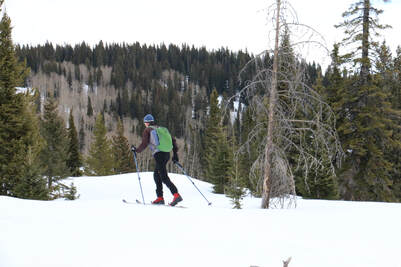 Myth: No-wax cross country skis don’t need wax. False. A "No Wax" ski is an unfortunate description. XC skis that have a fish scale pattern that provides the "kick" help you glide forward. The pattern does not require kick wax. However, these skis will benefit from glide wax. There are many brands of liquid glide wax that are easy to apply and will enhance your XC ski day. Apply a liquid glide wax from tip to tail right through the "no wax" pattern. This will prevent the ski from icing up or glomming up with packed snow. Glide waxing your "no wax" skis will keep you skiing and very happy. Myth: If it's cold dress in as many layers as you can to stay warm. False. We recommend you dress for your winter activity not necessarily the weather. On a cold day a snowshoer or XC skier may dress pretty light with minimal breathable layers while a downhill skier may layer up significantly more including jacket and pant shells that are both windproof and waterproof. An aerobic activity will produce more consistent body heat than perhaps a downhill skier who has to also dress for a cold chair ride up the ski hill. On the same cold day, playing at different winter activities, you'll benefit with different layering options.  Myth: Cold is cold no matter what. False. It's funny to think about a 32 degree day in October feeling really cold and a 32 degree day in January feeling down right balmy! If time is relative so is cold. Sunshine, clouds, wind, and humidity all play a role in how cold a day feels. Be active all winter long and embrace the season no matter what the thermometer says! Myth: There are less hours in a winter day with Standard Time. False. Switching from Daylight Saving Time to Standard Time in November does not reduce the length or hours of a day. We heard a Denver weather forecaster misspeak on air before the Winter Solstice and say “since there are less hours in the day the sun is setting earlier.” This drives us crazy and often folks blame Standard Time for the reduction of daylight in the winter. This natural earth science event will occur whether we are on Standard Time or Daylight Saving Time. The point is to make as much of a winter day as possible. And that can include wearing a headlamp and going for a snowshoe tour at night! 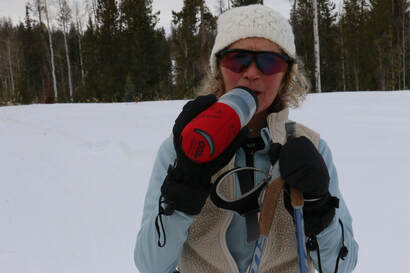 Myth: You don’t need to hydrate as much in winter as in summer because you don’t get as hot or thirsty. False. You need to hydrate equally all year long. And, hydrating in winter will actually help keep you warmer. Bring along a thermos filled with a hot drink on your winter excursion. The warmth of the drink will fill you with a very cozy feeling filled with gratitude for winter! Myth: Alcohol keeps you in warm on the trail in winter. False. The opposite is true. Alcohol drops your body temperature. Drinking alcohol may make you feel warm outside in winter because it causes blood to rush to your skin’s surface. This causes your blood vessels to widen and makes you lose heat faster. The best place to partake in an adult beverage during winter is at the end of the day, inside sitting in a comfortable chair beside the wood stove, sipping your libation in moderation and trading stories about the day’s adventure. Myth: You lose tons of body heat through the top of your head. False. While it is smart to always wear a hat outside in winter you lose only about 10% of your body heat through your head. 10% is not very much but who wants a cold head in winter anyway?. Just wear a hat no matter how little body heat you lose from the top of your head. And by the way, wearing a hat and protecting your ears from frostbite is a smart thing as well. 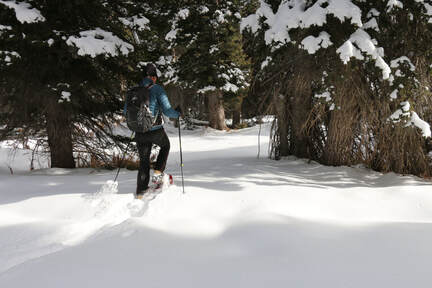 Myth: XC skiing and snowshoeing are boring. False. “We just went for a snowshoe tour.” I use to hear this disparaging remark often when I worked retail in a mountain shop. This phrase, with the emphasis on "just" discounts these activities as if the only worthy winter sport is downhill skiing. In fact, xc skiing and snowshoeing are equally as exciting or even more so. Hands down these two winter activities provide a major boost to your overall physical and mental health. They provide a great cardiovascular workout increasing heart and lung health. And, arguably, they allow you to connect with nature in a more significant way by slowing down and acknowledging the beauty surrounding you. 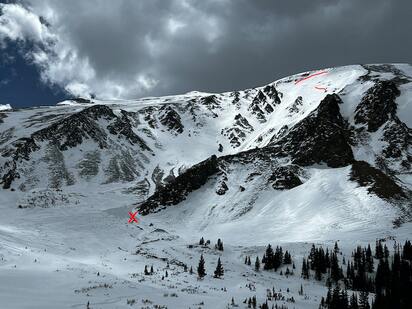 Photo: CAIC Photo: CAIC Myth: If avalanche risk is rated at low or moderate you can ski or ride anywhere. False. Always keep your guard up when traveling through the backcountry whether you are snowshoeing, skiing, snowboarding, or hiking. Avalanches can occur year round. A reduced risk does not eliminate risk. Take avalanche awareness courses to educate yourself and your backcountry partners. Be aware of the overall avalanche danger by checking the CAIC website. And always play it smart. Myth: If avalanche risk is rated at high or extreme stay out of the backcountry no matter what. False. There are many places that are safe to travel in the backcountry when conditions are ripe for avalanches. It is easy to avoid avalanche terrain. Stay on flat or very low angle terrain. Tour through wide open meadows. Avoid all suspicious slopes. Be aware of potential avalanche terrain above you. You may be on flat terrain but what do the slopes and ridges above you look like? Avoid terrain traps where an avalanche (big or small) might trap you. Do not take unnecessary risks, stay off all slopes that look suspicious. Typically when avalanche risk is at its highest the winter weather is at its stormiest. While it can be fun to ski or snowshoe during a winter storm take all precautions to stay safe and warm so you can and enjoy many winter days to come! Myth: Winter can be enjoyed each and every day. TRUE! No matter the weather, no matter the outside temperature or wind speed, no matter how deep or thin the snowpack might be, no matter if the sun is shining or the day is cloudy, no matter how old your winter equipment or clothing is, or if you live in the country or city... Winter can be enjoyed each and every day by acknowledging its beauty and in turn, knowing it is another great day to be outside!
What month is this? August? But it’s so cool and moist and green. However, there are signs that we are getting into the latter part of summer. The chartreuse green of spring aspen leaves have darkened to a deep emerald, large and shimmering in the summer breeze, while the tall grass sway with ripening seed-heads. I have observed the transition into late summer wildflowers and watched the streams lose their torrential flow. Lately, the weather pattern has brought us a heavy layer of California wildfire smoke, which is a strange mix with the cool moisture. Other than the hazy skies, it feels like a normal summer, which seems abnormal compared to other parts of the west this year. Is it even possible we might make it through the rest of the summer without some sort of cataclysmic event?
Fern Lake is a moderate 3.8 mile hike. While much of the hike sees a gradual increase in elevation, there is about a mile and a half in the second part of the hike where the trail switchbacks up a north facing slope, with Fern Falls midway at one of the switchbacks.
Once the trail begins its steady climb across the north facing slope, I remembered the shaded spruce and pine woodland environ with sun filtering through onto open forested terrain with a low growing but rich ground covering. I remembered how tall and slender the trees were with downed timber rotting and adding organic material to the thin soil. This was a favorite stretch of the trail for me. I walked up the slope in silence, overcome by how barren the landscape looked. Charred trees stood with bare branches, devoid of life. The morning sun blasted through, baking the ground. The ground lacked any cover, excepting for occasional patches of blooming Arnica, their happy yellow flowers loving the sun but seemingly out of place. I make the turn at the first of three switchbacks and follow the trail east and towards Fern Falls. I’ve been curious to see how barren thing would look around one of the Park’s few notable waterfalls. The falls were always a fine respite mid-way up this part of the trail with the cool misty spray from the falls refreshing the laboring trail traveler. I feared something of its charm would be gone.
Walking silently along this last stretch of the trail before reaching the lake, I thought about the storied history of this trail dating back a little over a hundred years ago. This trail is one of many trails in the Park that qualify under the National Register of Historic Places. Back in the very early 1900’s, tourism was at its beginnings in the region. A newly formed Estes Park Protective and Improvement Association was constructing a permanent trail to Fern Lake. By 1910, Dr. William Workman was busy building a Lodge at Fern Lake and by the 1920’s, the Colorado Mountain Club made annual winter trips to the Lodge. The local newspaper, the Estes Park Trail, reported in March, 1925 that as many as 100 CMC members were showing up for a “ten day frolic in the snow” using the lodge as a base. Ski runs and jumps were reported built for many of these events. That same year, a Park Patrol cabin was built adjacent to the lodge.
“Our memories float over the spring run-offs and the sunsets and sunrises as hikers take to the mountains to see the Columbines and Paintbrush, the leaping trout and the nutcrackers and Rocky Mountain bluebirds,” Ms. Collins recalled that summer in a 2016 facebook post. “The Lodge where we worked, I baking bread and pies on a wood stove and slept down on the river bank, are all gone, but the memories live on.” The Lodge closed for good the following year and sat vacant except by vandals before the Park finally removed it in 1976. Only the 1925 Patrol Cabin remained, and now that too is gone, one of the many casualties the Park endured from the East Troublesome Fire last October. Finally having reached the lake and standing in the very place where the Lodge once stood, I could see how the path of the fire split and pushed around the lake with one leg of the fire coming in from the northwest, engulfing the Patrol Cabin, and then skirting the western shoreline before racing east across the hillside that separated Fern Lake from Odessa Lake and heading up Mt Wuh, leaving the south and east shoreline mostly untouched. I wandered down to the footbridge that crosses the outlet stream. Standing in the middle, I gazed into the clear mountain water of the little outlet pool surrounded by green vegetation and reflecting Notchtop Mtn above. The view across the lake was a mix of green and brown/black, but still an inspiring view. I decided to hike the additional 0.7 miles to Lake Odessa. Walking through another charred section of the trail, I observed the trail work that the Park described in their Historic Places report as, “some of the largest and most complex rock walls in the park and utilized Civilian Conservation Corps (CCC) labor.” What a relief when I finally I crossed out of the fire zone and back into beautiful subalpine terrain, walking along a cascading mountain stream with lush green ground cover and green forested hillsides spectacularly framing Notchtop on the path to Odessa Lake. Snacking on the lake shore along with other hikers that had dropped into this paradise on the trail from Bear Lake, I took in the quiet, watching small wispy clouds float along. This was truly Rocky Mountain splendor. The weekly spring snowstorms rolled in like waves crashing onto the beach and like a surfer watching to ride the crest, I watched the weather to catch the sunny days. It was getting into the latter part of May and while we had been getting a few warm days causing the snow to begin melting off the trails, just as quickly the springs snows were adding inches back on. On this day, the trail remained snow-packed in the shade of the trees, but the summer sun was having it's effect and some areas where the sun could reach were snow free. The trail gradually climbs 500ft for the first mile, then drops 250ft the next 1/2 mile, before rising 600ft for another 1/2 mile to Storm Pass. The last seven tenths of a mile climbs 750 before obtaining the summit of Estes Cone at 11,006ft. (Continues below) Watch the video: Subscribe to the Rocky Mountain Day Hikes YouTube Channel: Click Here (Maps from GPSMyHike. To download GPSMyHike onto you phone, Click Here)
"Spring is when you feel like whistling even with a shoe full of slush." - Doug Larson Twin Sisters Mountain: East Summit 11,428 feet West Summit 11,413 feet 7.5 miles round trip 2,253 feet elevation gain Go to the Twin Sister Trail Profile in the RMNP Trail Guide by Trail Correspondent, Marlene Borneman May 1 is tied to folklore as well as historical significance. In some countries it is a celebration of laborers similar to our Labor Day in September. I remember May baskets and dancing around the maypole celebrating the return of spring. My husband and I started the month of May by hiking to the summit of Twin Sisters Mountain. This mountain has two distinct summits giving its name. The established trail leads to the west summit, the lower by fifteen feet. The day was a warm fifty-six degrees with clear skies and only a few cars in the parking lot at 6:30 a.m. April and May are mud season months as snow is rapidly melting with warmer temperatures; spring conditions. We walk a short distance on the snowy/muddy road leading to the trailhead kiosk. We found the trail snow-packed with a soft crust so no need for snowshoes or micro-spikes, however trekking poles were helpful.
Once across, the route becomes steep and indistinct in places. It is here we encountered some ice, cautiously take baby steps to avoid slipping. After a couple of short switchbacks we re-join the original trail. Near treeline I see a familiar old snag “waving” us to a favorite resting spot; a smooth, large dead log. After enjoying a snack and water we return to the trail hiking through a subalpine fir forest. Subalpine refers to a transition zone between thick forest growth shifting to stunted small trees then to treeless alpine tundra. Fir trees are commonly seen at this altitude. They are sometimes called “friendly” firs as their needles are soft to the touch. Suddenly, we break out of the trees where the trail cuts across a rocky talus slope, snow covered in these spring conditions. A couple more switchbacks brought us to the saddle between the two “sisters.” Here a stone hut and a radio communication tower stand which are still used today for emergency purposes. We stay right of the stone hut then turn slightly left up a small gulley. Scrambling up the rock outcroppings we work our way up to the western summit. A fire lookout tower used to rest on the summit but now just a bit of history as it was taken out in 1977. A commanding 360 view lies before us: Longs Peak, Mummy Range, Continental Divide, Estes Valley, the plains to the east, to the south Mount Evans and Pikes Peak. The summit was all ours for a brief time, but soon we made room for other hikers to enjoy this spot of earth. We headed down for lunch near the stone hut gazing over to the eastern summit. We decided to forgo the east summit and retrace our steps back in the snow. The snow had softened so much we could easily “boot-ski” to timberline! The snow had also melted considerably at the end of the trail leaving thick, sloppy mud behind. Mud season 2021 had officially arrived! RMDH Trail Correspondent Marlene Borneman has climbed Colorado’s 54 14ers, the 126 USGS named peaks in Rocky Mountain National Park and 44 State High Points. She has been a member of the Colorado Mountain Club since 1979 and is a member of the Colorado Native Plant Society. Story and photos by Barb Boyer Buck Back on skis after 20 years! I broke my back 21 years ago. It was a fracture which resulted in spondylolisthesis and it brought on years of physical therapy, chiropractic treatments, loss of mobility, and pain. It was the time when orthopedic surgery was very much feared, and outcomes were relatively unpredictable. It was also the time when conservative treatment was recommended and surgery was avoided at all costs. I was told to give up skiing altogether, and especially snowboarding. "One wrong fall and you could be paralyzed," was the doctor's advice. Pretty scary stuff. But by 2018, I could barely walk, had to quit my job waiting tables (which supplemented my writing career) and I had pretty much given up most of the things that gave me pleasure, most notably outdoor recreation in the form of hiking and of course, skiing. I finally went to an orthopedic center to have an x-ray. After seeing the results, the surgeon scheduled me for an emergency 3-level spinal fusion the very next week. I can see why people avoid this surgery, recovery was long and extremely painful. To make a living, I crocheted and sold hats. It was incredibly boring, to say the least. But today, I am almost back to normal! So, I decided to try cross-country skiing again, something I had enjoyed for many years before my back injury. Dave Rusk, the publisher of Hike Rocky Magazine and an extremely patient man, agreed to accompany me and give me a refresher lesson. Here's a video of that day, which took place on March 1 of this year. We rented equipment from the Estes Park Mountain Shop, and I was very pleasantly surprised at how far cross-country skis had come! I definitely want to get the kind of skis I was using that day. In order to get the most out of my "lesson," I needed to start from scratch. The patience I had developed during my nearly three years of recovery helped with this. I approached xc skiing as if I had never done it before and thereby, I was able to take advantage of tips that Dave provided. First, I want to talk about the equipment. These days, you can opt for skis that have scaling on the bottom of them, where your boots clip in on the other side. This helps you when going up inclines - you can literally walk on the snow with them. Technically, they are called backcountry skis and you can "walk" up slopes and ski down them, which many people like to do at Hidden Valley. I'm not ready for that yet, by the way. Marlene Borneman explains about these type of skis in her piece, "Ski tracks in Rocky," published in the February, 2021, edition of HIKE ROCKY magazine. It's so much easier than waxing skis, or even putting on skins when you are doing a cross-country tour on sloped trails (most of the trails in Rocky Mountain National Park are sloped, by the way). The bindings on these new skis are so convenient. You can just toe-kick into them, and twist to take them off. I rented the entire package, which included poles and boots, too, for about $20. The place we chose for my first time back was Endovalley; the road to the picnic grounds is closed for the winter and can be used for skiing, snowshoeing, or when the snow melts off, walking. It extends past the Fall River Road fork and ends at the picnic grounds. The road is fairly level. I put on my skis just after the "road closed" gate and tried to recapture the feeling of skiing by taking a few tentative kick/glides. On the newer skis, it felt more stable.
If I stood straight, putting my full weight on the middle of the skis, they stopped sliding and I could "walk" on them. In order to ski, I needed to learn forward slightly, bend one knee and kick backward, with the other leg extending out. Alternating legs, eventually I started to feel a rhythm and began gliding. When I started to feel unsteady, I just straightened up again. This was a big difference from the skis I used to have; my cross country skis from the late 80s were much more narrow with very smooth bottoms. Stopping was always an adventure on those. The poles helped keep me steady, too - these need to fit into your hands while your elbows are bent at a 90-degree angle. Skiing on the road was a bit difficult because it was icy in spots and melting while we were on it. As you learned in the above video, the only time I fell was when I tried to ski off the road to a picnic bench, missing a turn on the slight downhill slope. It was a wonderful adventure and even though I'll probably need to wait until next year to do it again, I'm looking forward to it! |
"The wild requires that we learn the terrain, nod to all the plants and animals and birds, ford the streams and cross the ridges, and tell a good story when we get back home." ~ Gary Snyder
Categories
All
“Hiking -I don’t like either the word or the thing. People ought to saunter in the mountains - not hike! Do you know the origin of the word ‘saunter?’ It’s a beautiful word. Away back in the Middle Ages people used to go on pilgrimages to the Holy Land, and when people in the villages through which they passed asked where they were going, they would reply, A la sainte terre,’ ‘To the Holy Land.’ And so they became known as sainte-terre-ers or saunterers. Now these mountains are our Holy Land, and we ought to saunter through them reverently, not ‘hike’ through them.” ~ John Muir |
© Copyright 2025 Barefoot Publications, All Rights Reserved


